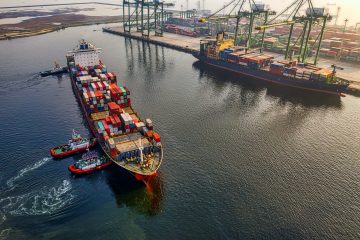Introduction
For the last couple of years, I have been working as a research technician in the environmental science department at the university of Liverpool. A lot of my job involved lab work, working with academics and students, prepping field work, using and managing specialist equipment, and some external client work but one of the more exciting aspects of my work involved supporting research trips as a field assistant/technical staff.
My most recent trip took place in the Amazon in the lesser-known country of French Guiana and is definitely my most exciting trip yet. This research trip was led by an academic in the department who focuses on tropical ecology and the study of the dynamics of the Amazon rainforest. This particular project focused on collecting hyper spectral data of the most common species in the Amazon (they make up about 20%) in order to classify and identify species in the future based on their unique spectral signature. To do this we were joined by a team of two technicians from the Field Spectroscopy Facility in Edinburgh which is a NERC (Natural environment research council) funded institution that specialises in collecting spectral data and loaning out specialised equipment to researchers in the UK.
This trip lasted about a month and introduced me to an entirely different world of things I had never experienced before. In this article I’ll talk about the field work and research we did, the places and things we saw, and my experience going to the Amazon for the first time.
French Guiana
Before I get into the specifics of the trip, however, I’d first like to talk a bit about French Guiana. I must admit, despite being from Trinidad, studying environmental science, and having what I think is a precent decent knowledge of geography and the world, I didn’t know this place existed. I knew about all the countries that surround it and every other country on the continent but this one escaped my knowledge for some reason. I will give myself some leeway however, as the more I learned about it, the clearer it became as to why I hadn’t heard a lot about it.
While it is geographically in South America, French Guiana is officially part of the European Union as it is an overseas territory of France. They speak French, have left hand drives, and vote in French general elections. From talking to the locals, I was unsurprised to find out that French Guaina doesn’t have a lot of direct contact with other South American countries as travel and trade are very difficult due to the fact that it is France, and all their laws and customs are French. This means that everything must flow through France and be approved by the French government.
French Guiana is, however, an extremely interesting place and, having researched it in preparation for the trip, I became more and more excited to go the more I learned. More than being part of France, French Guiana contains the Amazon rain forest which covers 95% of the country (more than 8 million hectares) and is home to more than 1,200 species of trees. It is also home to many amazing types and species of flora and fauna and has exceptional marine biodiversity being home to around 40 different species of fish. You can find all the amazing animals you would expect to see in the Amazon here such as jaguars, alligators, and monkeys and the natural environment is extremely impressive and well maintained.
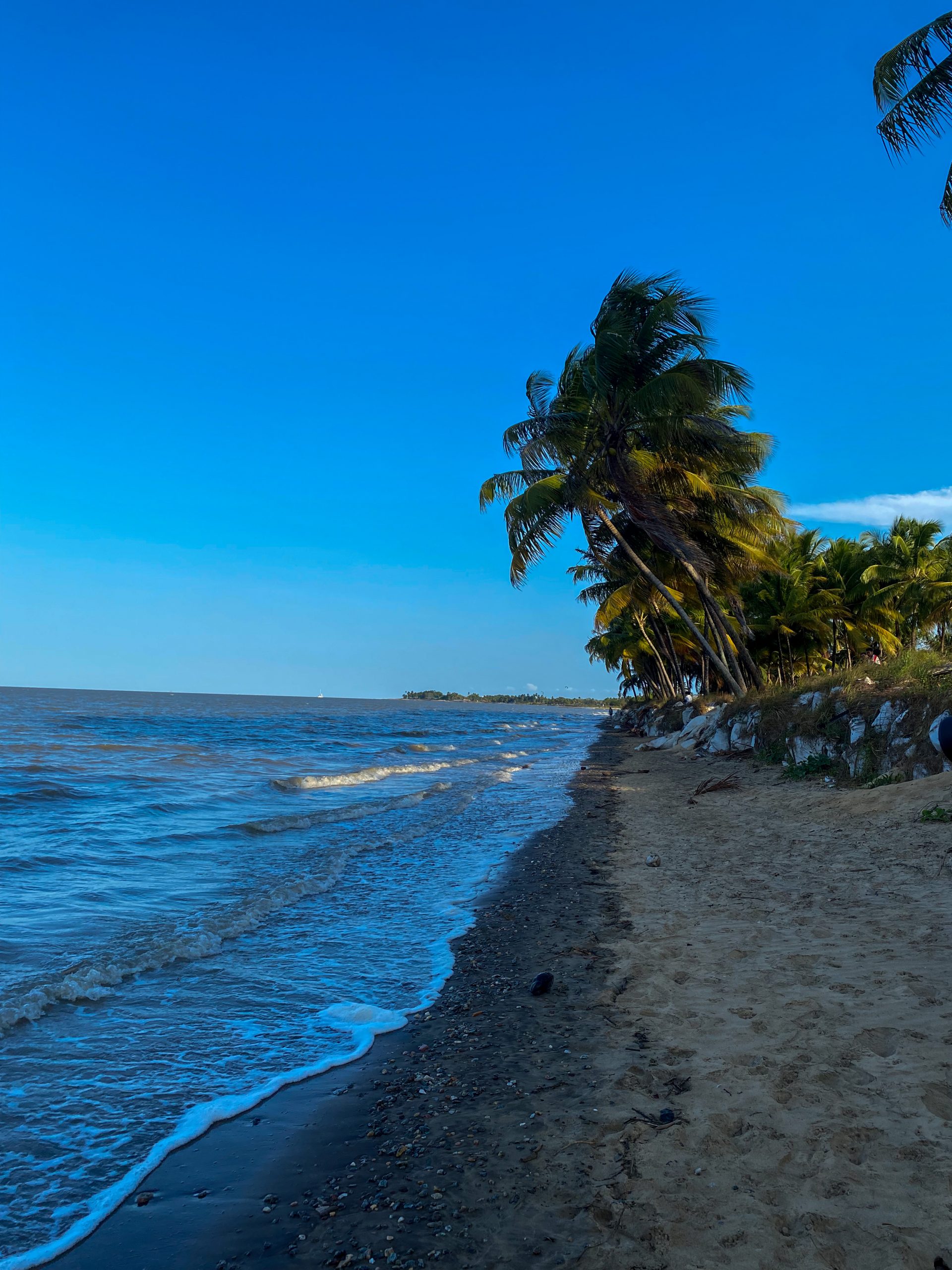
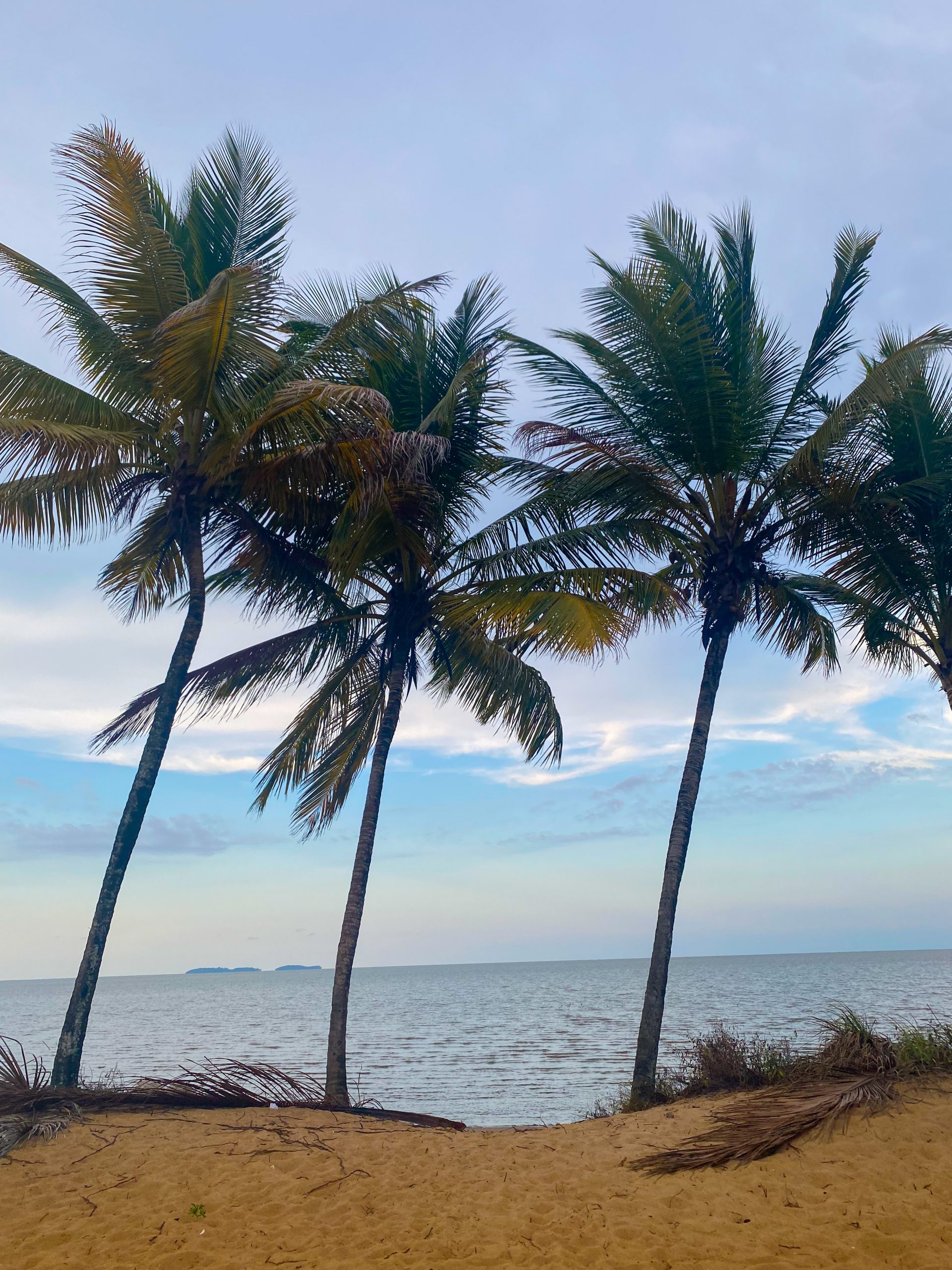
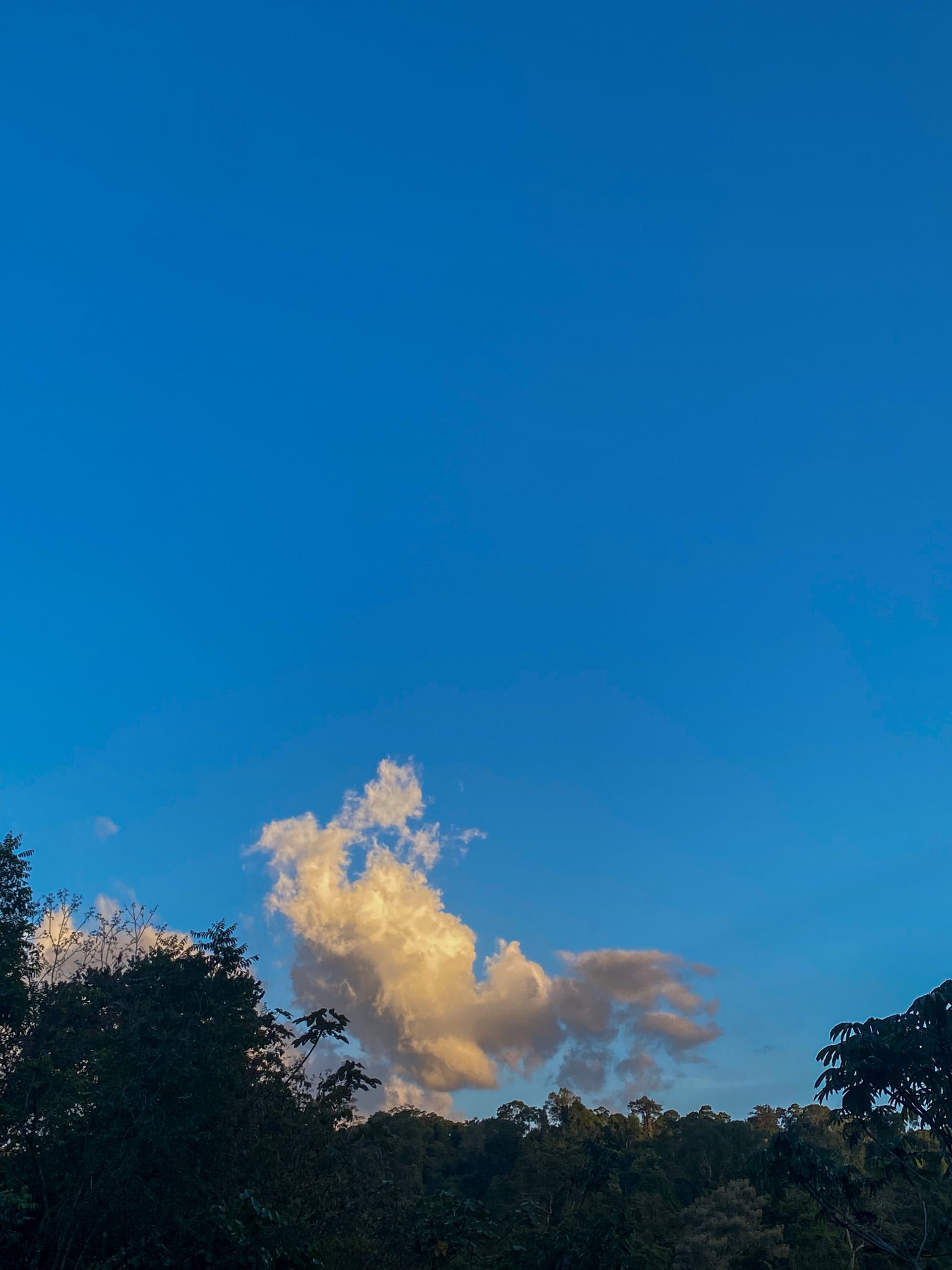
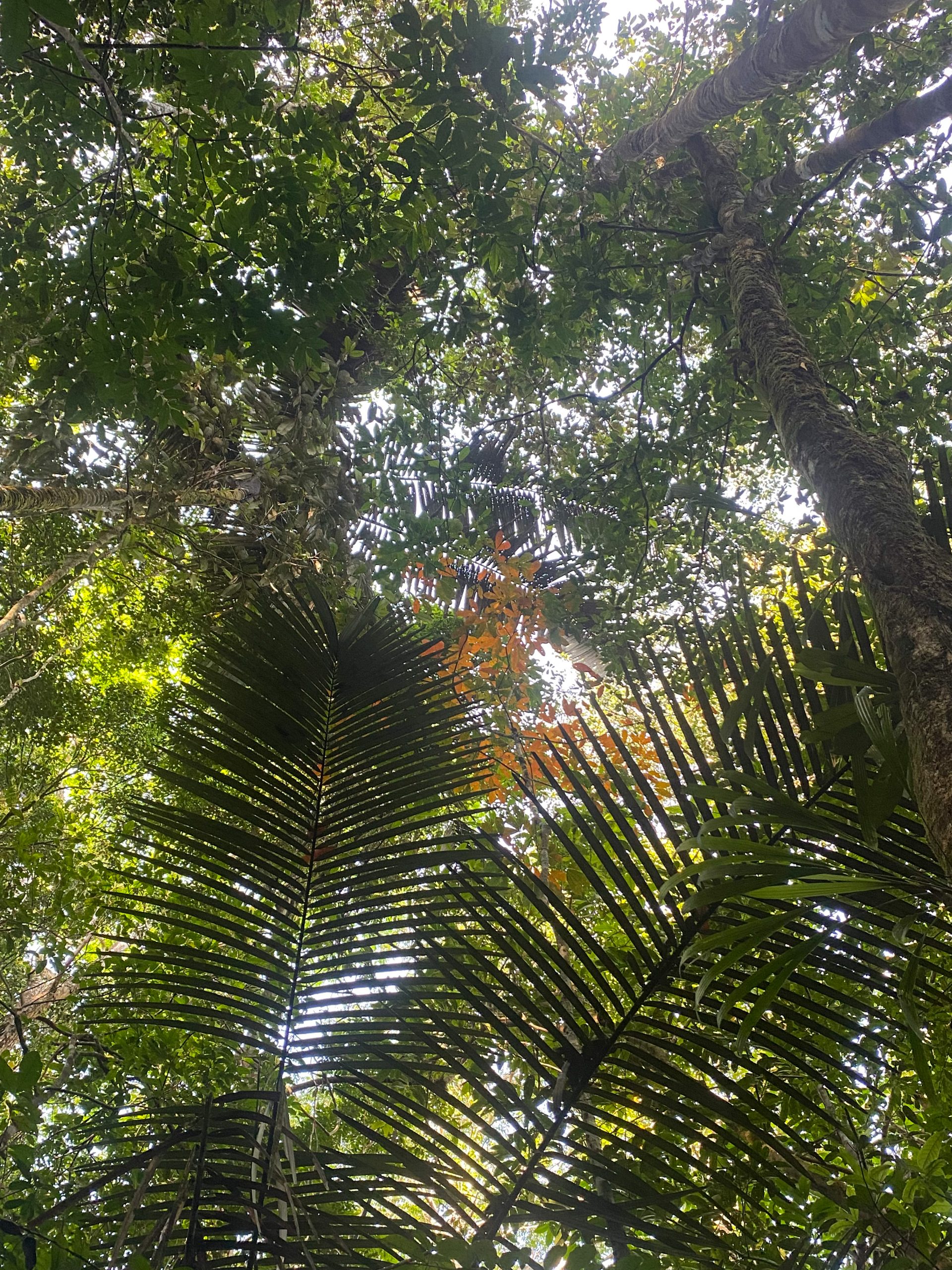
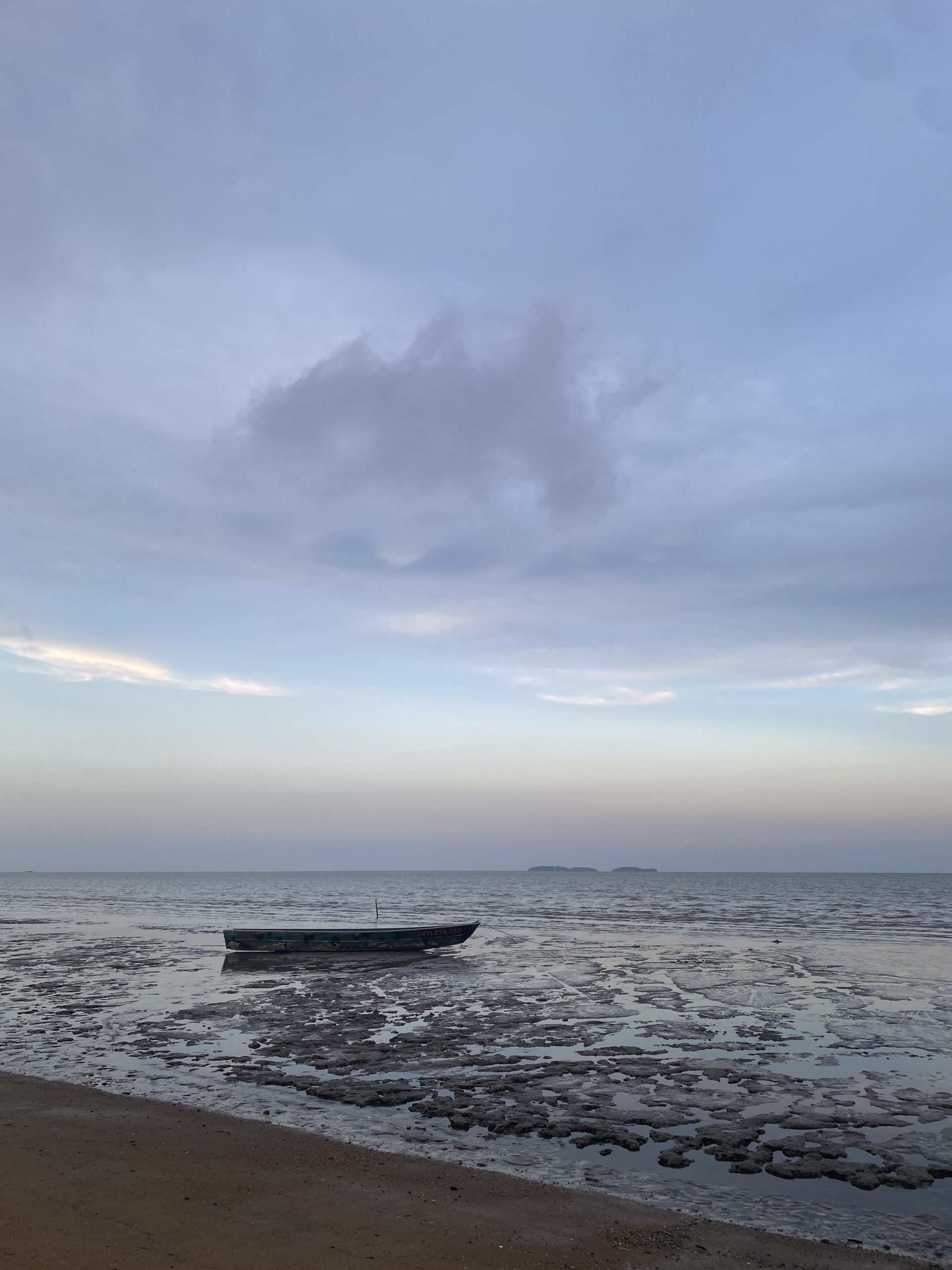
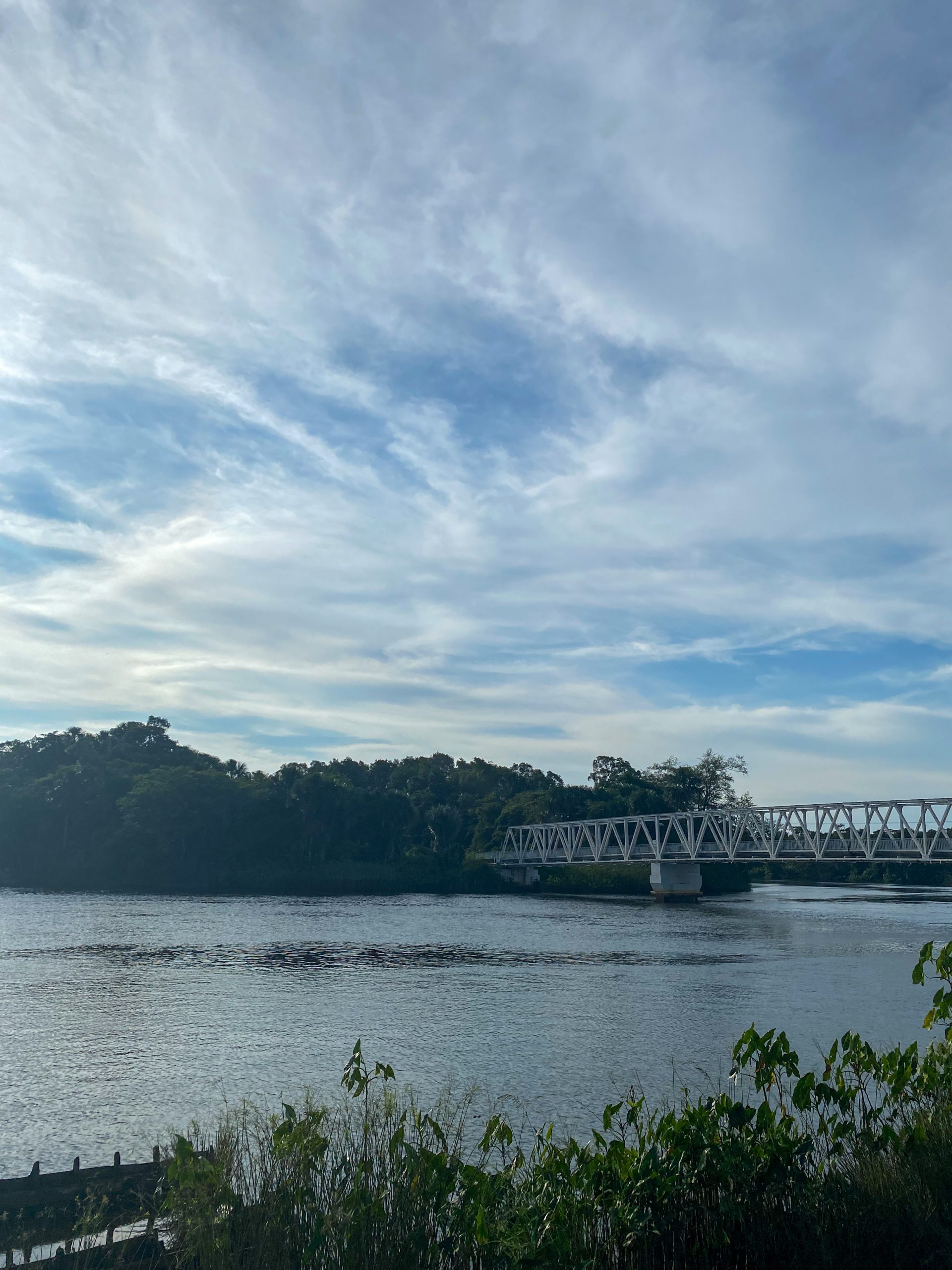
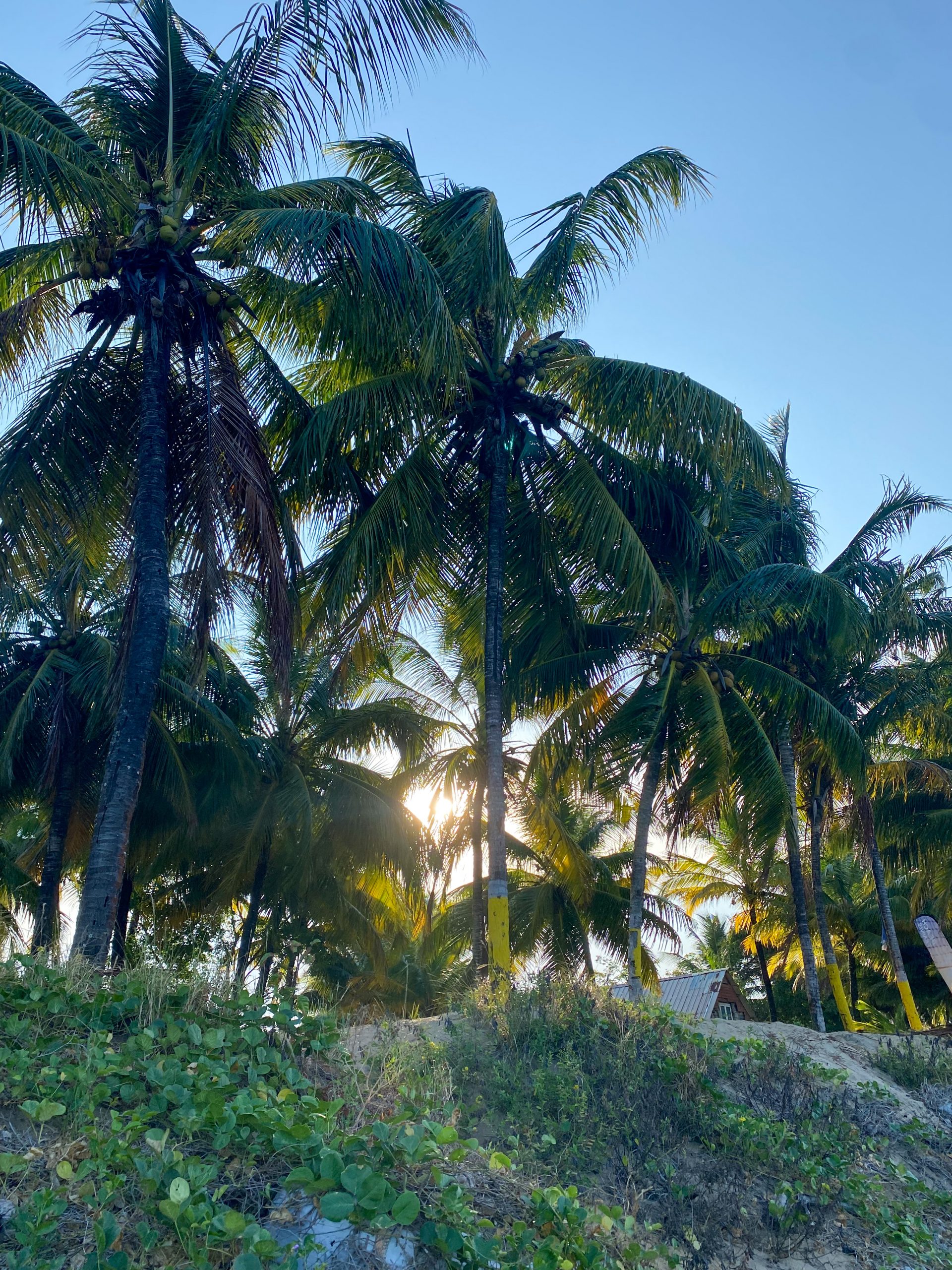
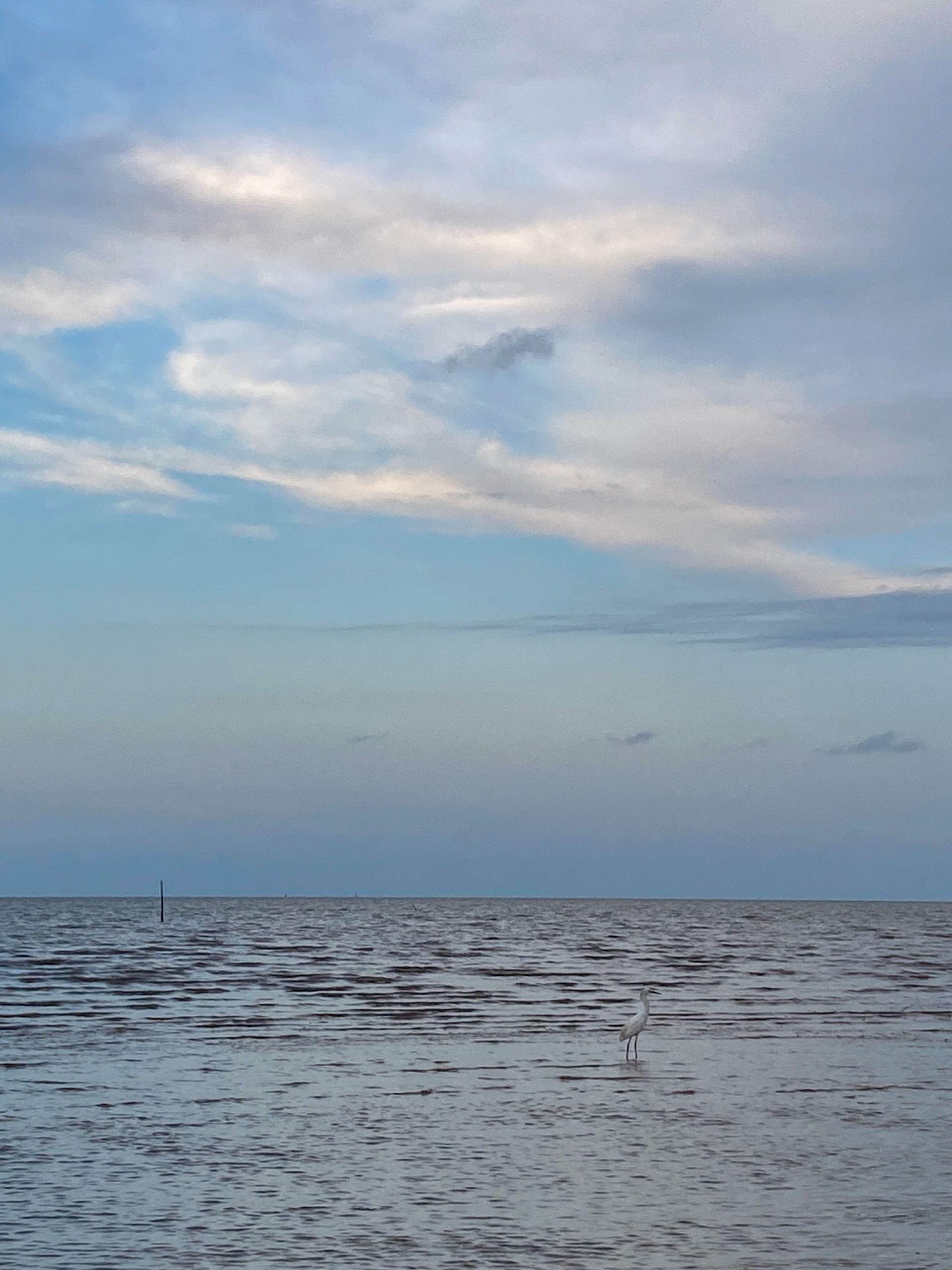
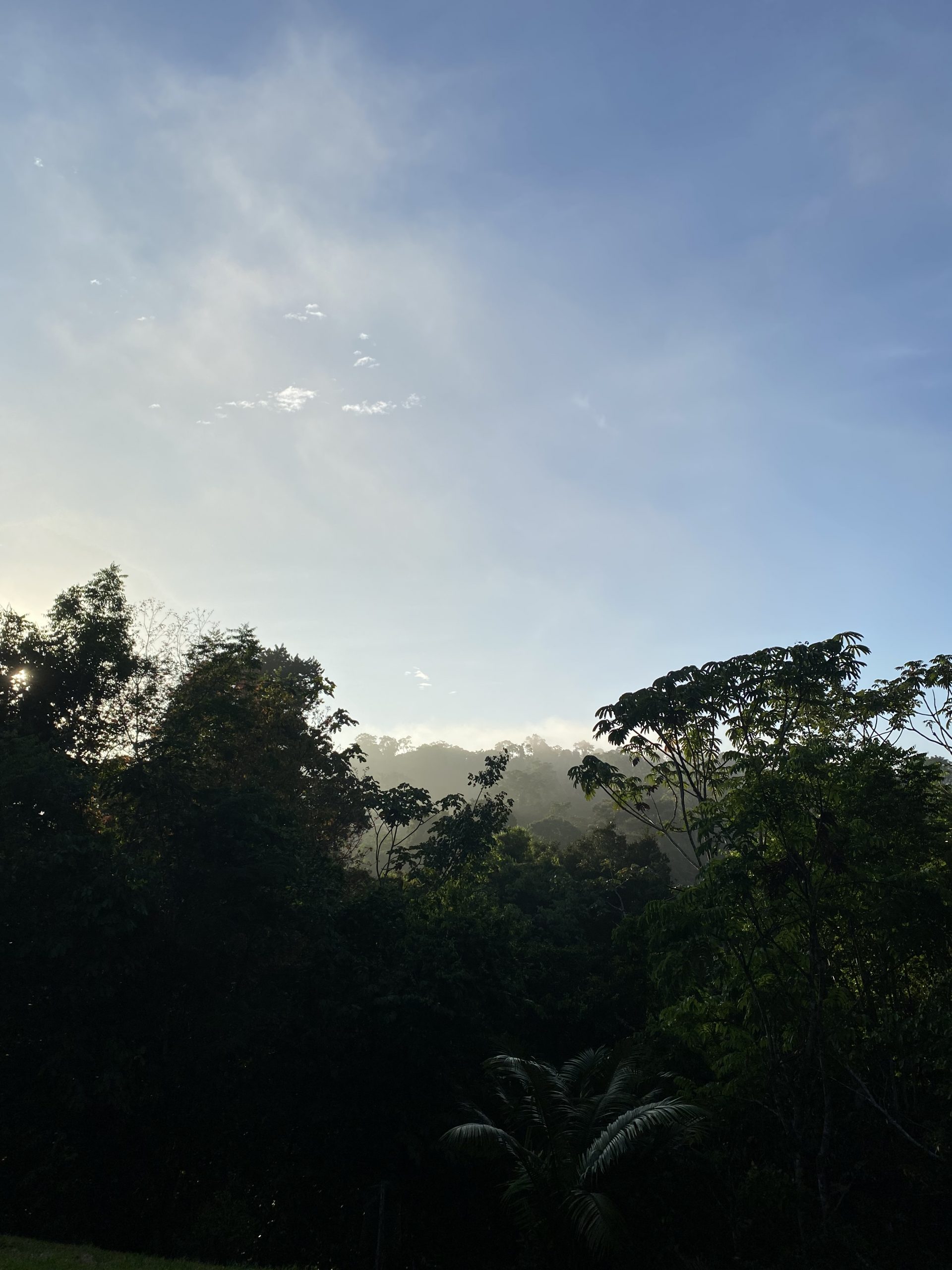
Located on the northern tip of South America, French Guaina is bordered by Suriname and Brazil, with its capital city (Cayenne) containing the majority of the population. The city, and much of French Guiana, still has an old colonial look about it in terms of the buildings and architecture, and the general vibe of the island was very reminiscent of islands in the Caribbean in my opinion. While in French Guiana we visited many of the main towns such as Korou, Cayanne, and Sinnamary, as well as the two research sites of Paracou and Nouragues.
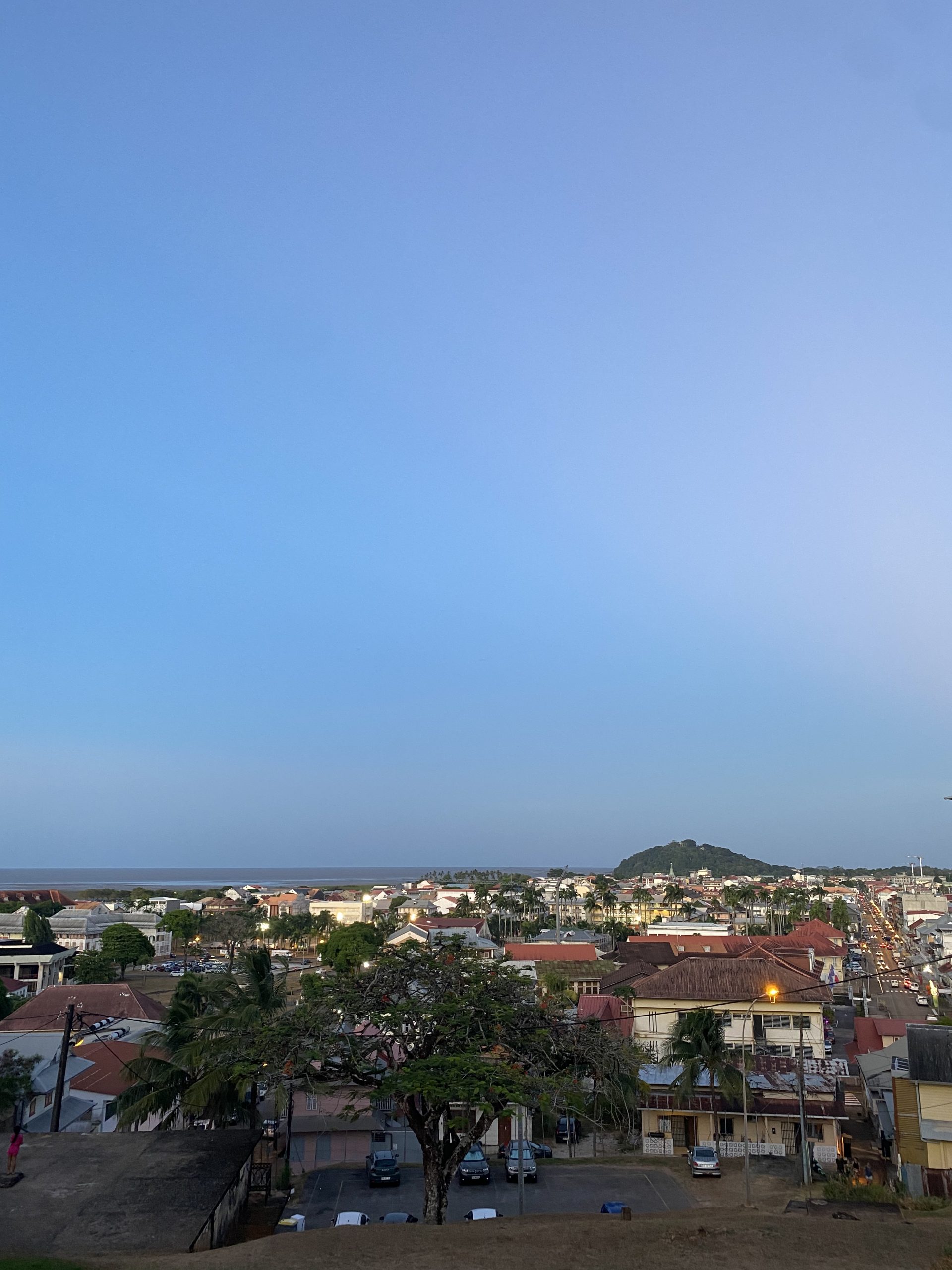
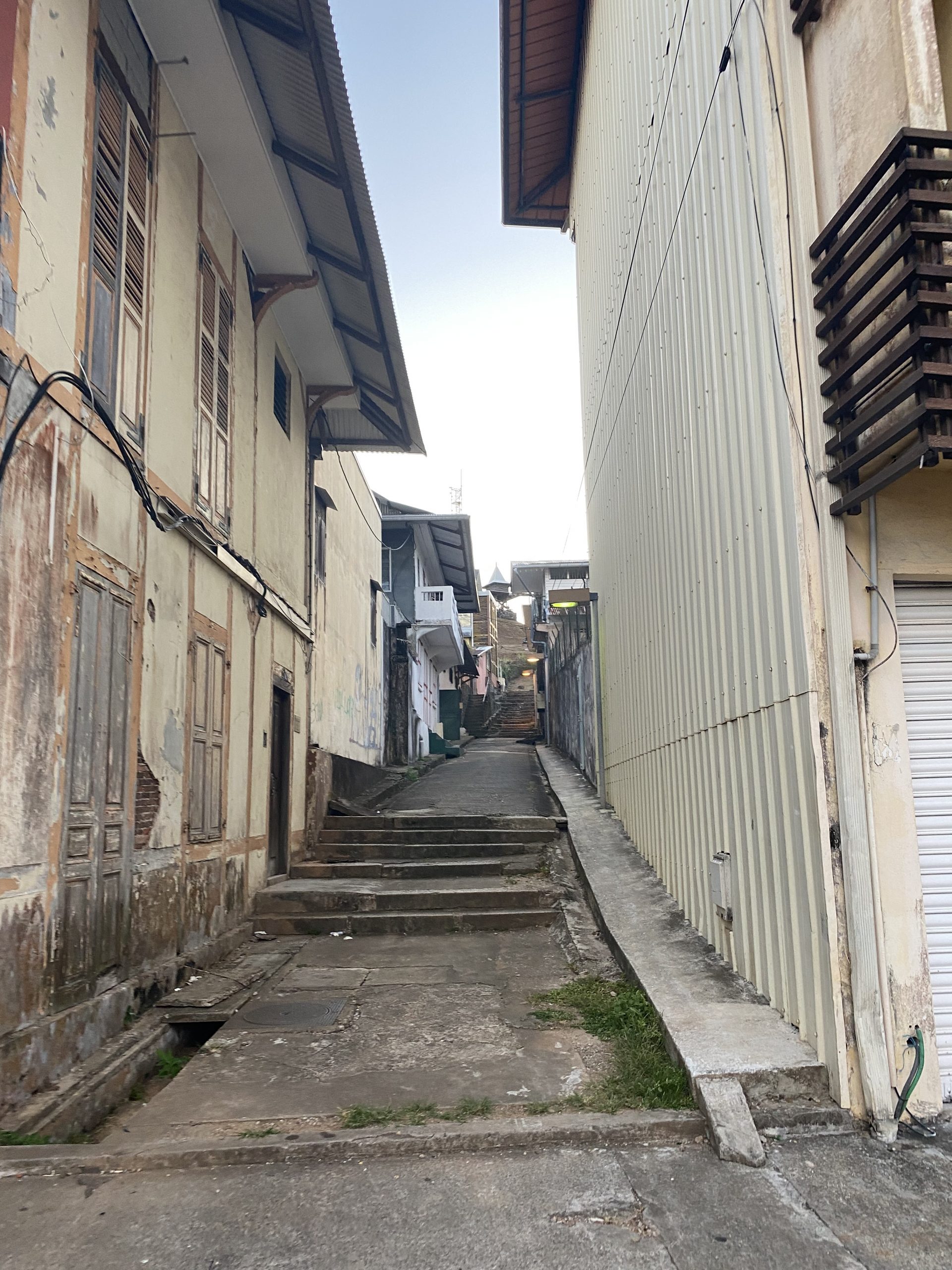
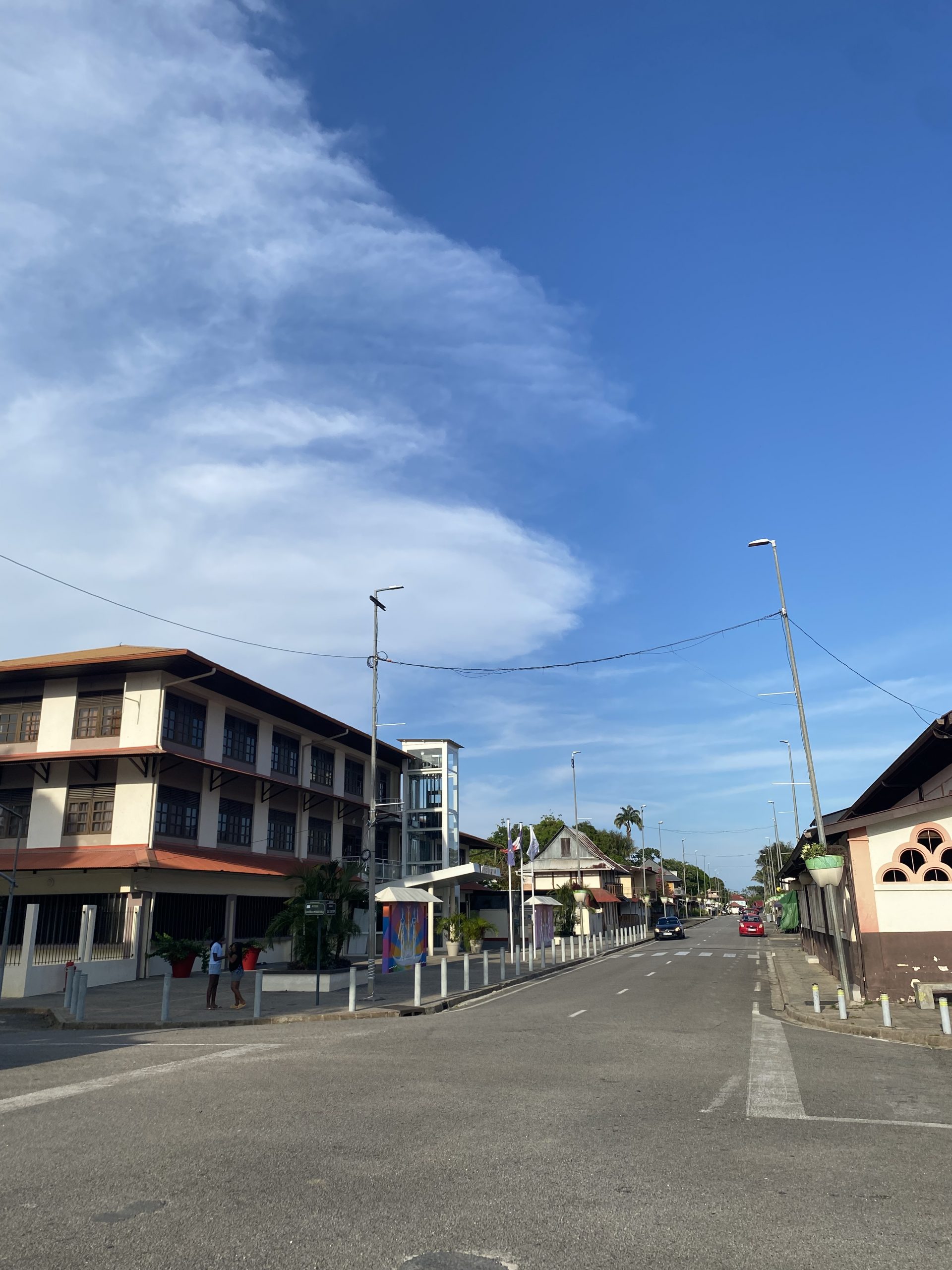
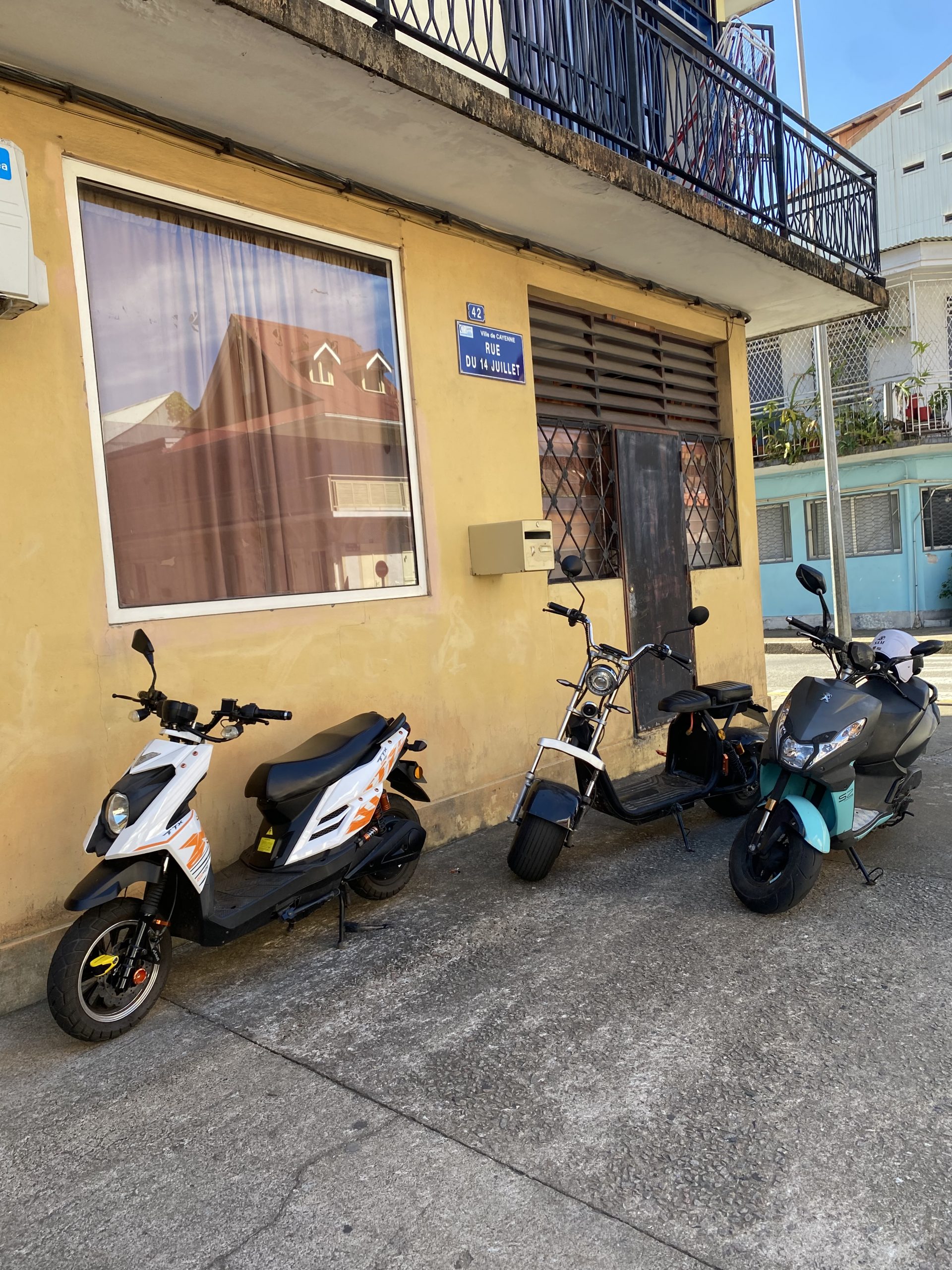
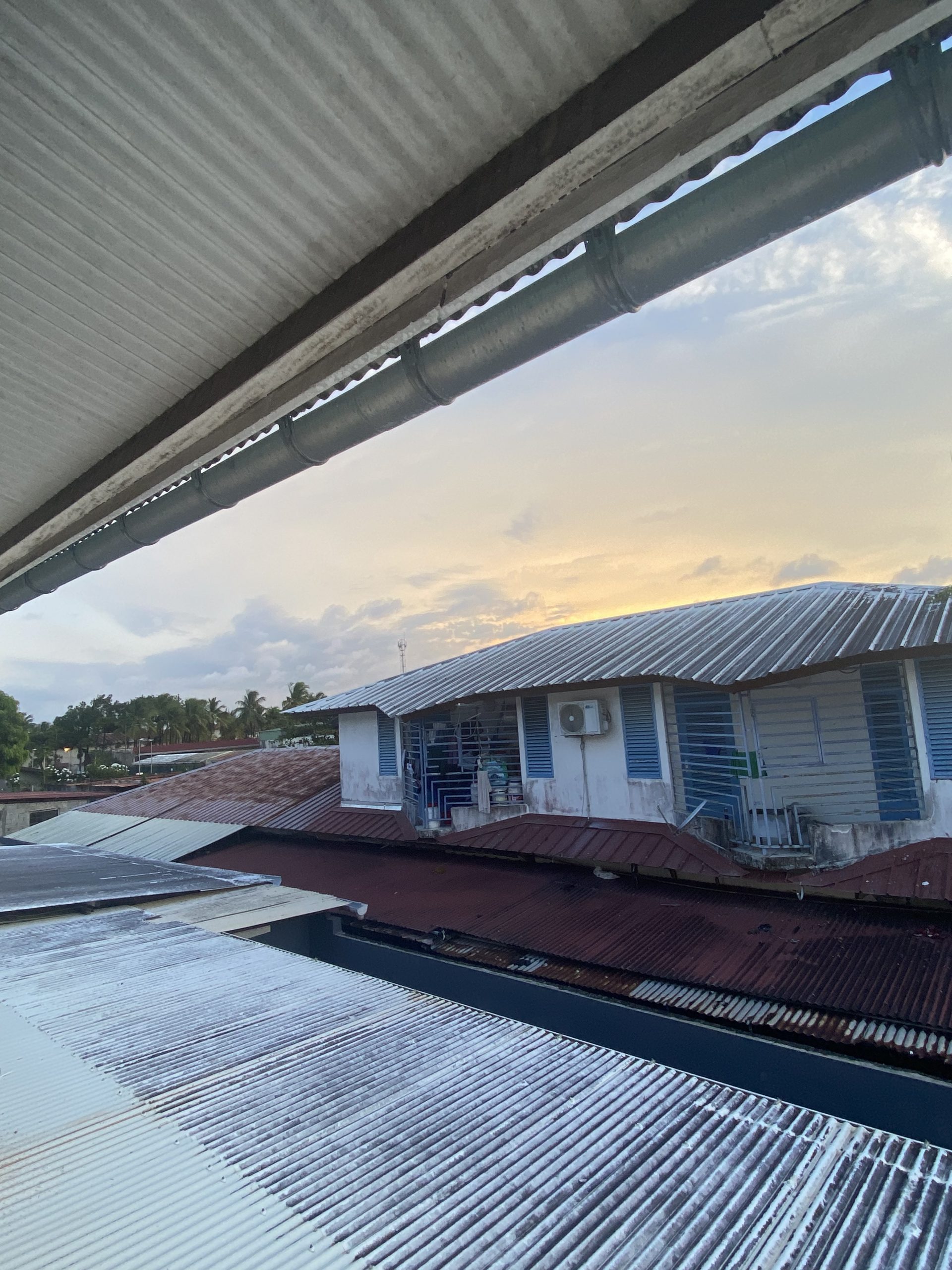
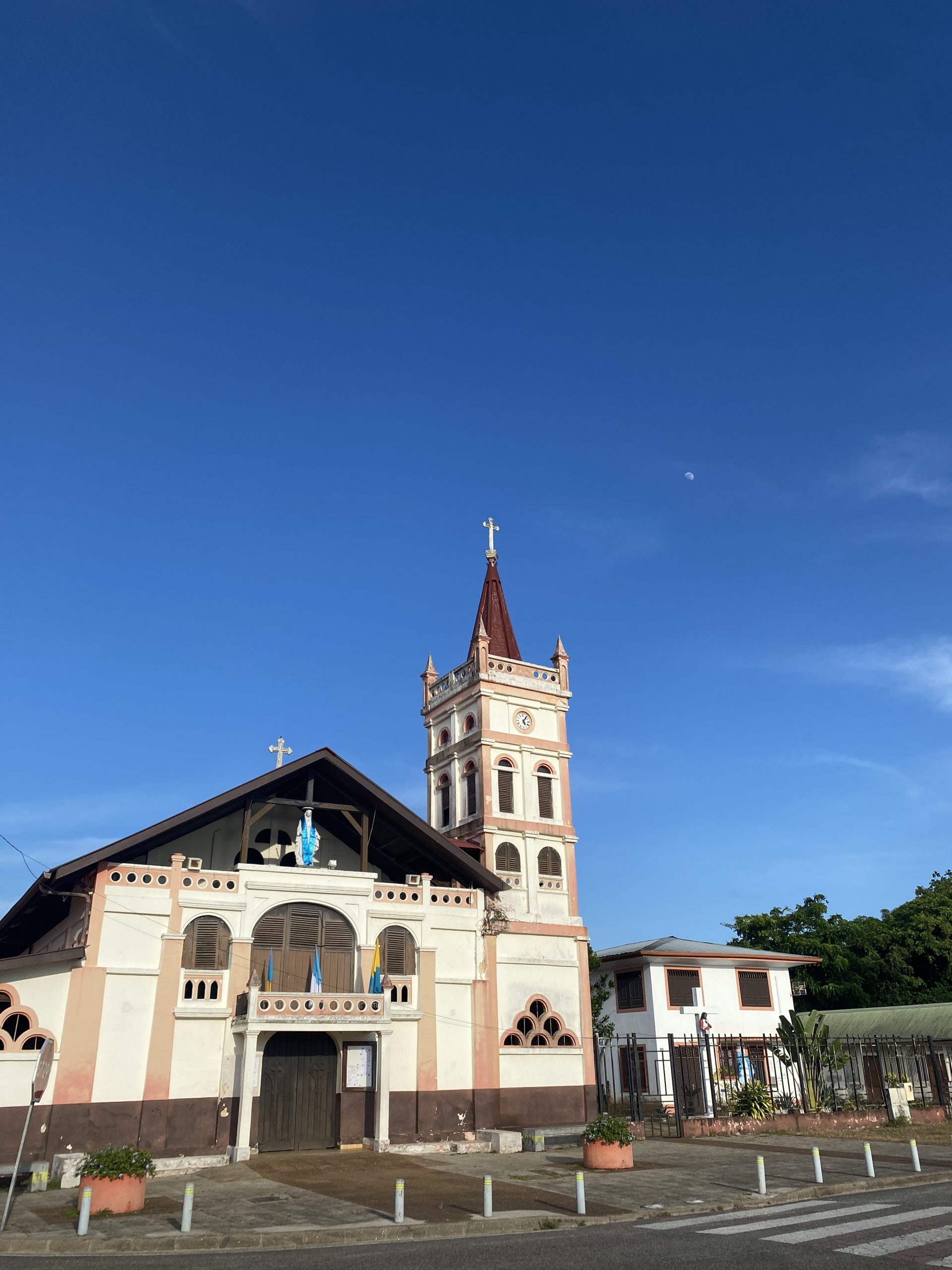
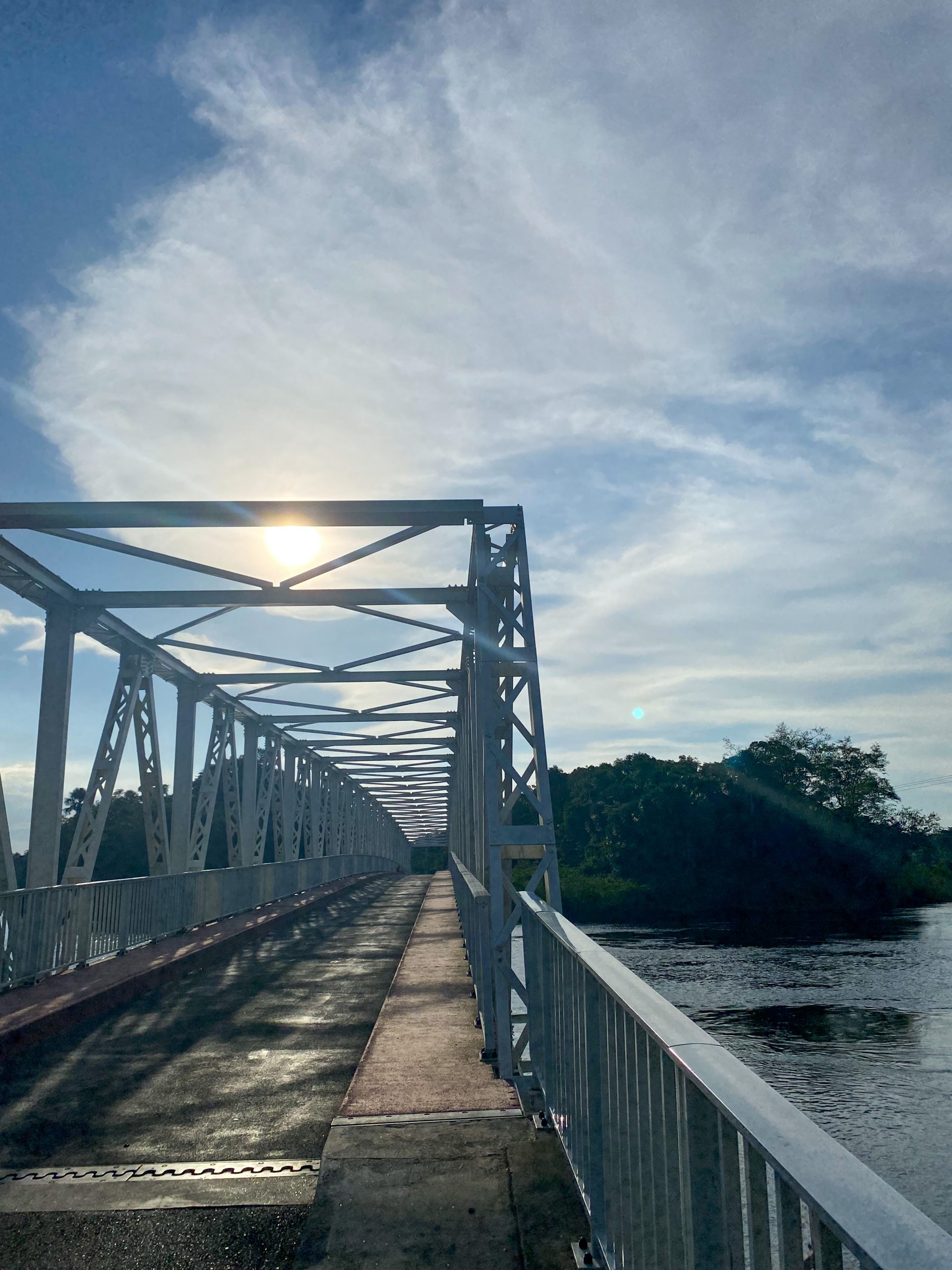
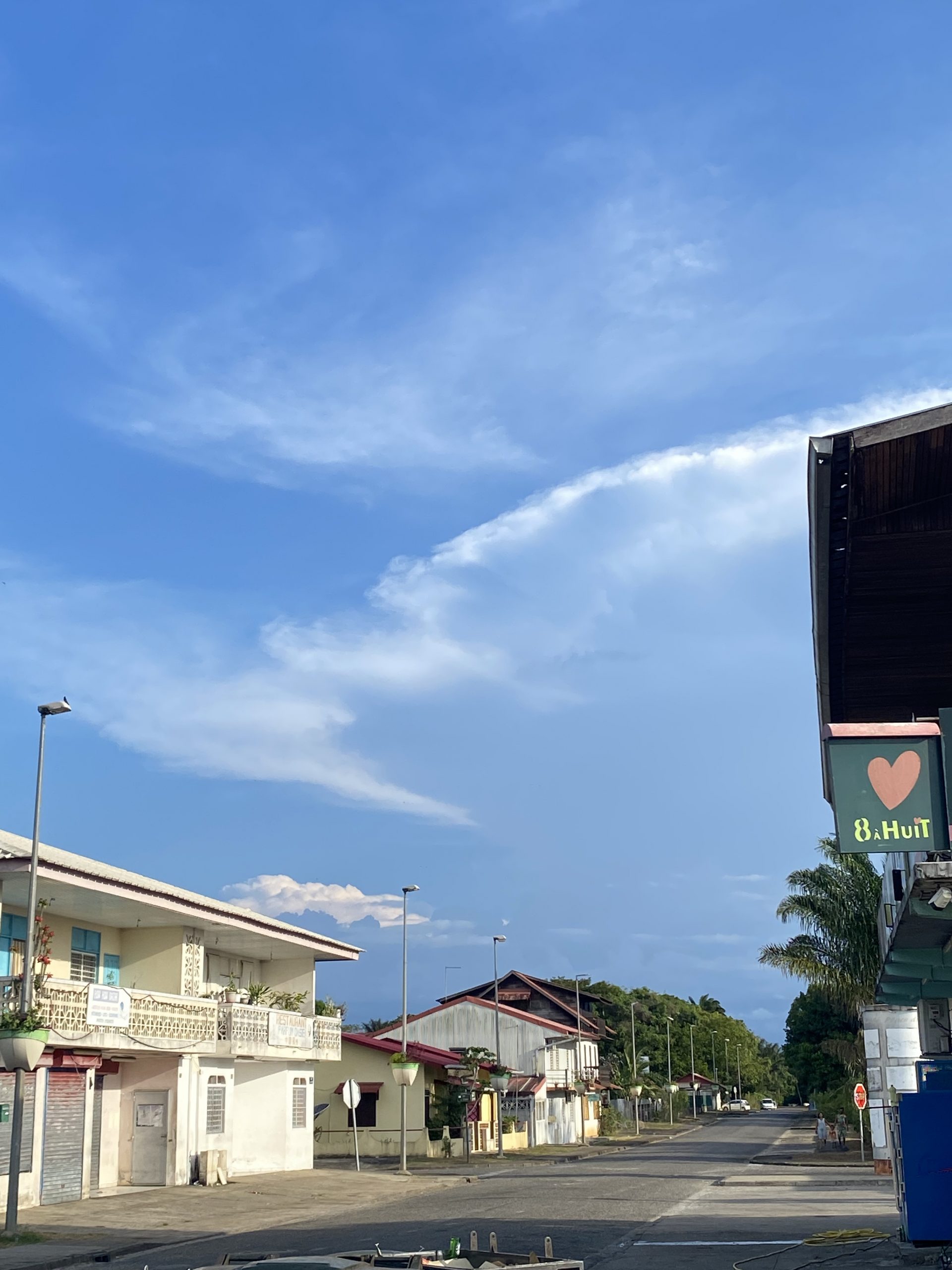
Unlike other countries in the Caribbean or South America, however, French Guiana’s economy isn’t built on tourism or natural resources but is instead based on metropolitan France and is maintained through aid from the French government. The main attraction for industry in French Guiana is by far science, research, and the European space station in Korou which is a rocket launching site that accounts for almost 25% of the country’s GDP. There was a rocket launch scheduled for the very last day we were in French Guiana, and we tried to watch it but there was an issue with the launch unfortunately, so we weren’t able to see it. It would’ve been the icing on the cake to what was an already fantastic trip and something I would definitely like to see in the future.
What were we actually doing?
So, why go to French Guaina? Well, as mentioned above, it was to support a research trip and this particular project focused on collecting hyperspectral data in the Amazon Rainforest through the use of drones and spectral sensors. This was done in collaboration with FSF (Field spectroscopy facility) which is a NERC (Natural environment research council) facility designated to supporting UK researchers with equipment and expertise.
The research took place in two separate research sites and focused on the use of specialised plots and facilities maintained by the French Guianese scientist but more on that later! In addition to the drone and sensor techniques we also used tree climbing techniques to assist with the research, as well as general tropical fieldwork practices.
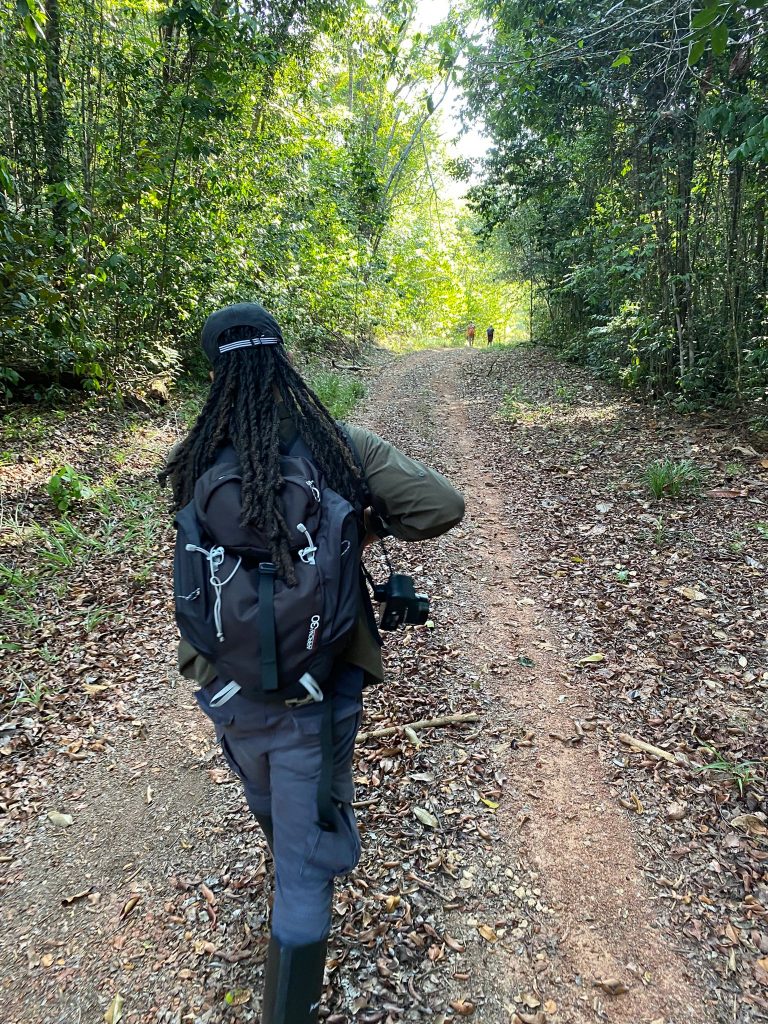
Field spectroscopy facility
The NERC Field Spectroscopy Facility is based in the UK and houses and maintains specialised state-of-the-art spectroscopy instruments for research purposes. They provided the spectroscopy expertise and equipment on our trip, specifically using an Analytical Spectral Device (ASD) and a Headwall Co-aligned VNIR-SWIR and LiDAR UAV mounted censor on a DJI M600 Pro drone.
ASD
The ASD is designed to collect solar reflectance, radiance, and irradiance measurements and has many applications when studying forests and forest ecology. For this particular project, we were collecting leaf samples from very specific species of trees and analysing them back at camp, separating them into sun and shade leaves and also distinguishing them by their age.

Headwall
The headwall sensor is a leading hyperspectral sensor with excellent spatial and spectral resolutions. It provides a full range of hyperspectral imagery to support the mapping of biodiversity, vegetation, biomass, etc. This system is mounted on a DJI M600 Pro drone which is used to fly the sensor over large expanses of land to image and map it and to collect the relevant data. While the M600 is a bit outdated and no longer in production by DJI, it is still effective at safely flying and transporting the sensor during flights.
For this project we were flying predominantly over the plots in order to collect hyperspectral data for the entire canopy and, in conjunction with the plot data for each individual tree, be able to identify different species of trees based on their unique and induvial spectra.
Tree climbing
Many of the techniques and equipment used on this project are more widely used in film making and production such as the M600 drone. The other major set of kit we took with us to French Guiana was climbing kit for the rigging and climbing of trees in the Amazon. This kit, like the drone, is widely deployed in film making for rigging cameras and other accessories into trees to get the perfect shot. Here, however, its being used for science!
Our tree climbing skills were used to collect leaf samples for analysis as well as to assist with flying the drone and maintaining visual line of sight whilst in the trees. I’ve written a separate post on my experience learning to climb and how things went in the Amazon which you can check out here if you’re interested in learning more but for now, here are some tree climbing pictures!
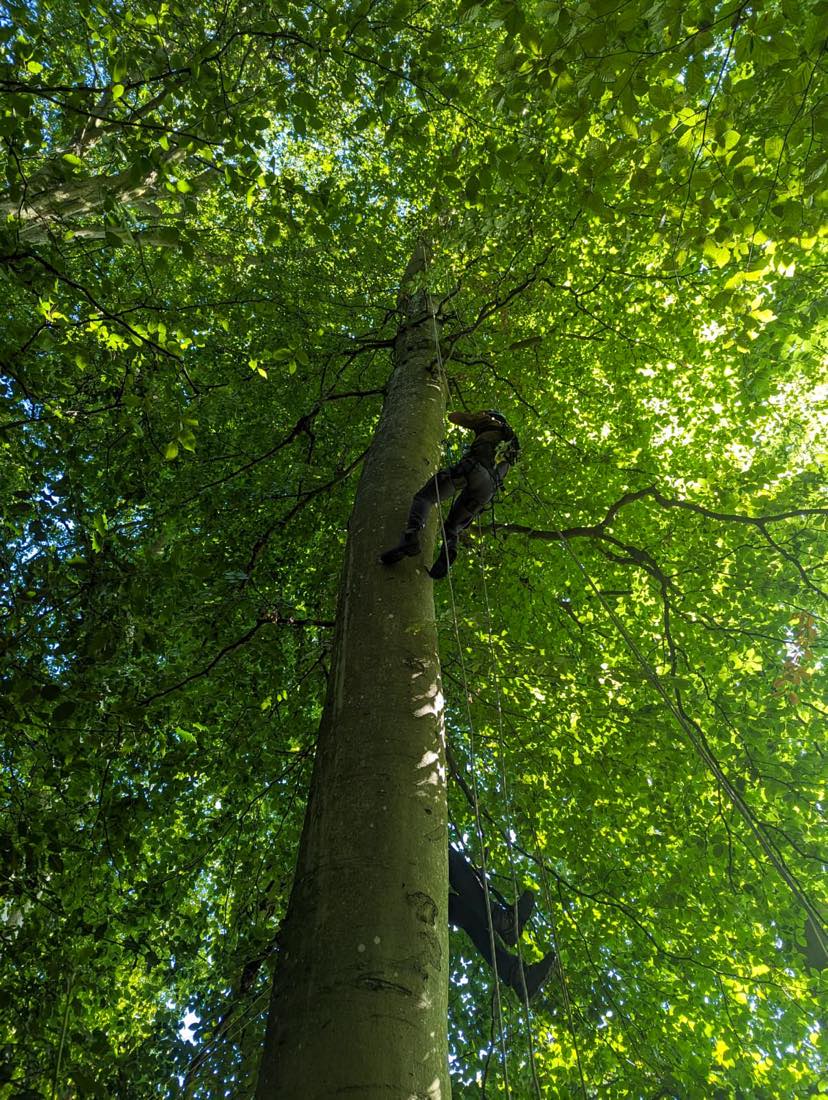
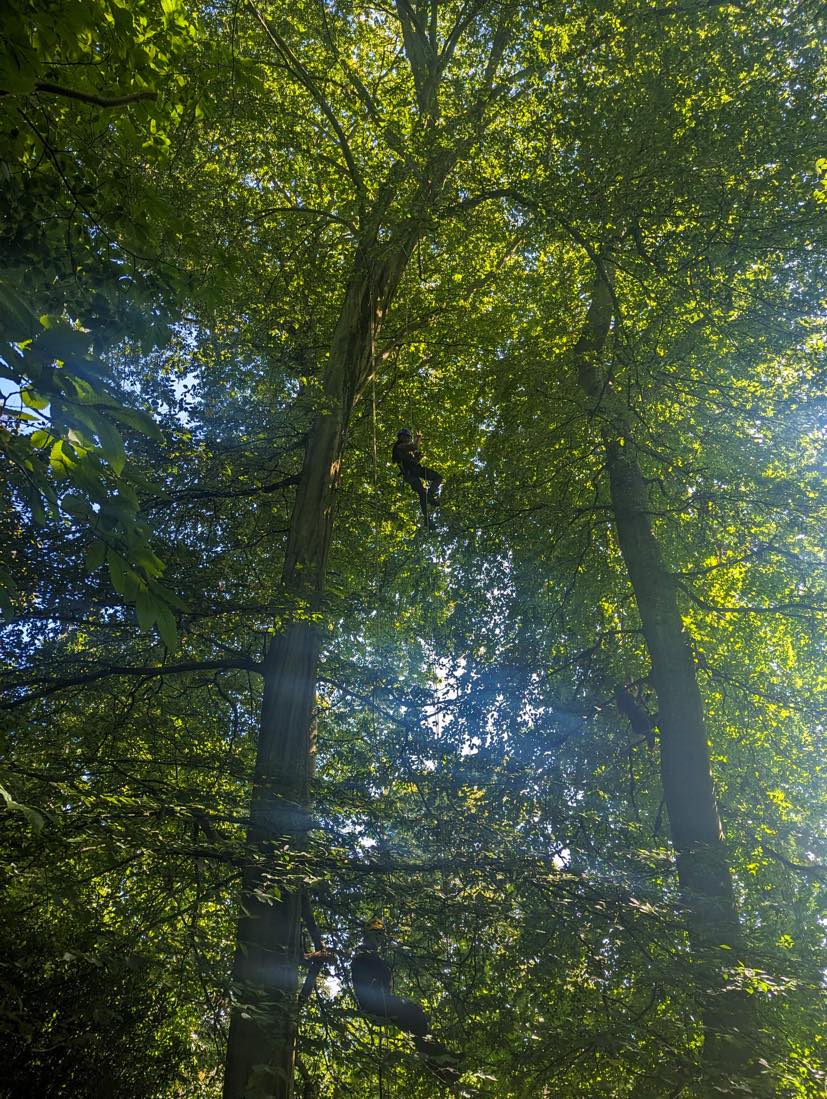
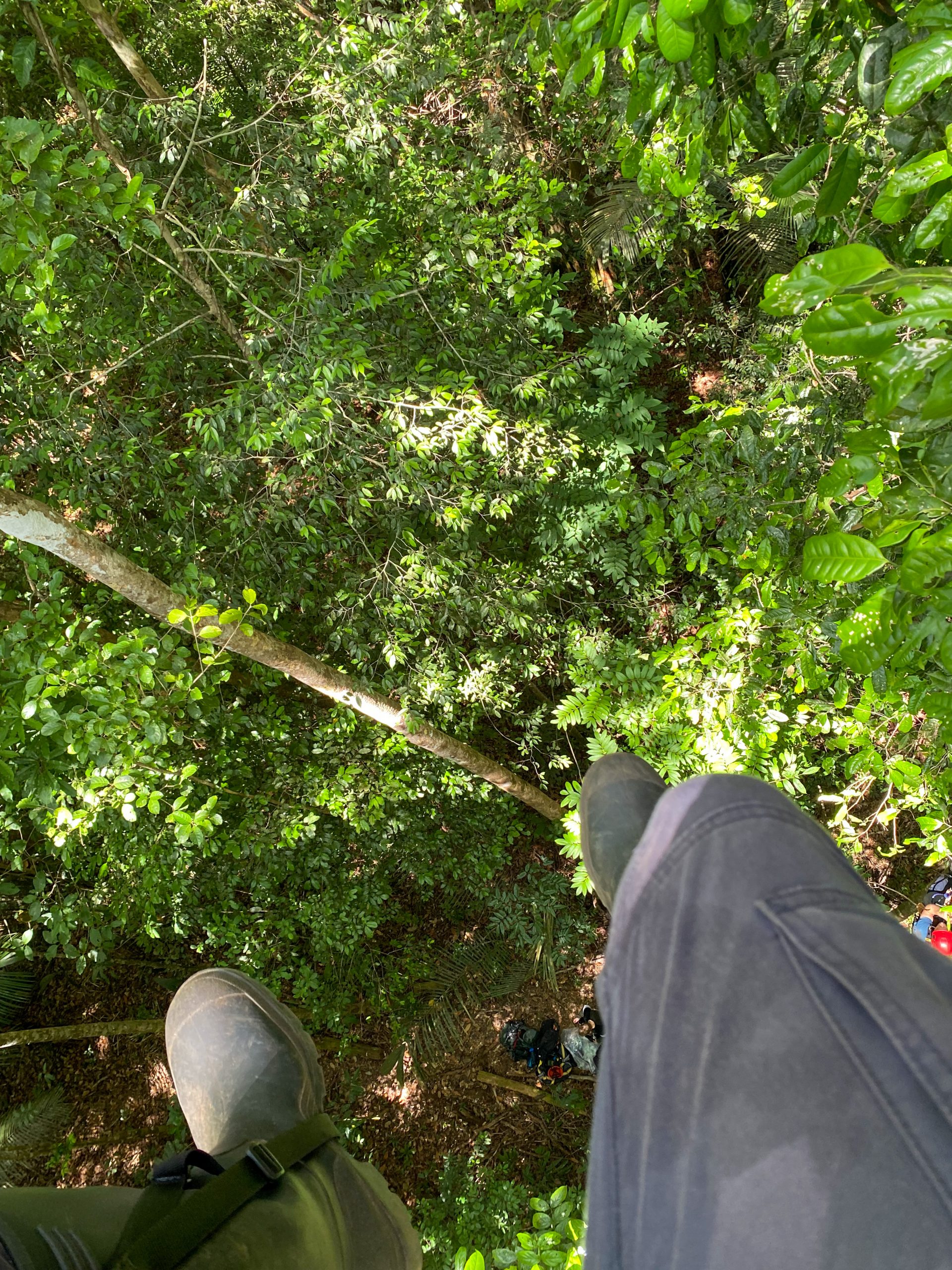
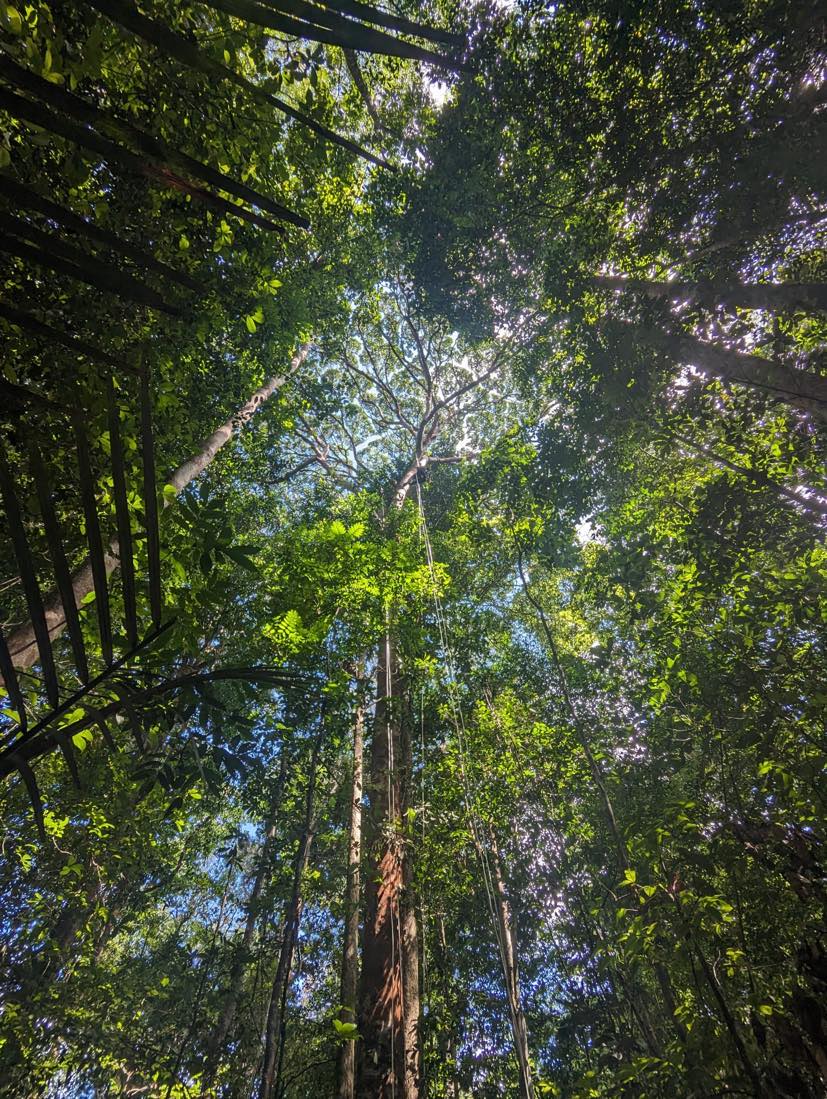
Paracou
While in French Guiana we stayed at two different research stations for a couple weeks each, the first of those being the Paracou Research Station. It is located around 50km from the European Space Centre and is mainly covered by rain forests (containing over 750 woody species). It houses 16 permanent plots which have been censused and documented for research purposes.

It is a natural ecology library and welcomes researchers from both France and French Guiana as well as from around the world with various projects being conducted in the fields of forest dynamics, forest ecology, biodiversity, and much more.
Staying at this research station was a very interesting experience for me as it was my first time doing tropical fieldwork and staying onsite. We had various huts for sleeping, analysing our data, and eating and cooking. Each day we would be awoken by our natural alarm clocks of loud insects and bright sunlight and would head straight into the plots, working for the majority of the day collecting leaves and climbing trees, and coming back to process our samples back at camp.
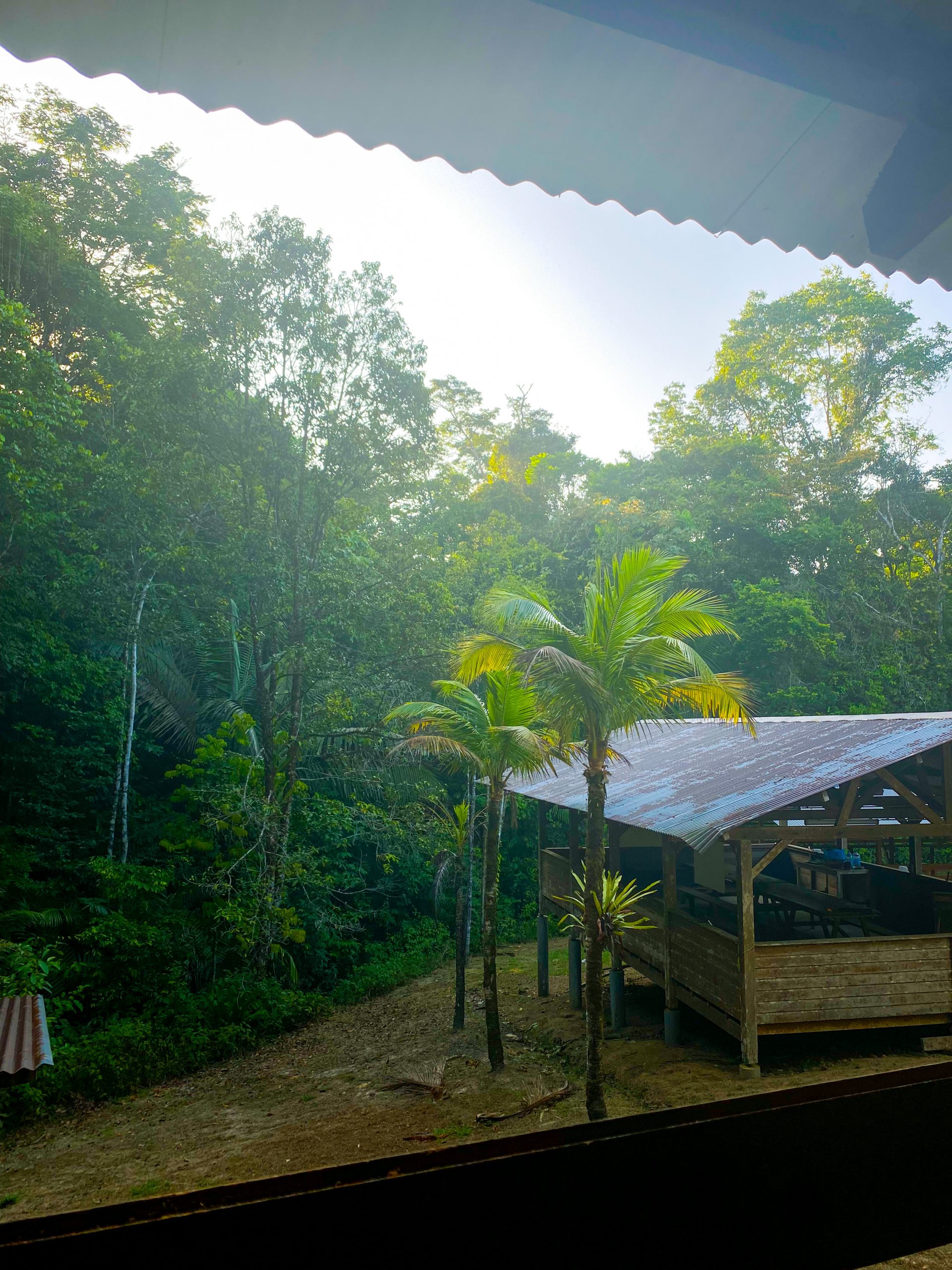
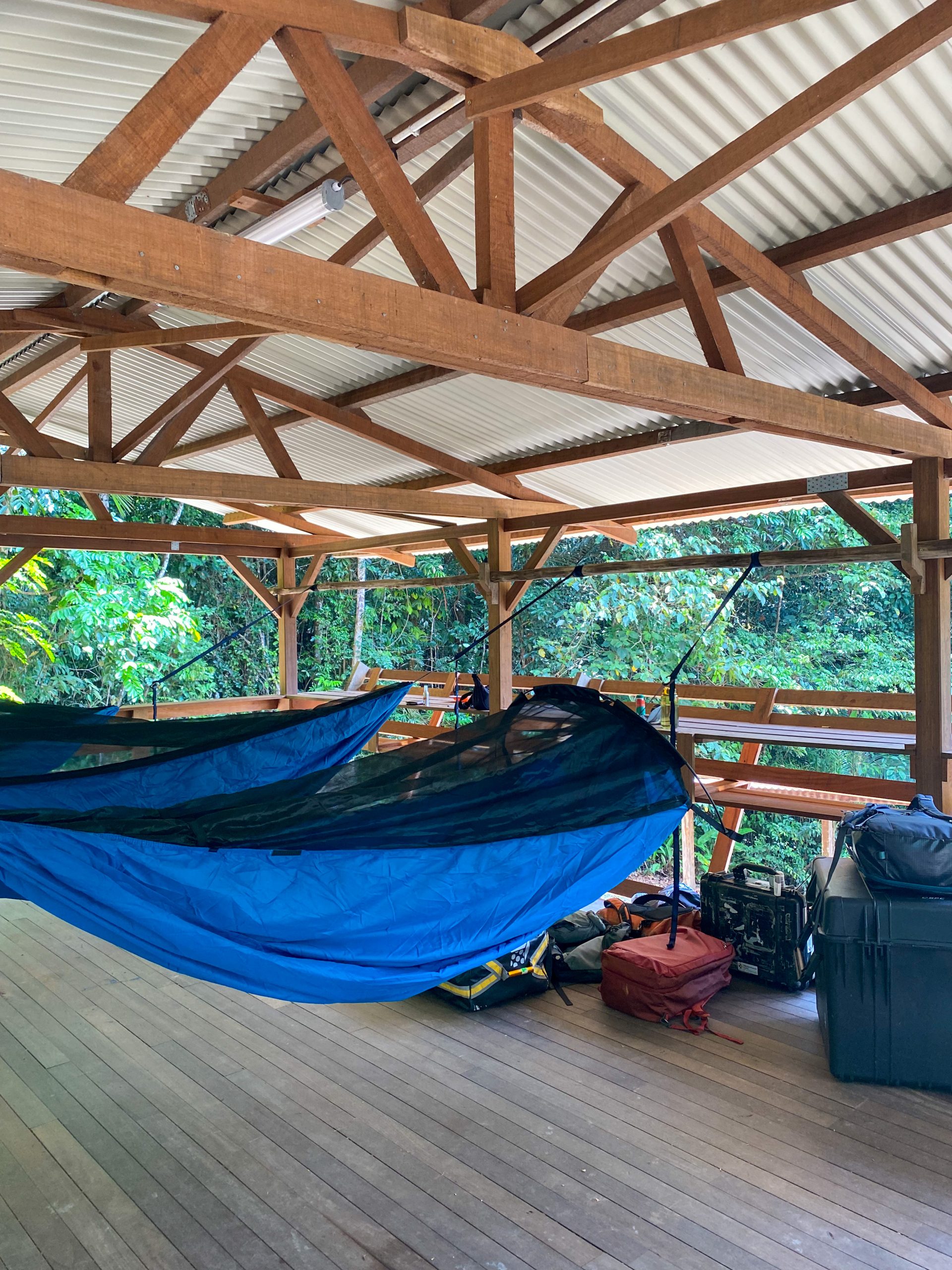
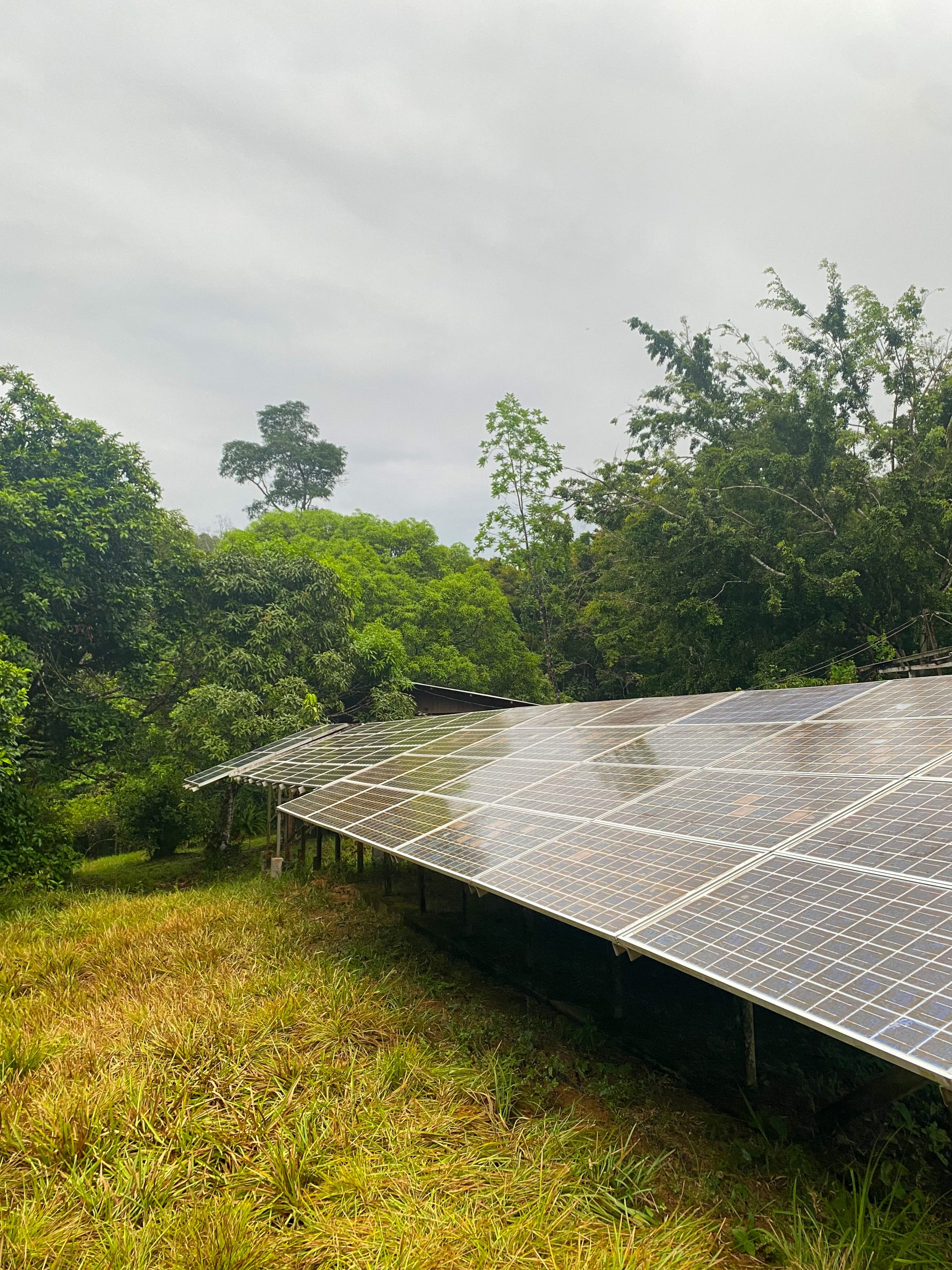
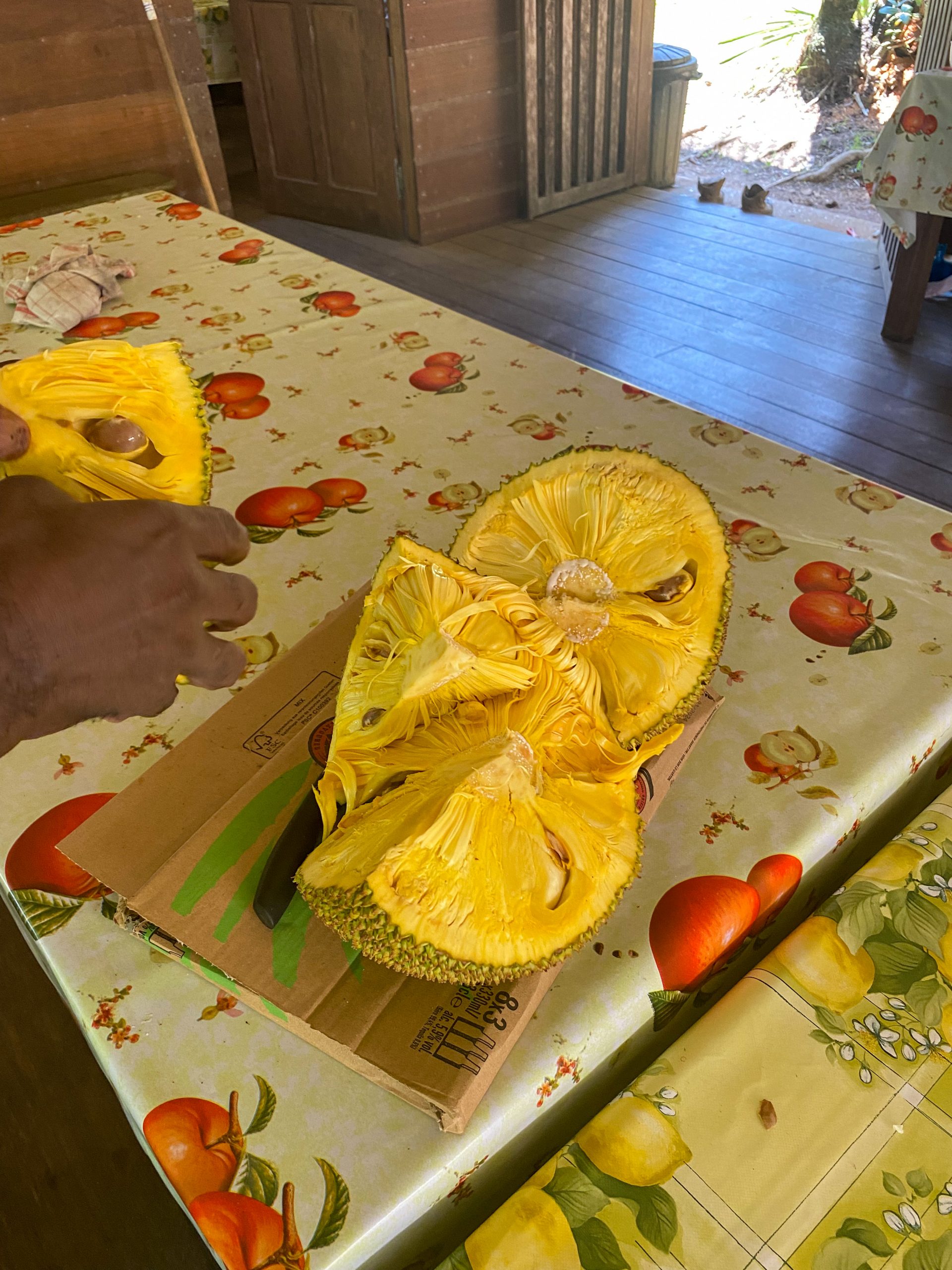
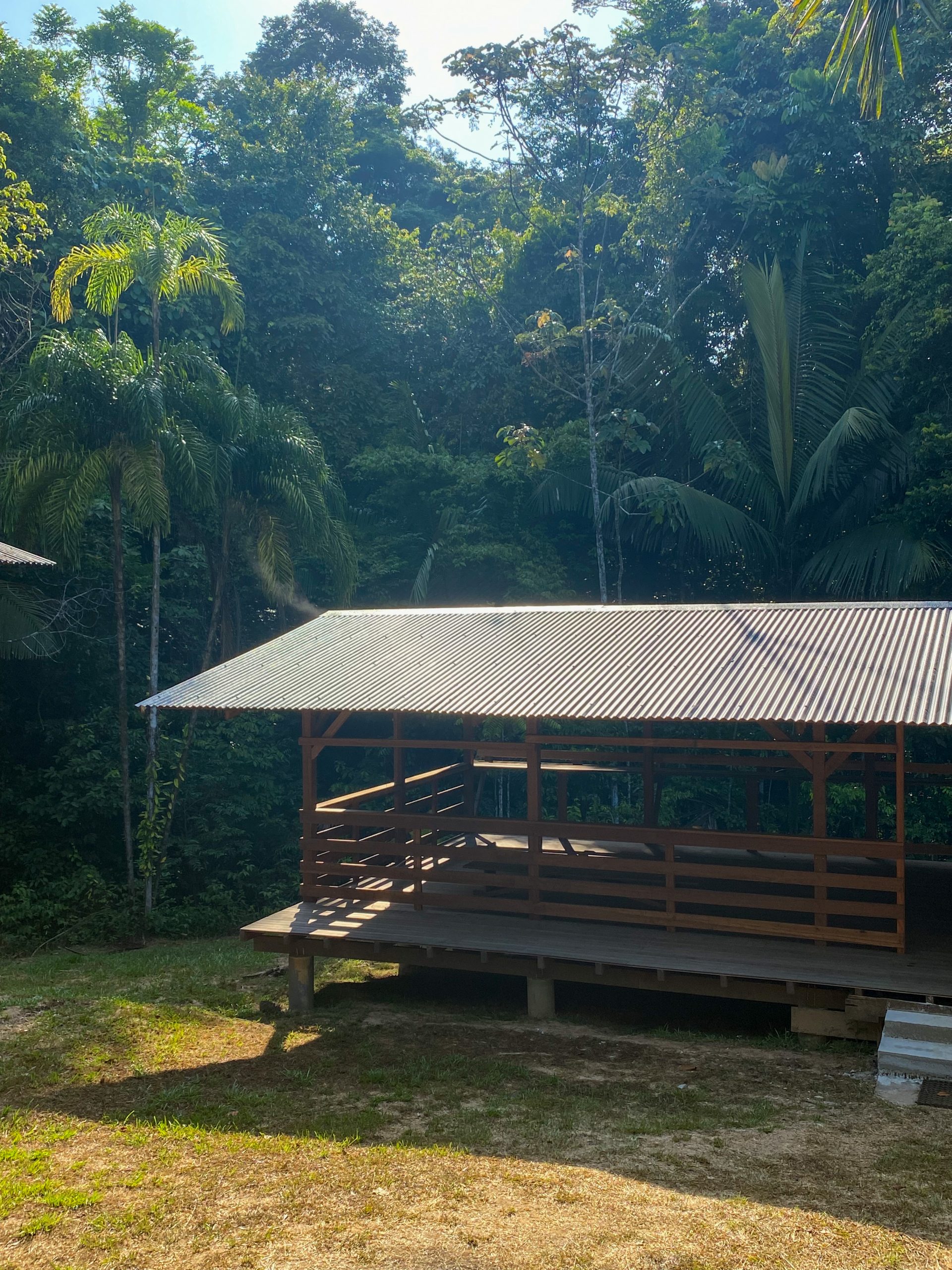
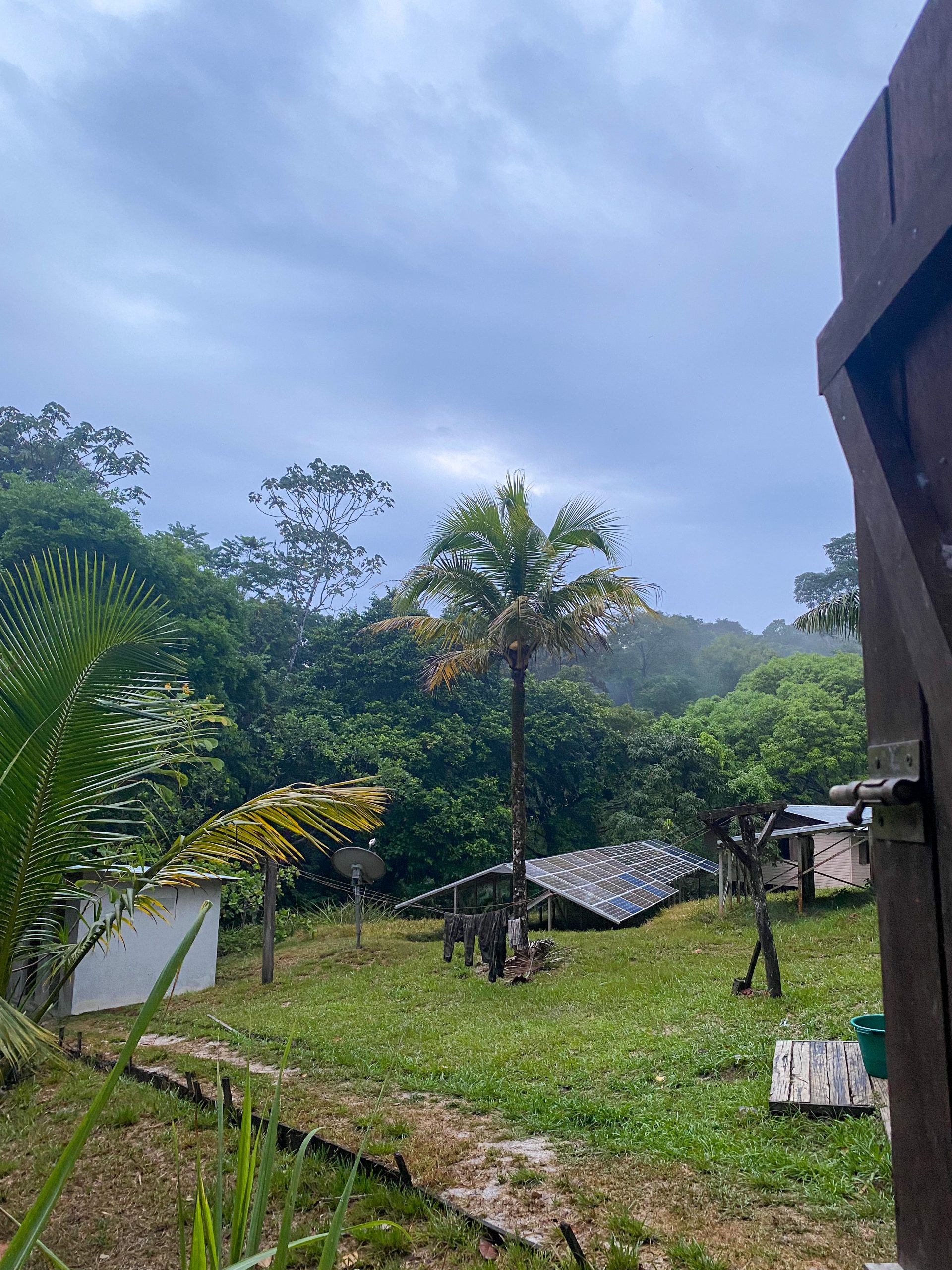
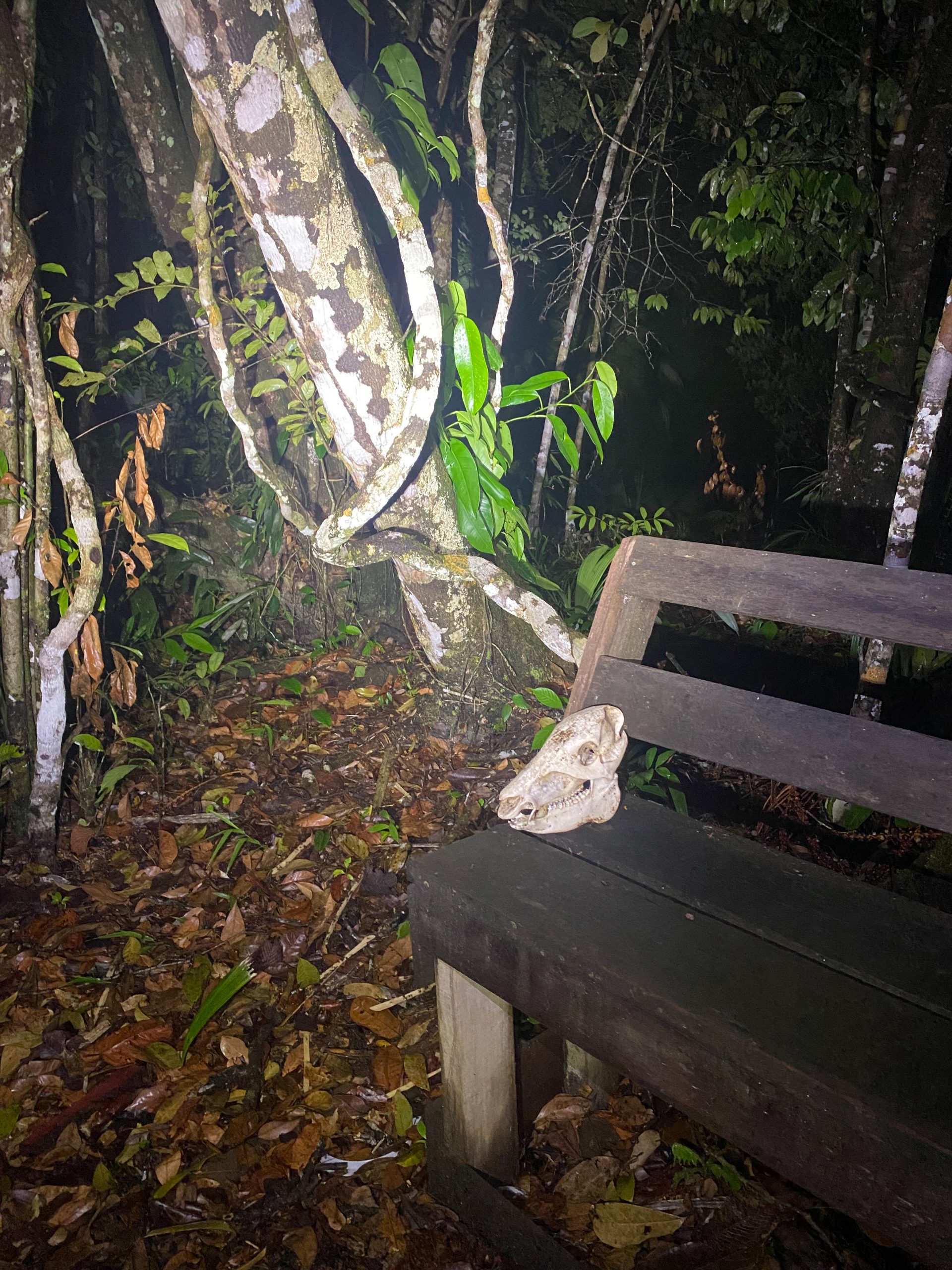
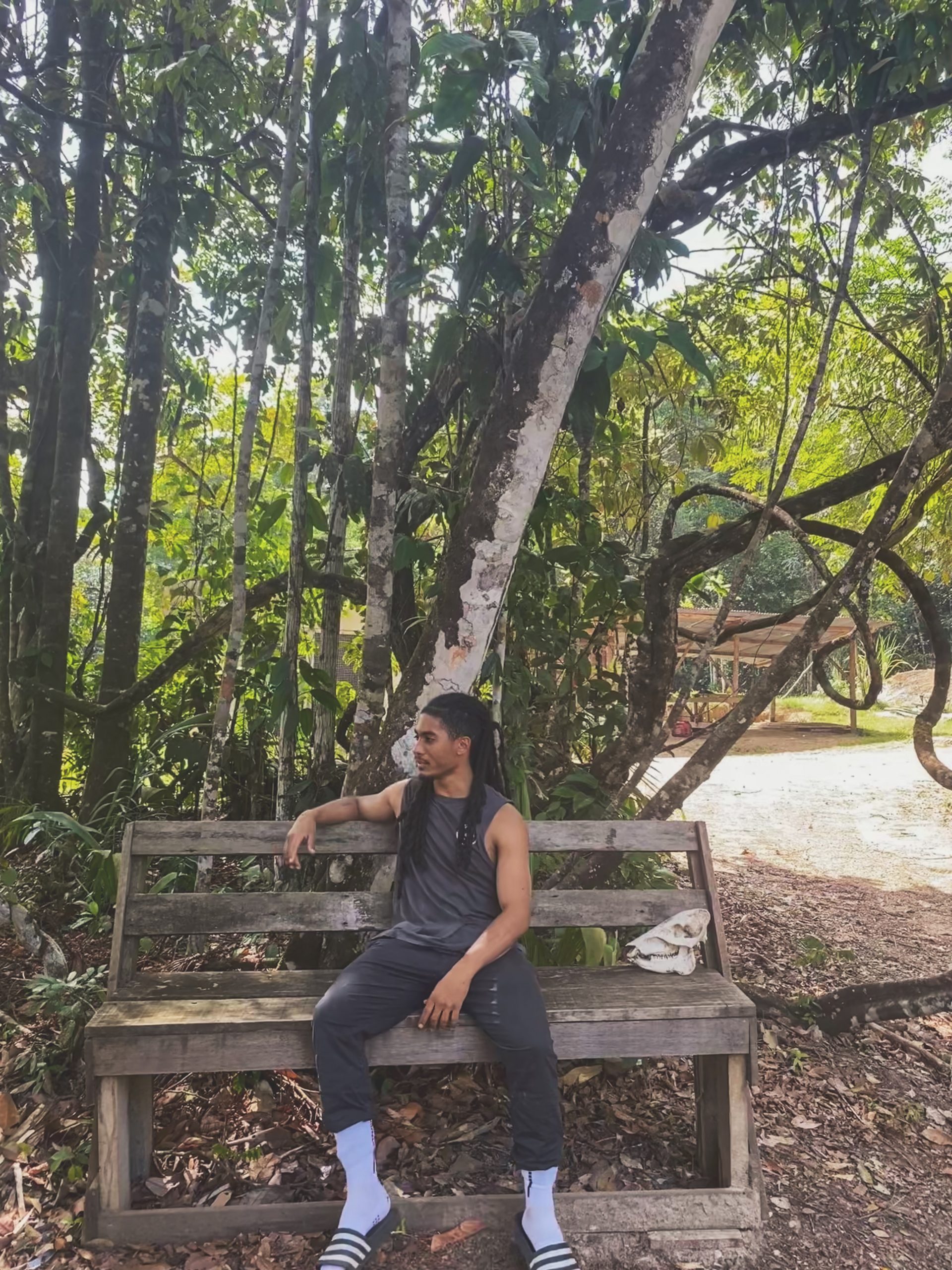
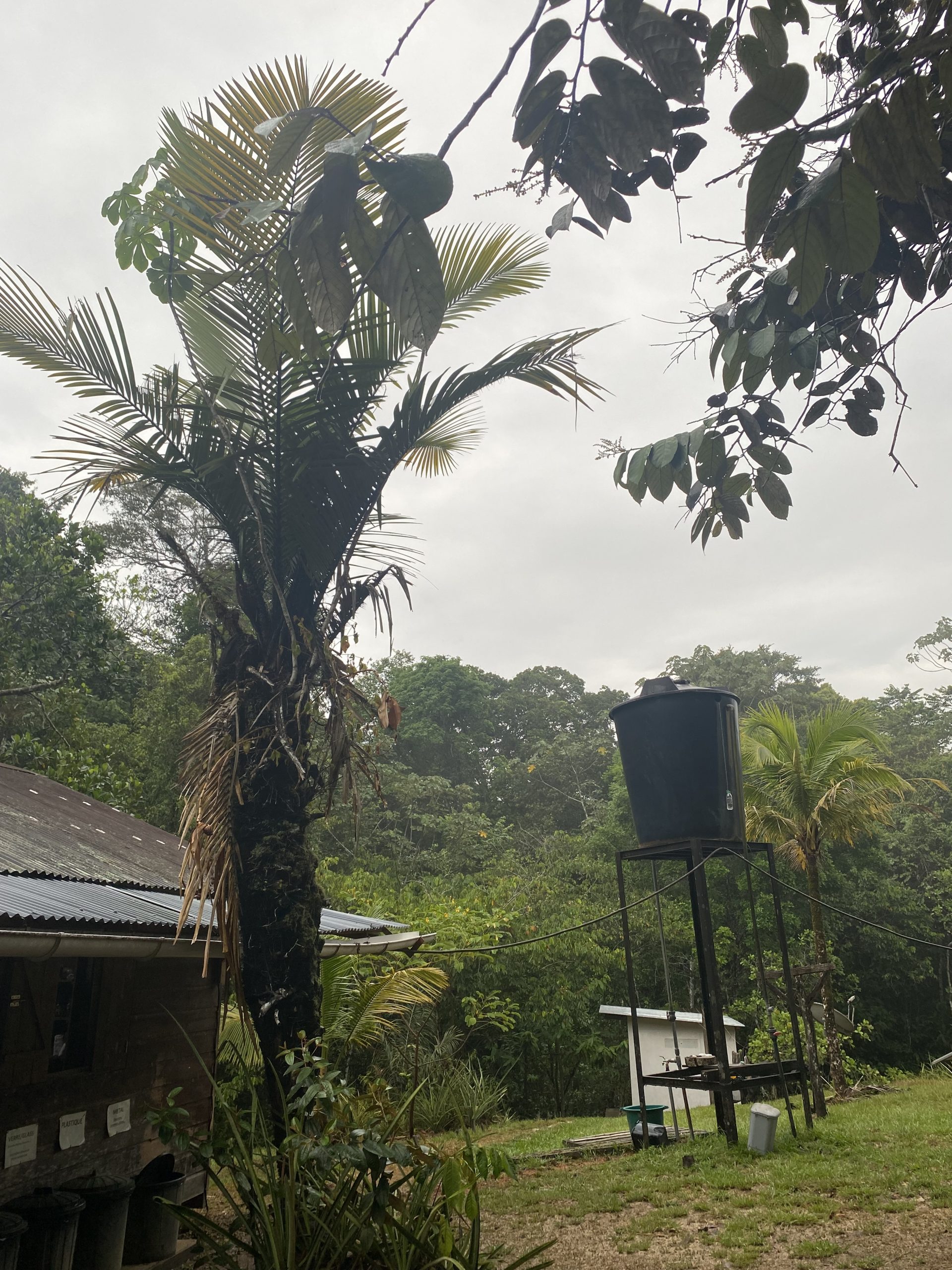
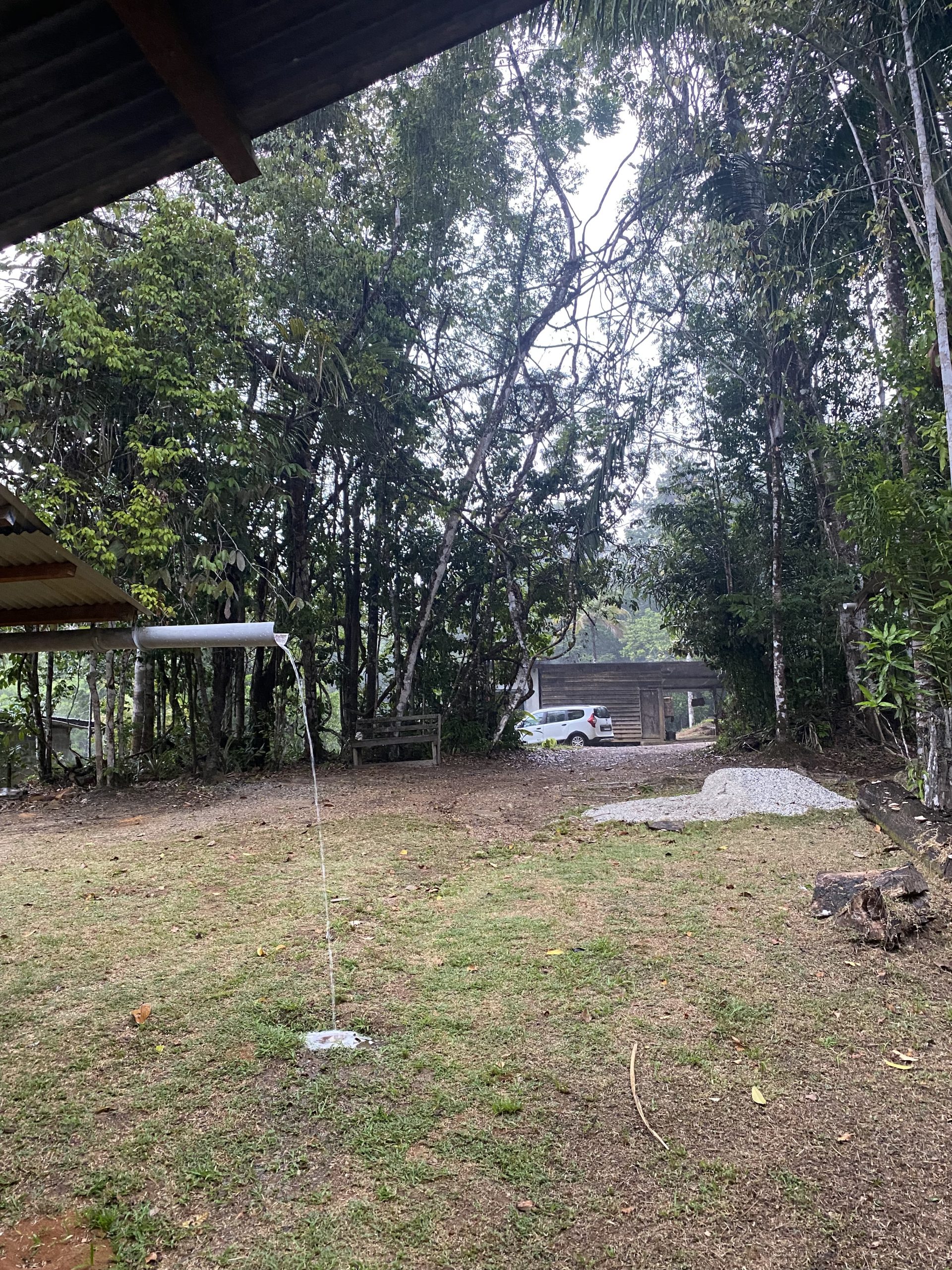
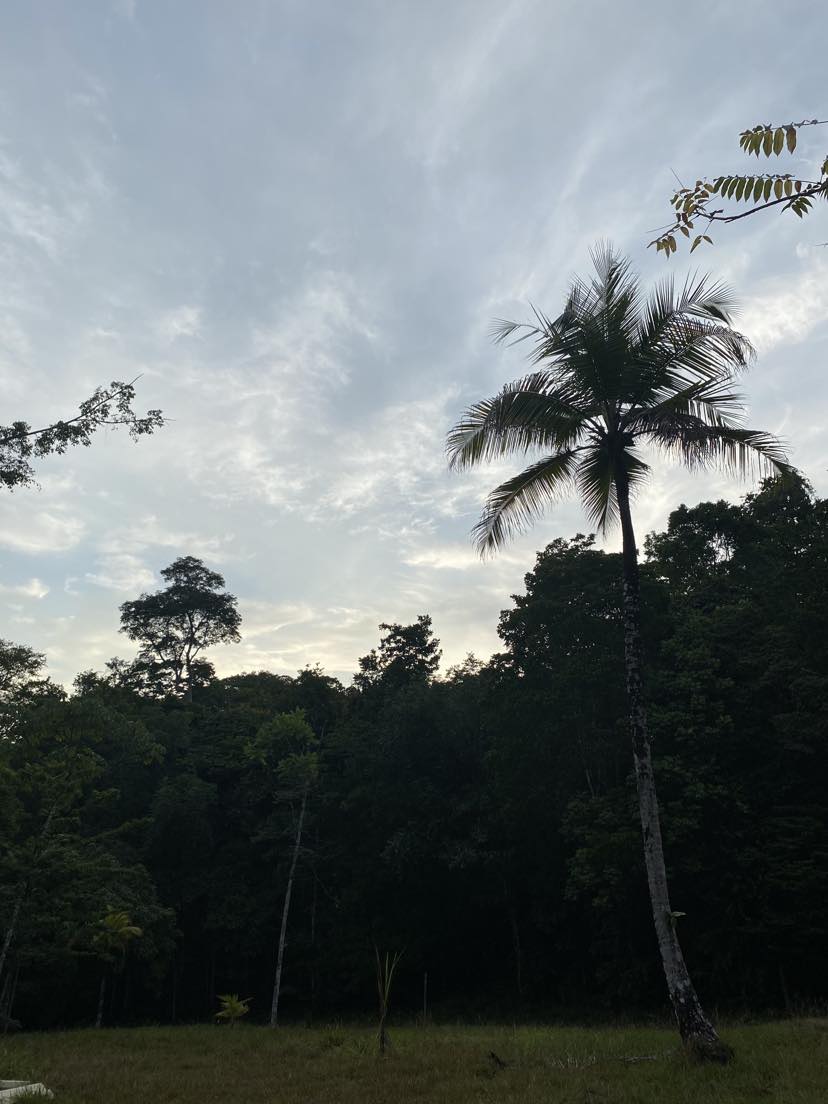
One of the most interesting things for me at Paracou was a flux tower on site which was used to support experiments and researchers for flying drones etc and had a weather station at the top of it to collect meteorological data. We were able to climb up this tower (well about 40m) and it gave us an entire and super clear view of the canopy of the amazon.
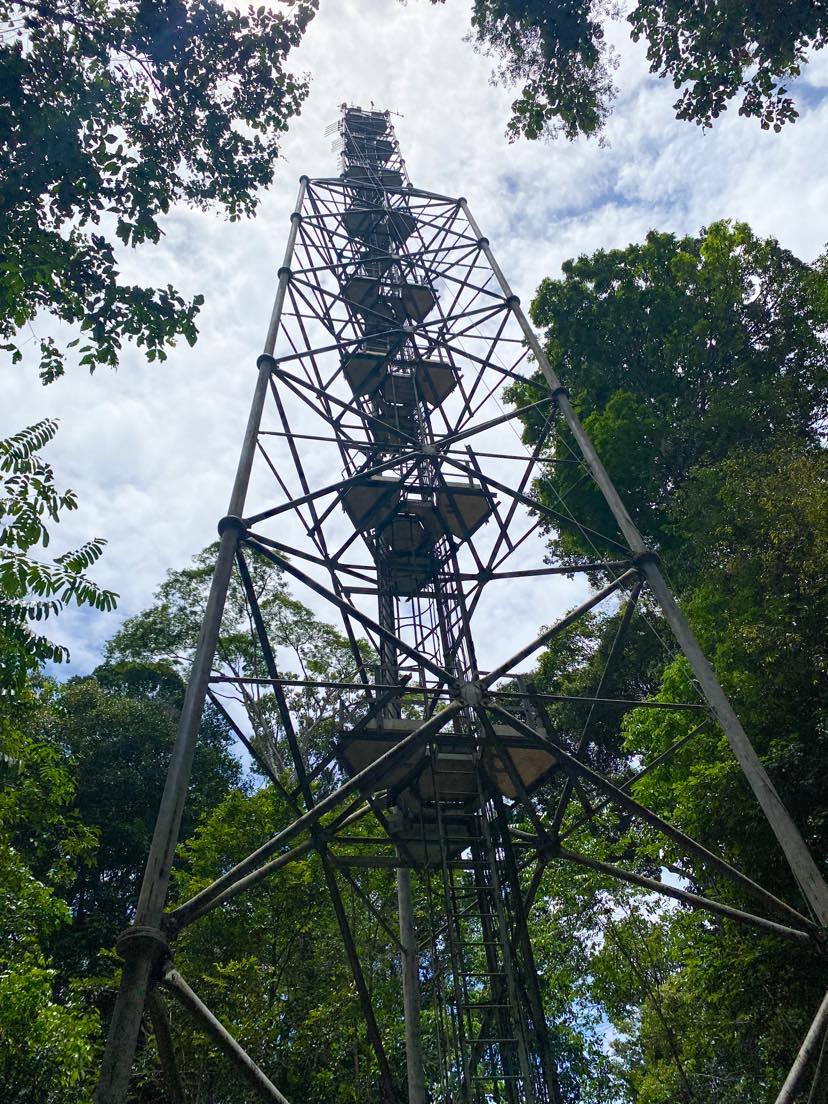
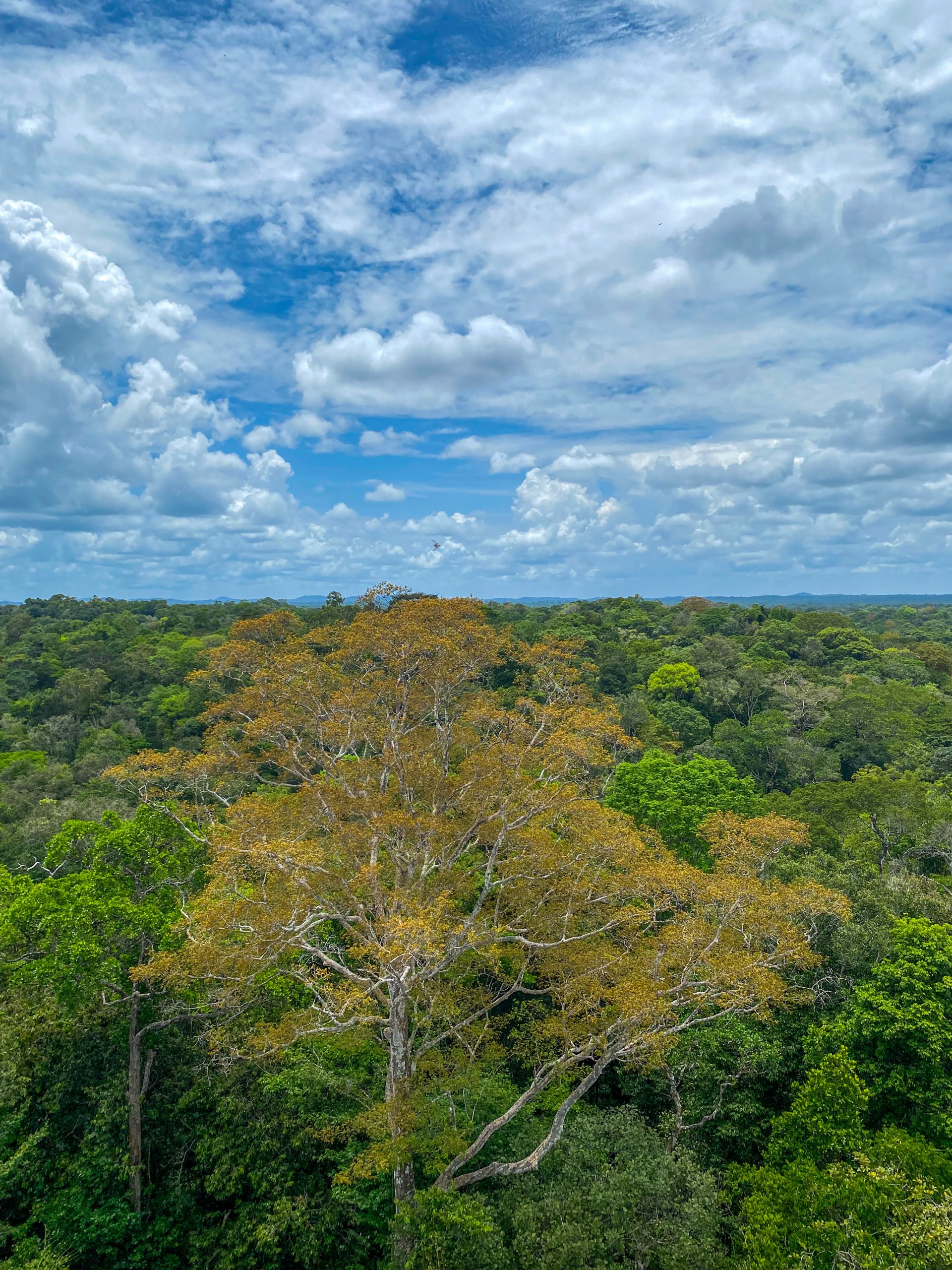
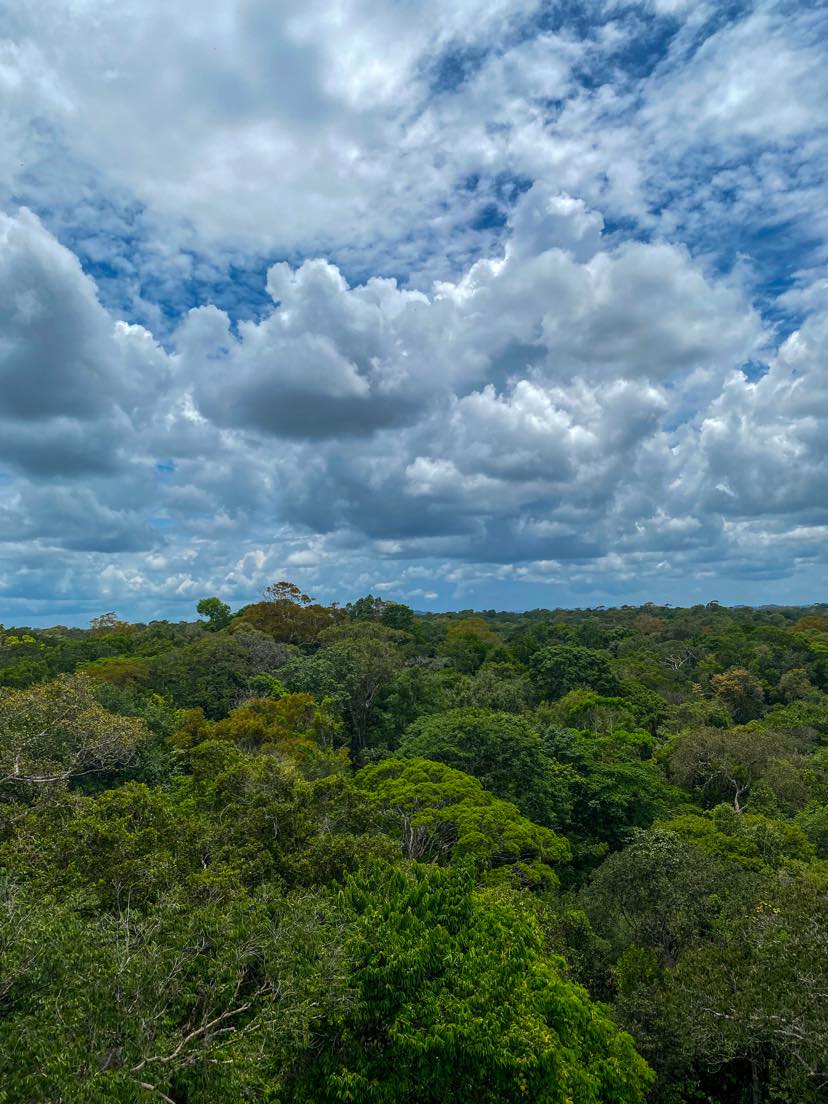
The other most interesting part about staying at Paracou for me was the wildlife and general surroundings. While out there you are truly living in the forest and the sounds you hear at night and throughout the day are magical. From howler monkeys screeching and wailing during the night to various birds and insects, you are never short of something to listen to. I will be writing another article specifically on the wildlife we encountered while in French Guiana that will be coming out soon but here are a couple pictures from Paracou in the meantime.
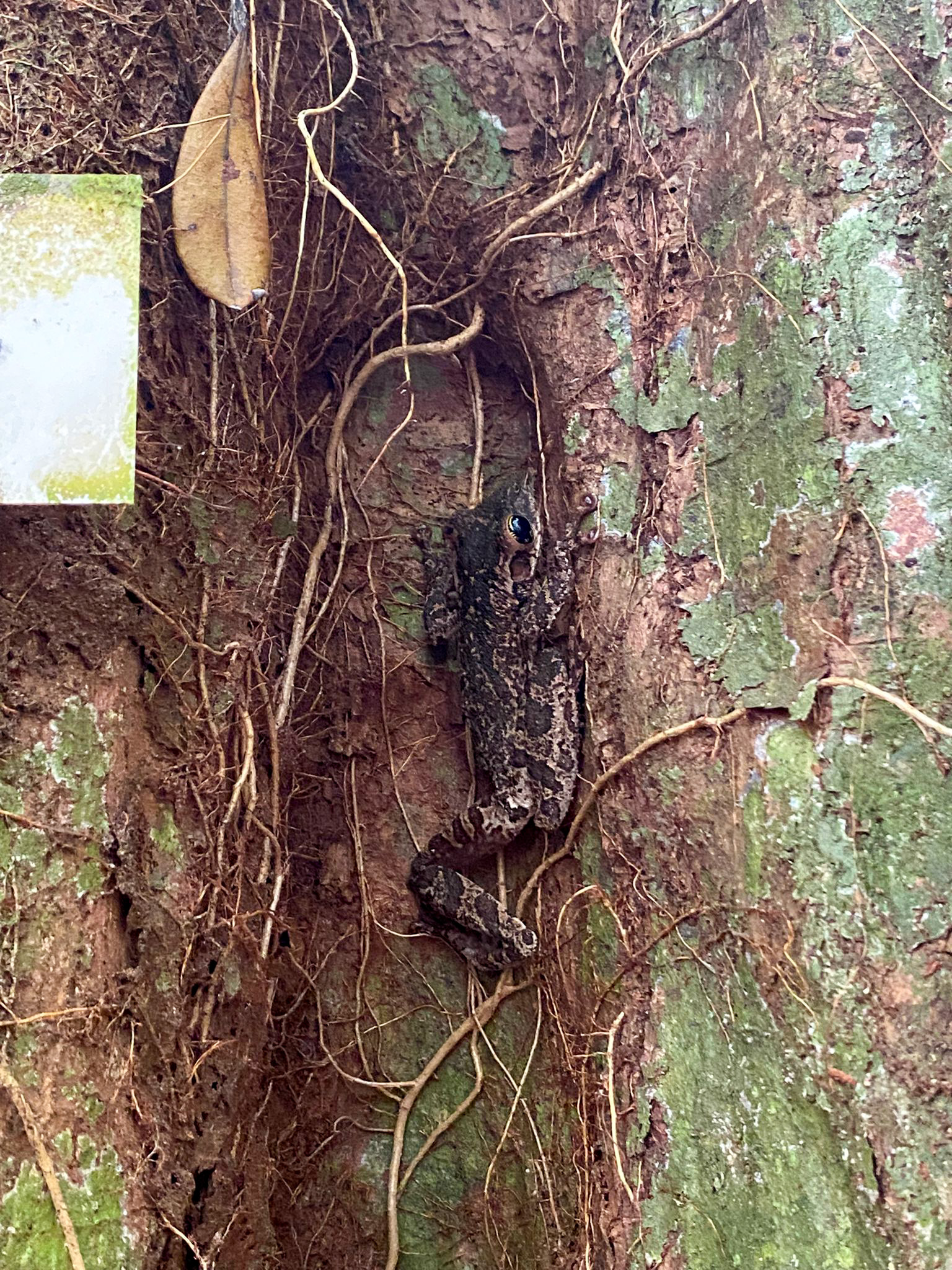
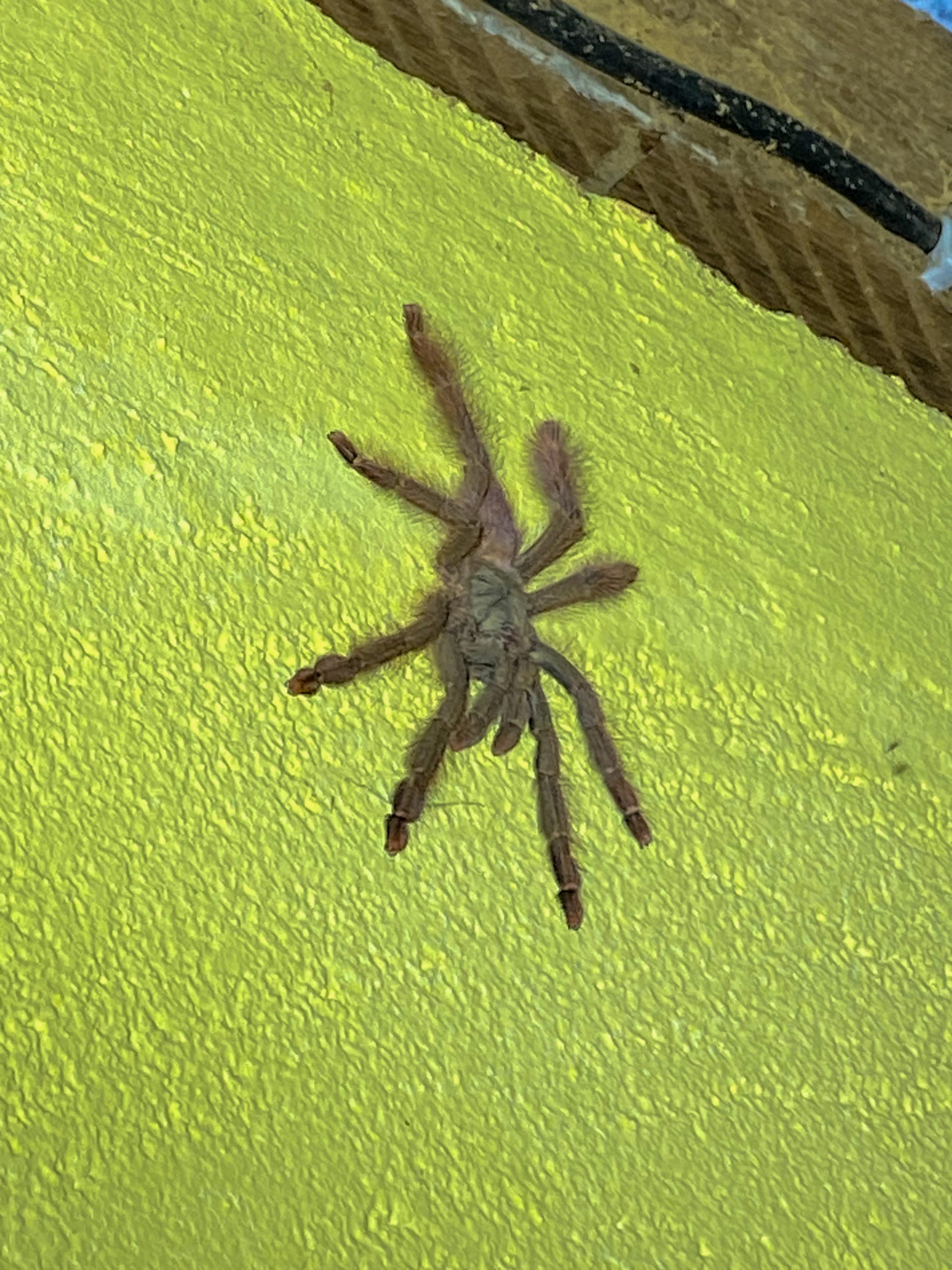
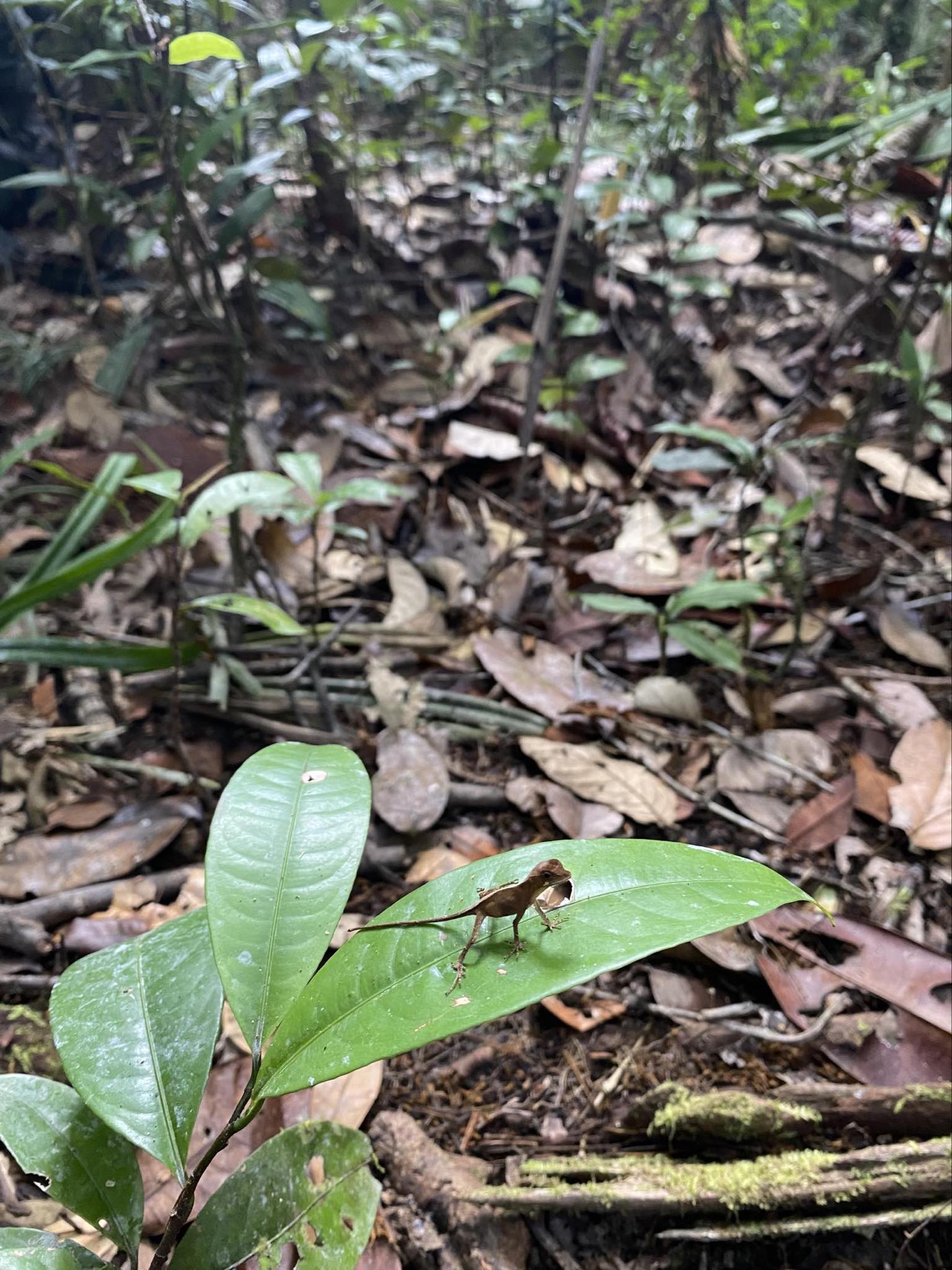
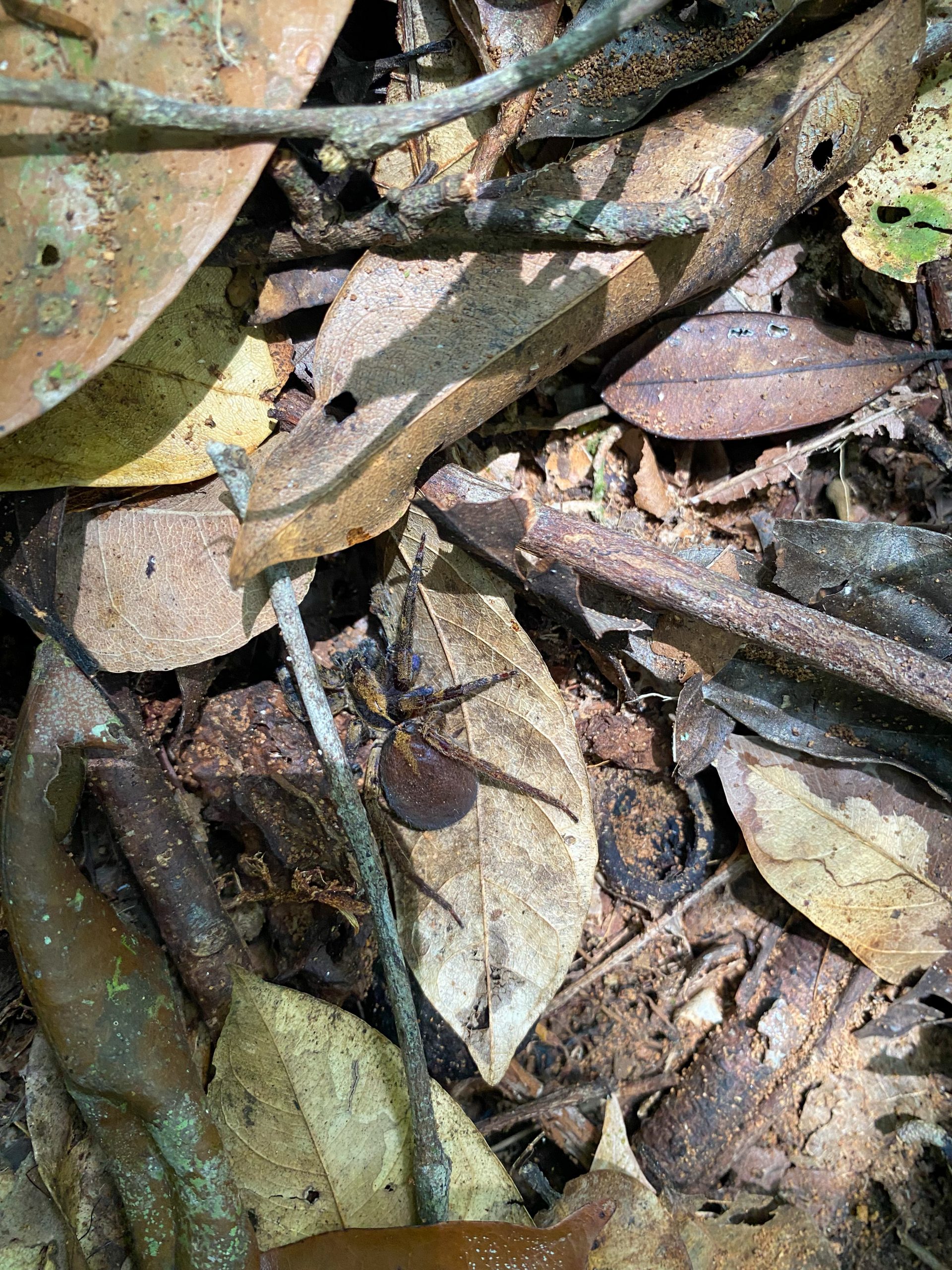
While I am accustomed to sleeping in hammocks by my grandmother’s house, sleeping in hammocks out in the open was a first for me but something I surprisingly enjoyed. As there is very little light pollution the nights were pitch black and probably the darkest thing I’ve experienced in my life so far. This also meant that the skies were filled with stars during the night which was very impressive.
Nouragues
The second research station we stayed at, and the place where many of the coolest moments of my life so far were experienced, was the Nourages Field Station which is operated by CNRS (the French National Centre for Scientific Research) and is located in the Nouragues Nature Reserve. This research station is only accessible by helicopter, is completely dominated by the Amazon rain forest, and is not open to the public or tourism. It is specifically dedicated to research.
There are two camps in Nouragues: Pararé, sitting below a series of high rapids on the Arataye River, and the Inselberg camp which is located just beneath the Inselberg granite mountain. We stayed in the Inselberg camp, and it was quite an impressive set up with electricity being generated from both solar and turbine sources, local Wi-Fi, and its own air-conditioned room (dry room) used for storing and drying samples collected in the field. It is the definition of a self-sufficient location with well stocked food stores and its own washing facilities among other essentials. Unlike Paracou, which is accessible by road and is relatively close to a couple towns and villages, Nouragues is extremely remote and thus needs a certain level of autonomy.
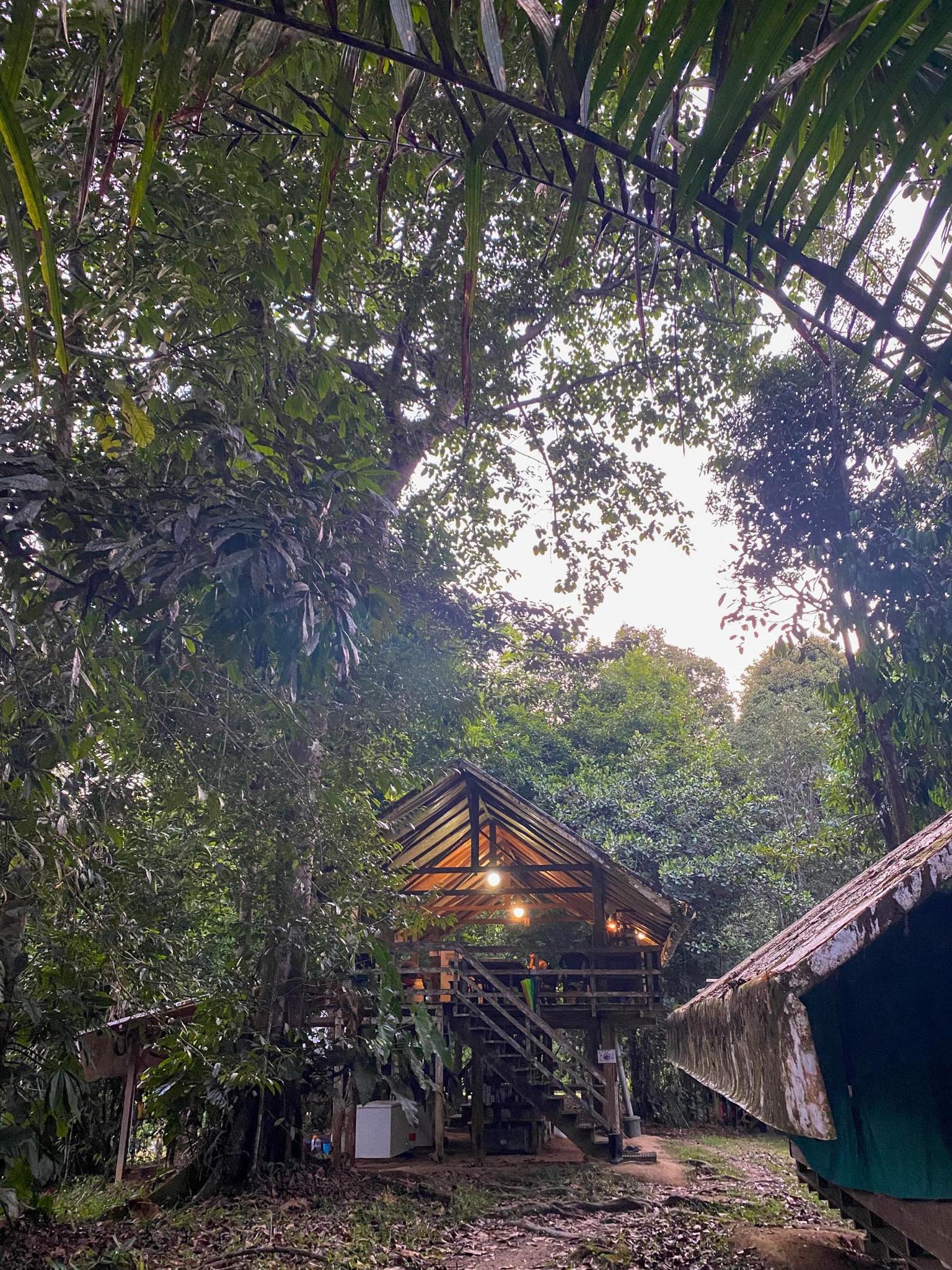
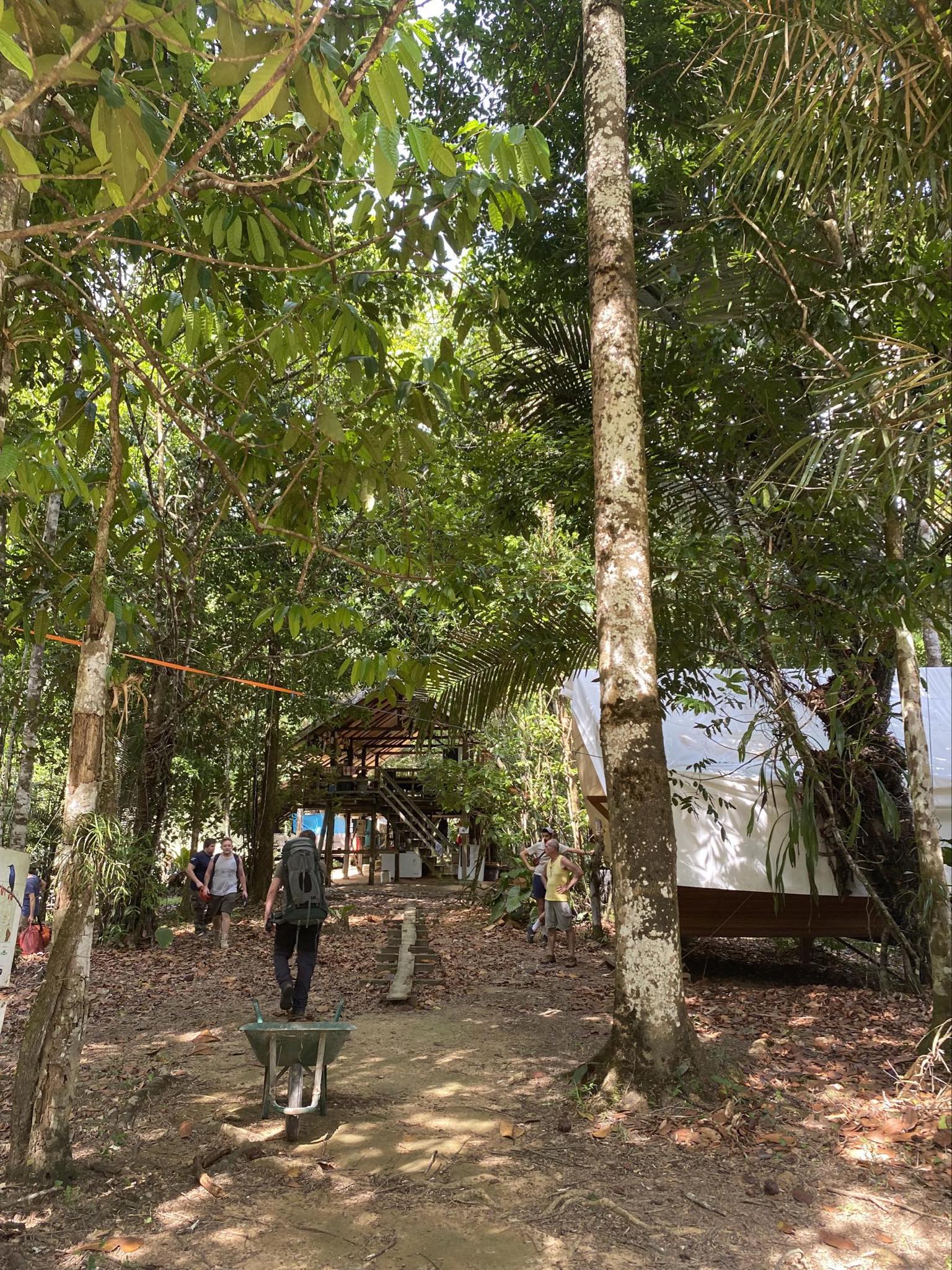
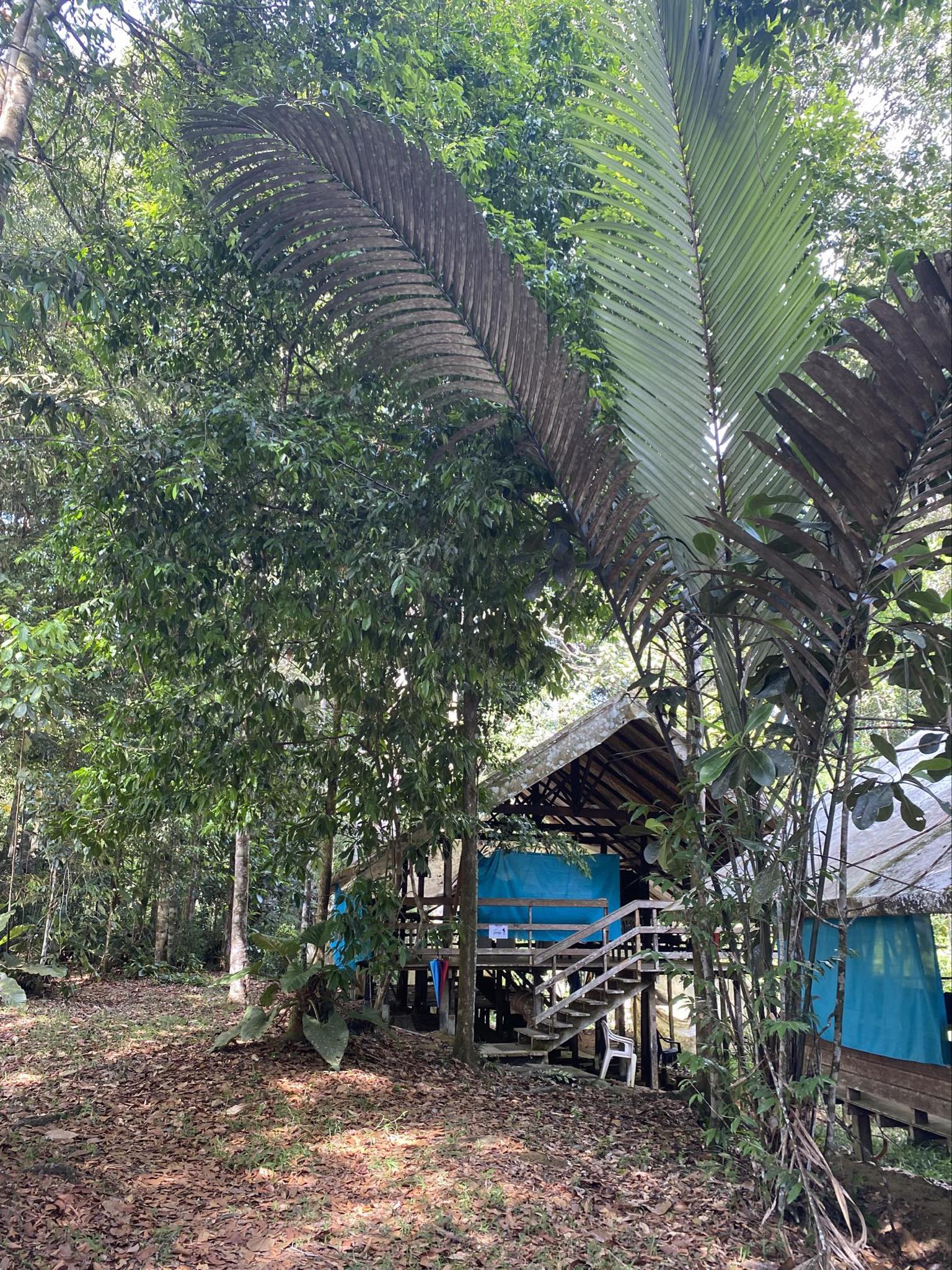
Conducting research
At Nouragues, similar to Paracou, there are dedicated plots for conducting research which are maintained and censused regularly. Unlike Paracou, however, there was a helipad which was the ideal place for flying the drone.

As a result, we spent a lot of time flying over the plots and collecting data. Well, I say we… it was mainly the guys from FSF who were flying the drone as it and the sensor are extremely expensive. The project lead and I focused more on supporting them with ASD measurements using the setup below. We used this setup to measure and record the reflectance of a reference material for the drone.

In addition to this we also did tree climbing and even a bit of building within the forest in order to fly the drone within the plot, but I talk about this and more in my tree climbing article which you can find here.
Wildlife
While the wildlife at Paracou was amazing, what we saw at Nouragues was next level and was the gift that kept on giving. From beautiful and exotic birds, to howler and spider monkeys, there was seemingly an endless supply of amazing animals to look at. I go more in-depth about the animals I saw while in French Guiana in an upcoming article as mentioned before, but I have included a couple of photos from Nouragues here for you to have a look at. The best are yet to come though!
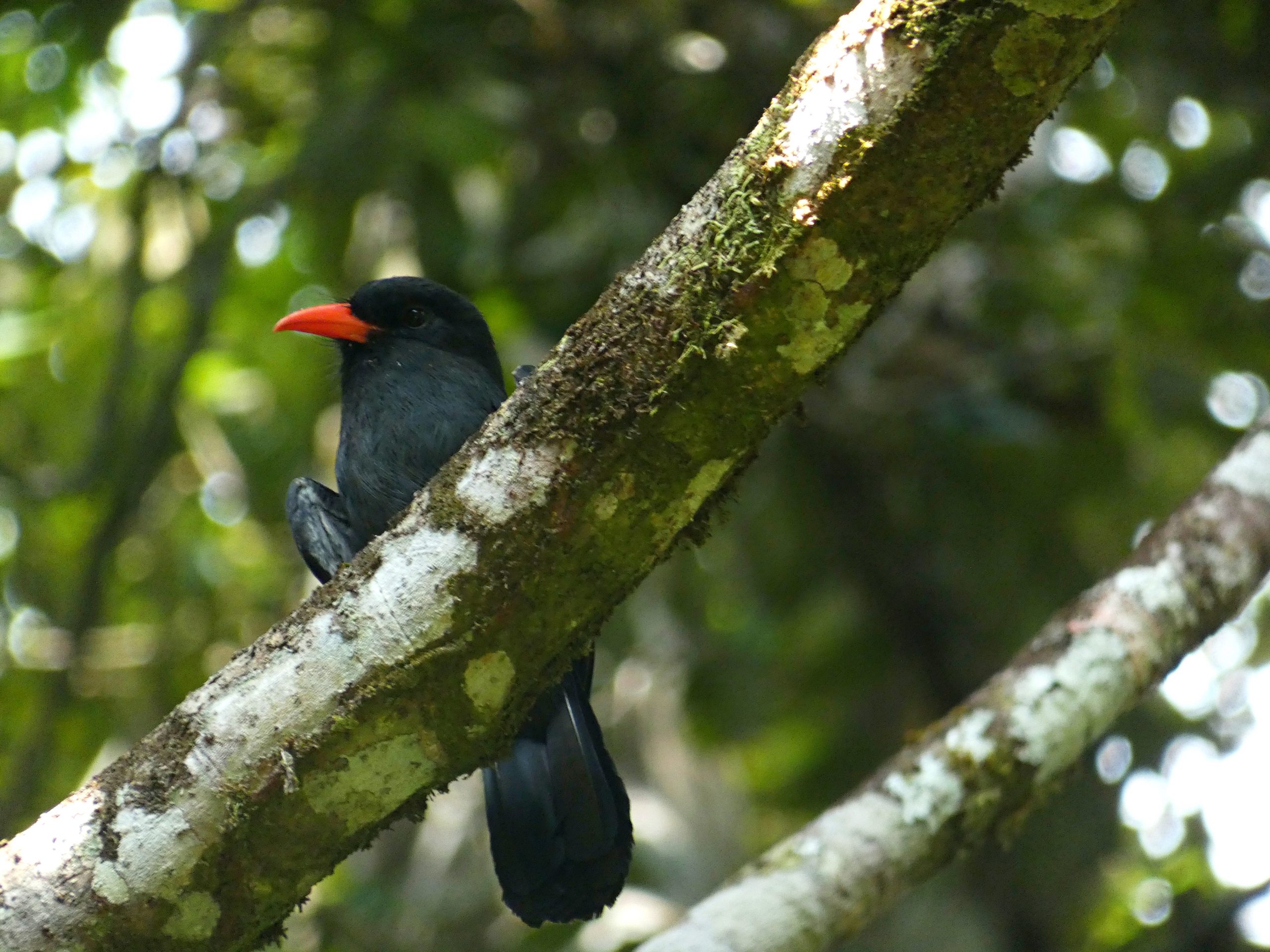
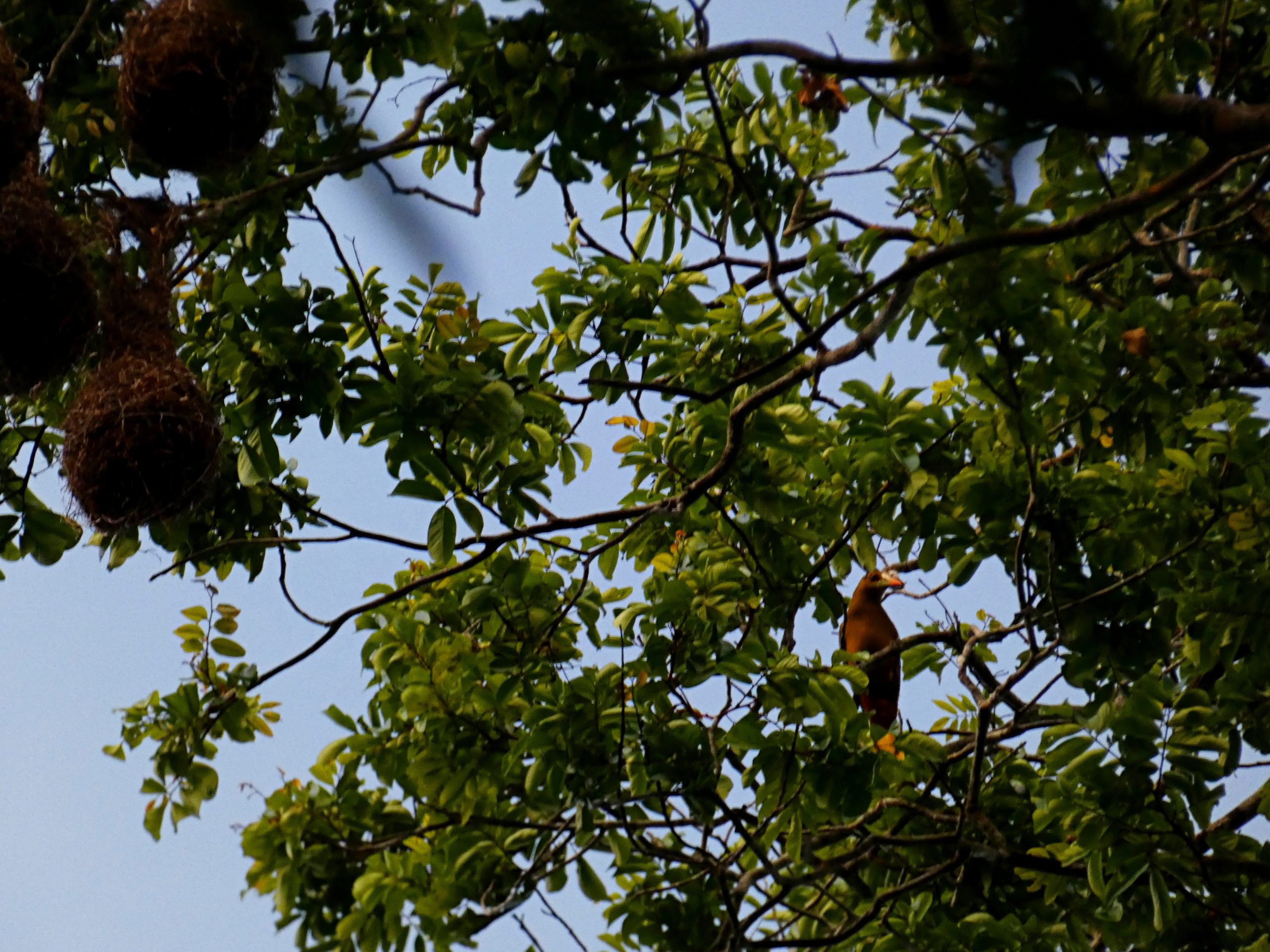
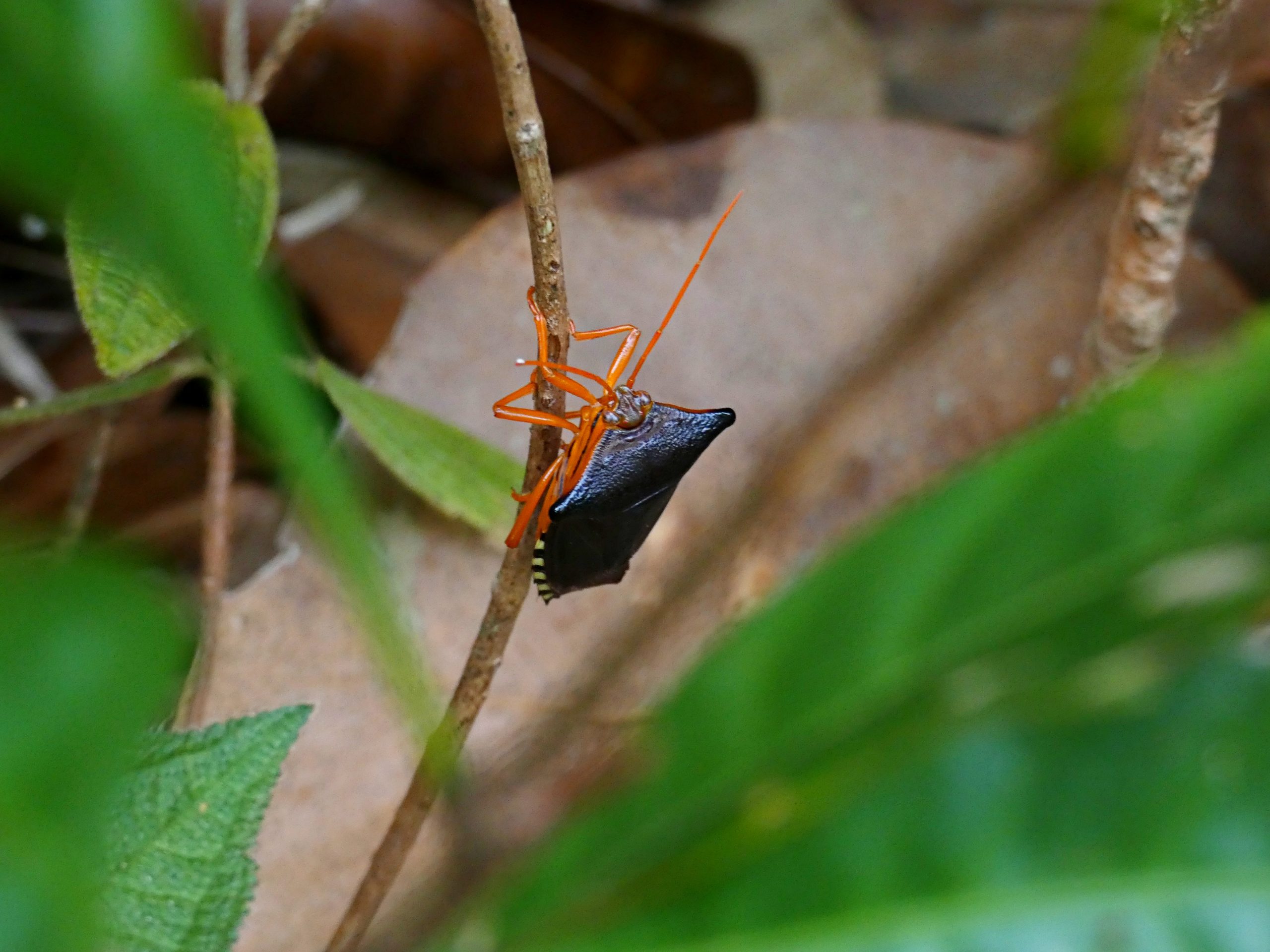
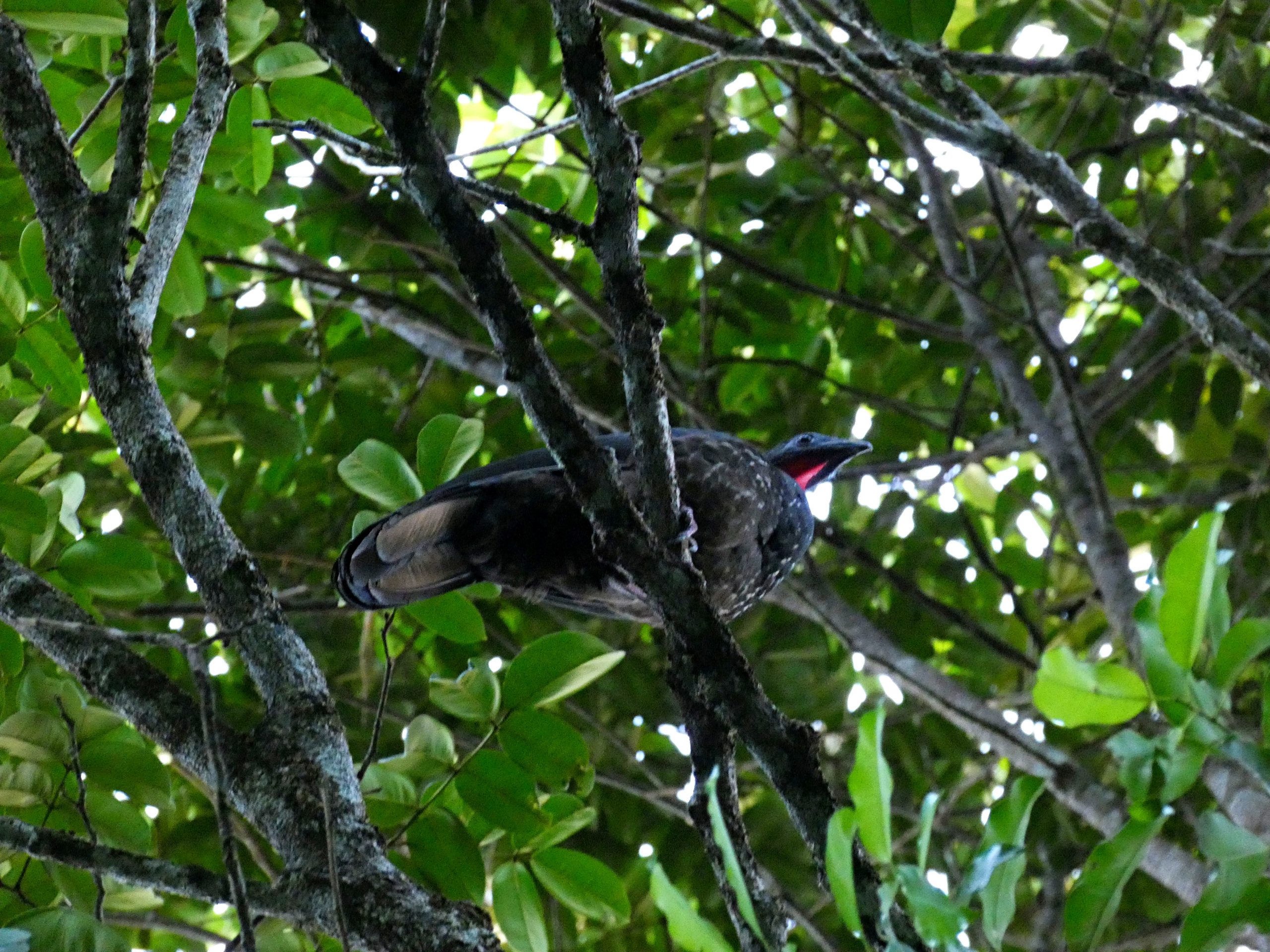
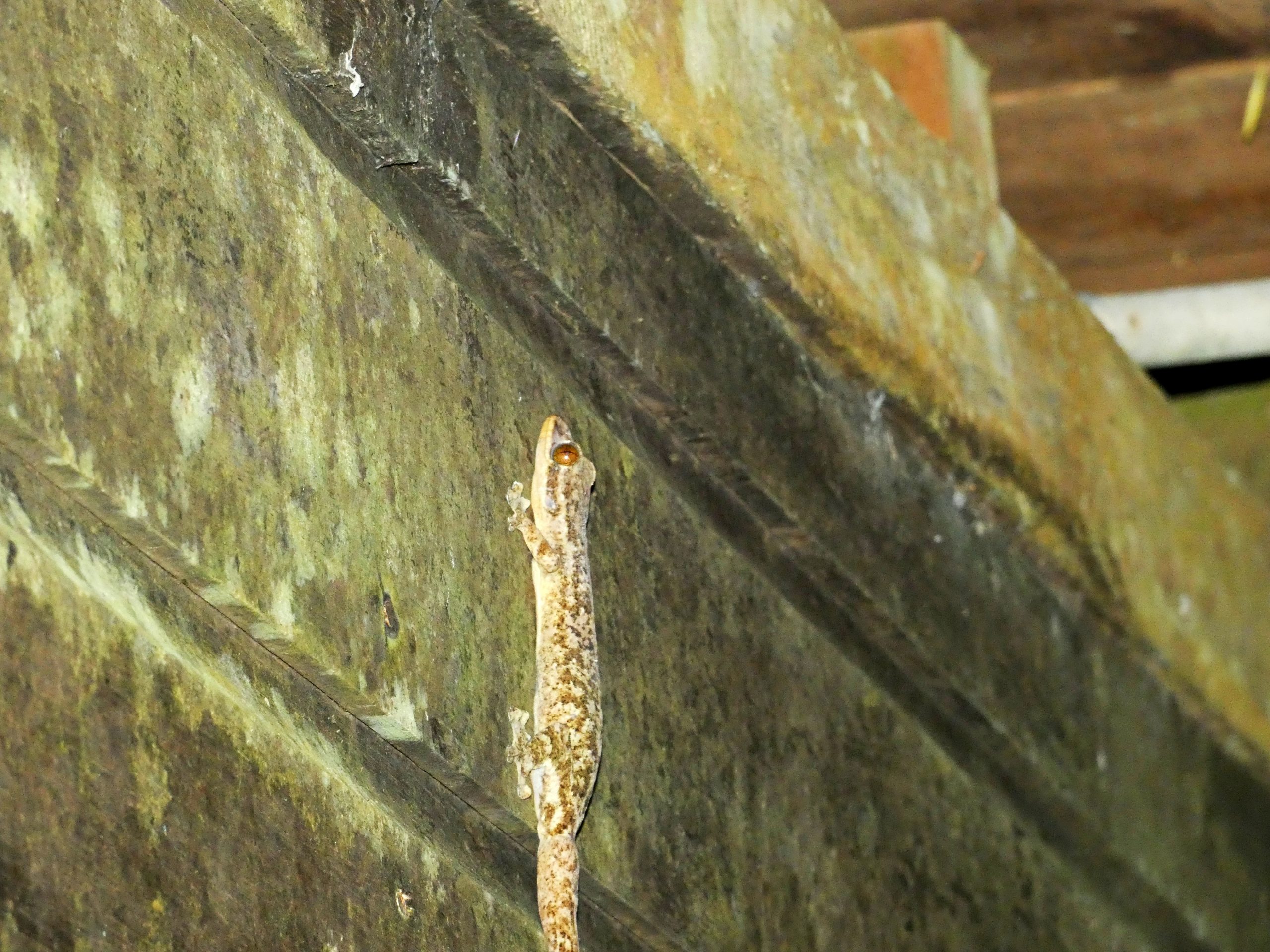
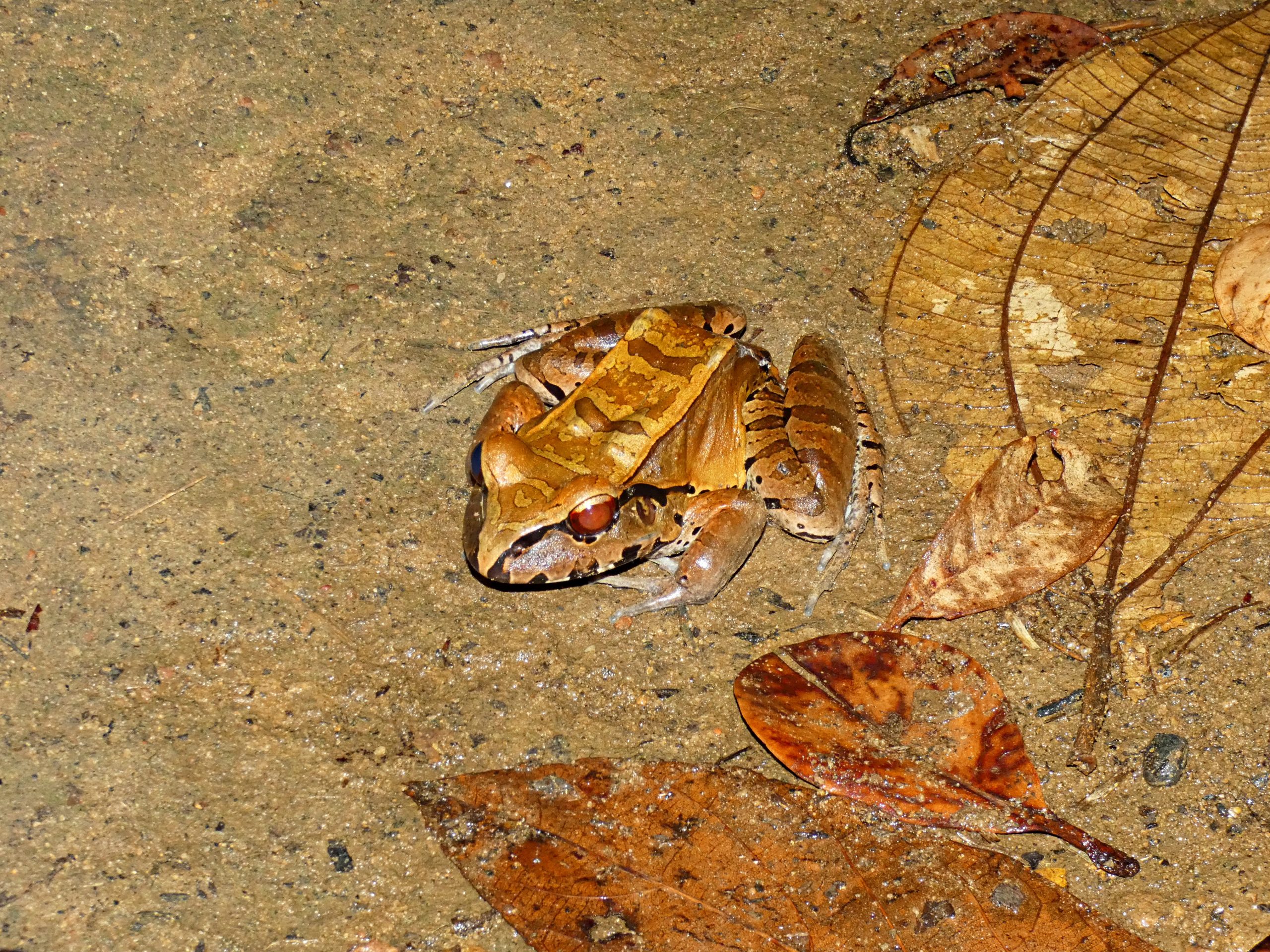
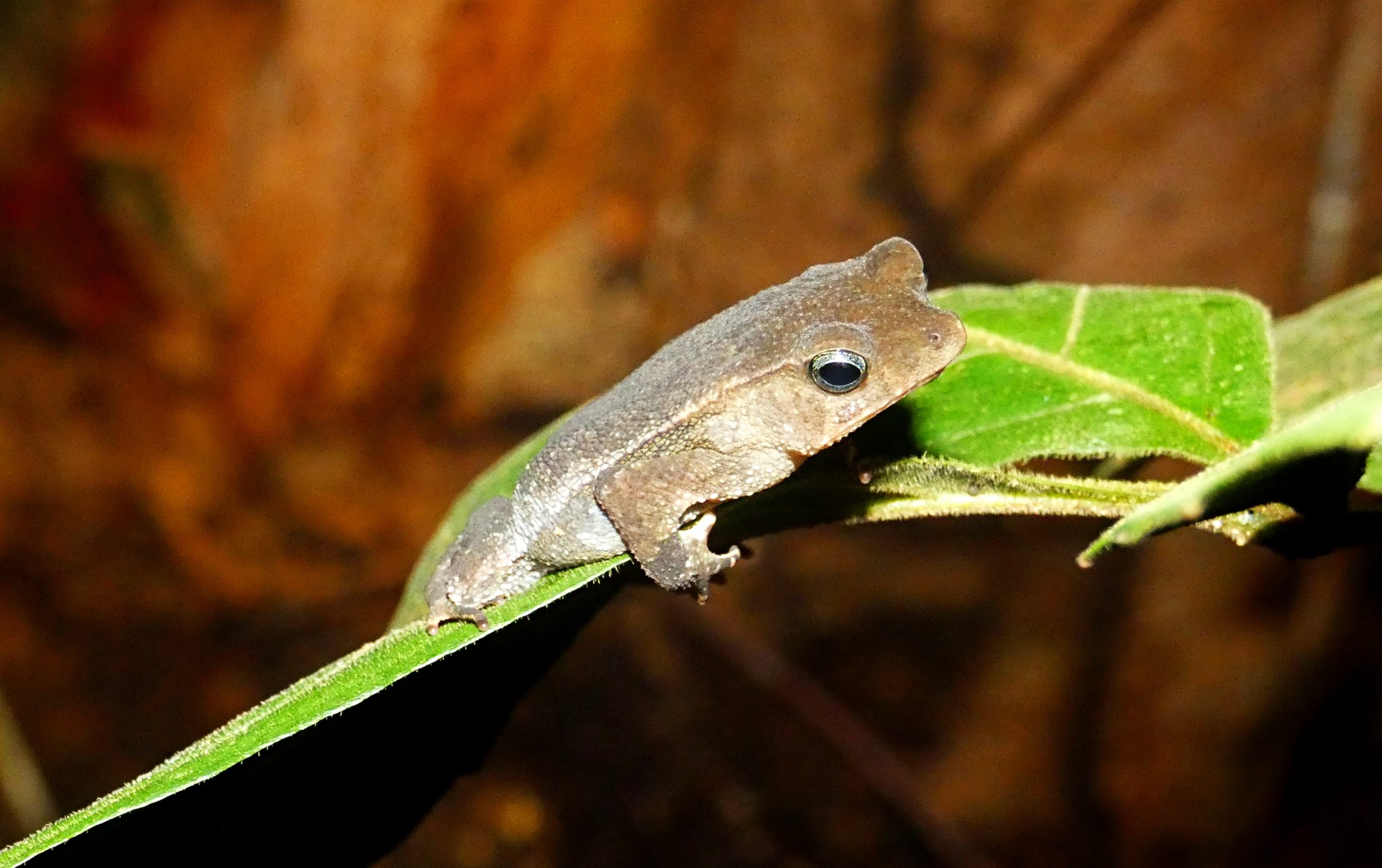
Natural environment and the Inselberg
By far the most breathtaking and amazing location I’ve been to, the Amazon and all its elements are on full display in Nouragues. With basically no light pollution the sky is extremely beautiful during the night with full moons and stars being shockingly visible and clear. On nights with no clouds, the extent to which you can see is enormous.

The Inselberg mountain itself was an unexpected addition to the trip but one which I am very grateful to have experienced. A granite mountain of approximately 420m, it overlooked our camp and provided a constant background to our stay. On one of the last days of our stay we set aside some time to climb it so that we could see the sunset and it was a spectacular sight.

Seeing the Amazon from atop the flux tower in Paracou was great. Flying over it in the helicopter was intense and exciting and was definitely the most fun way to see it. But seeing it from the top of the Inselberg was an entirely different experience all together. To say it was breathtaking is an understatement and the pictures truly don’t do it justice. Looking out at the uninterrupted and untouched forest that went on for miles and miles from an area which few humans had stood before, and even less get the privilege to explore, provided a new perspective on where we were and exactly what we were doing.
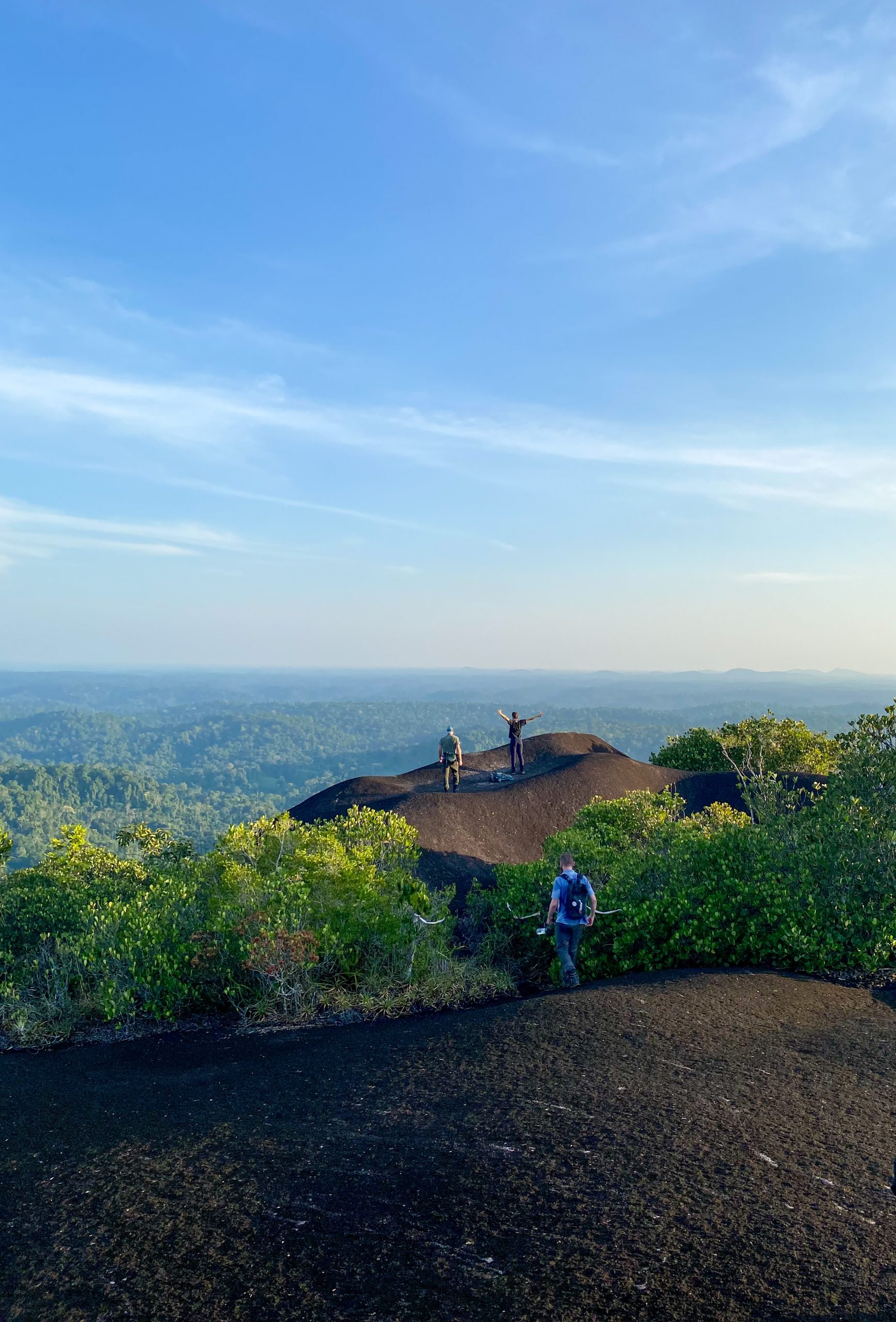
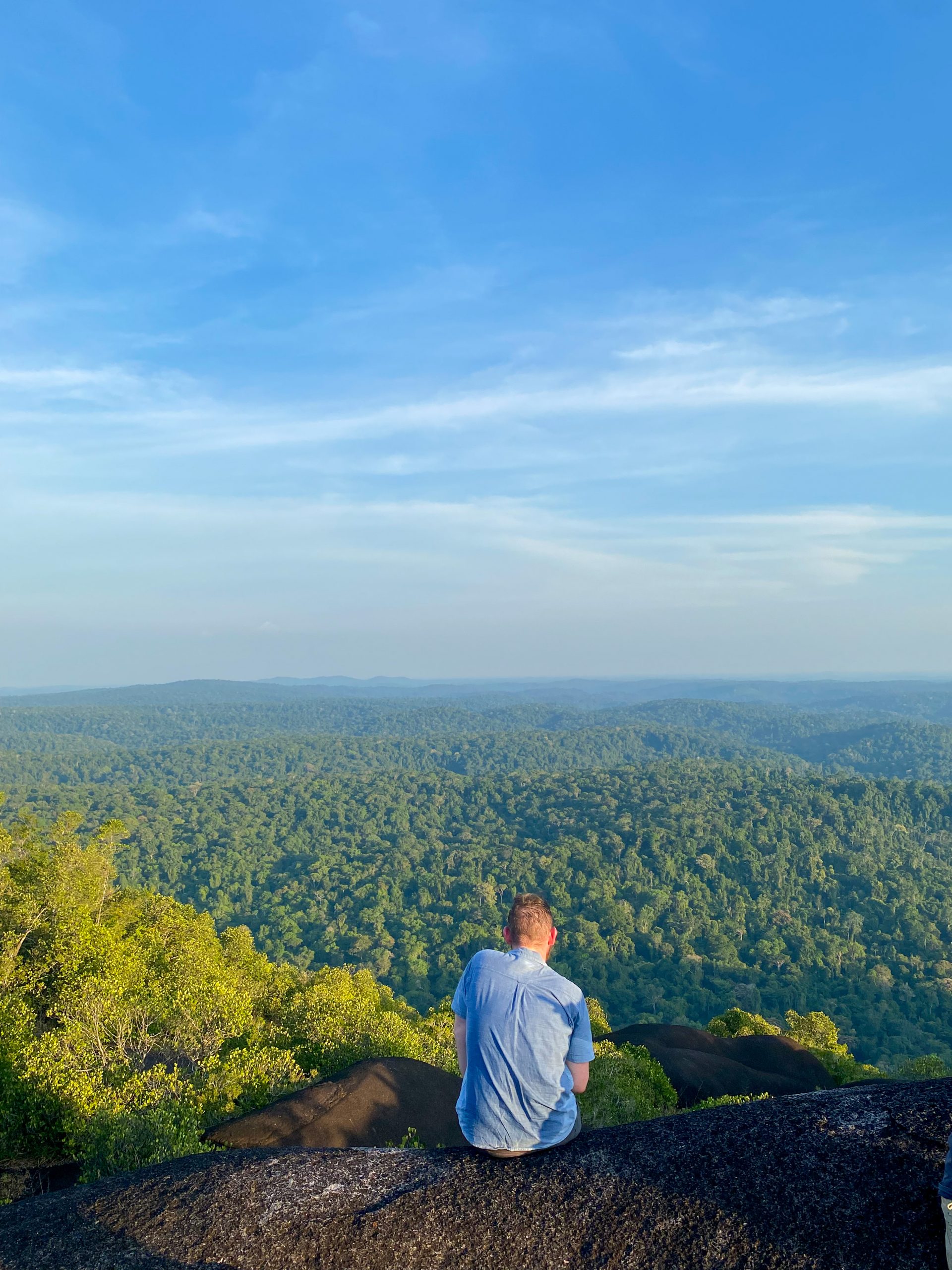
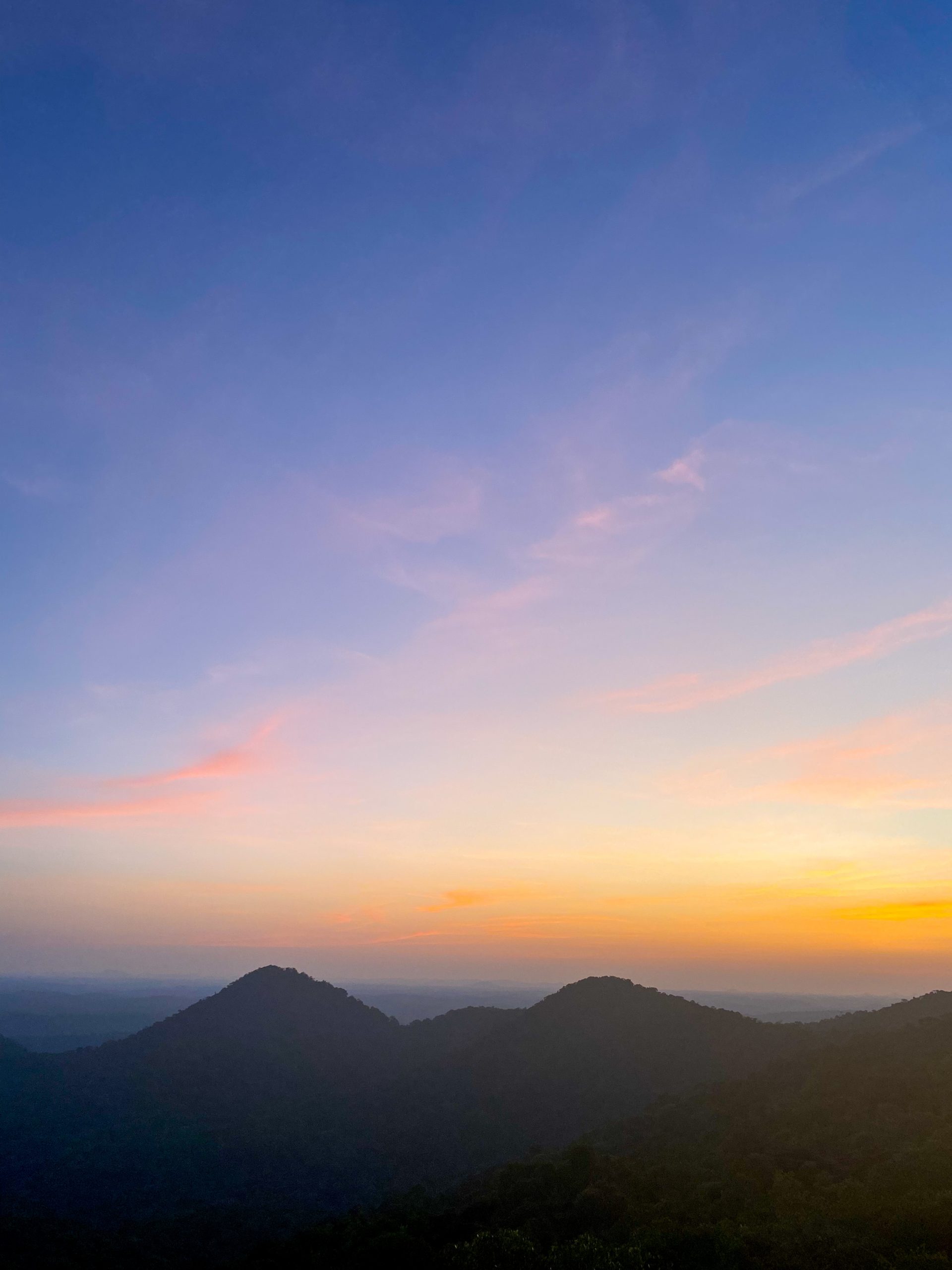
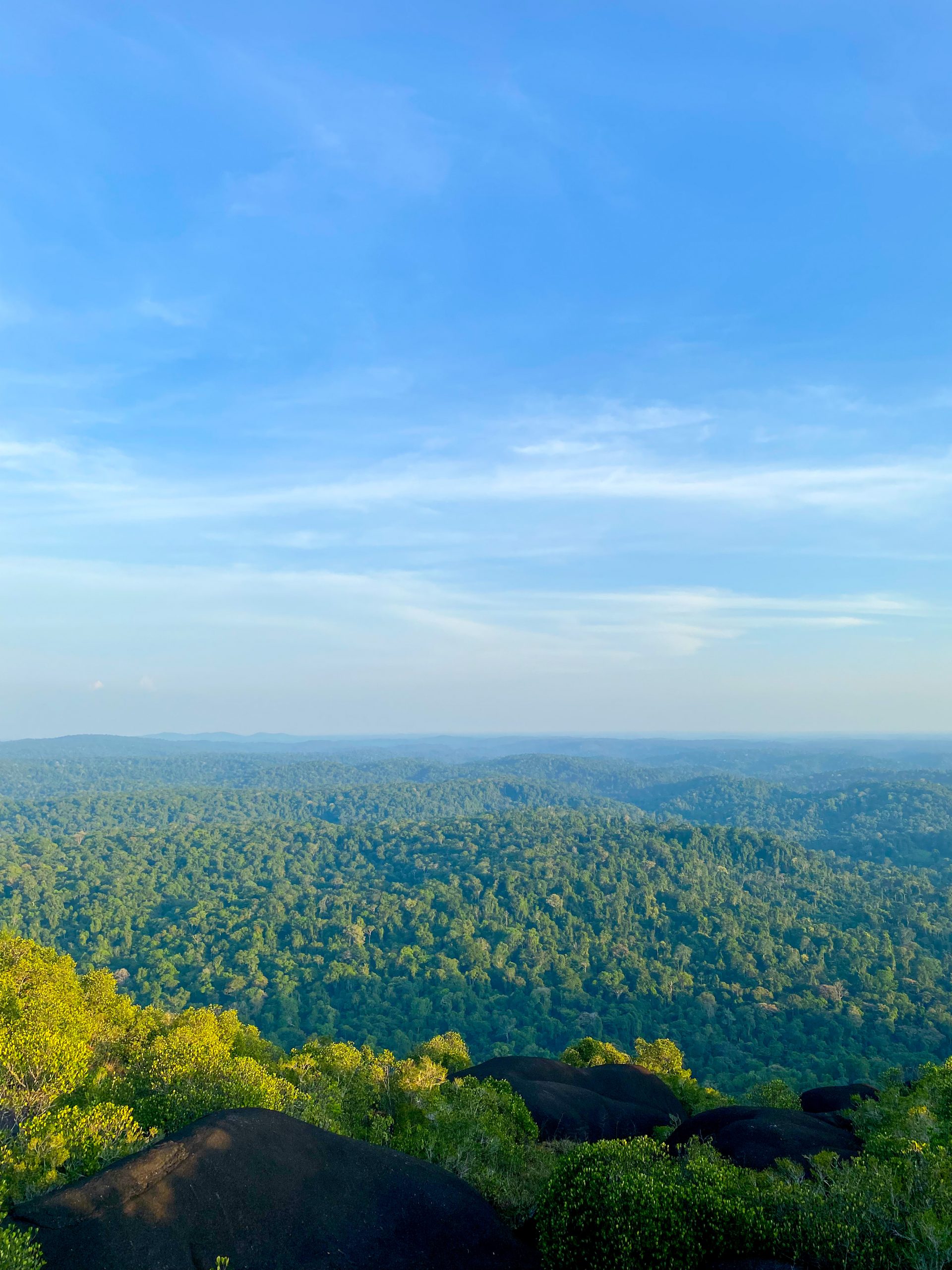
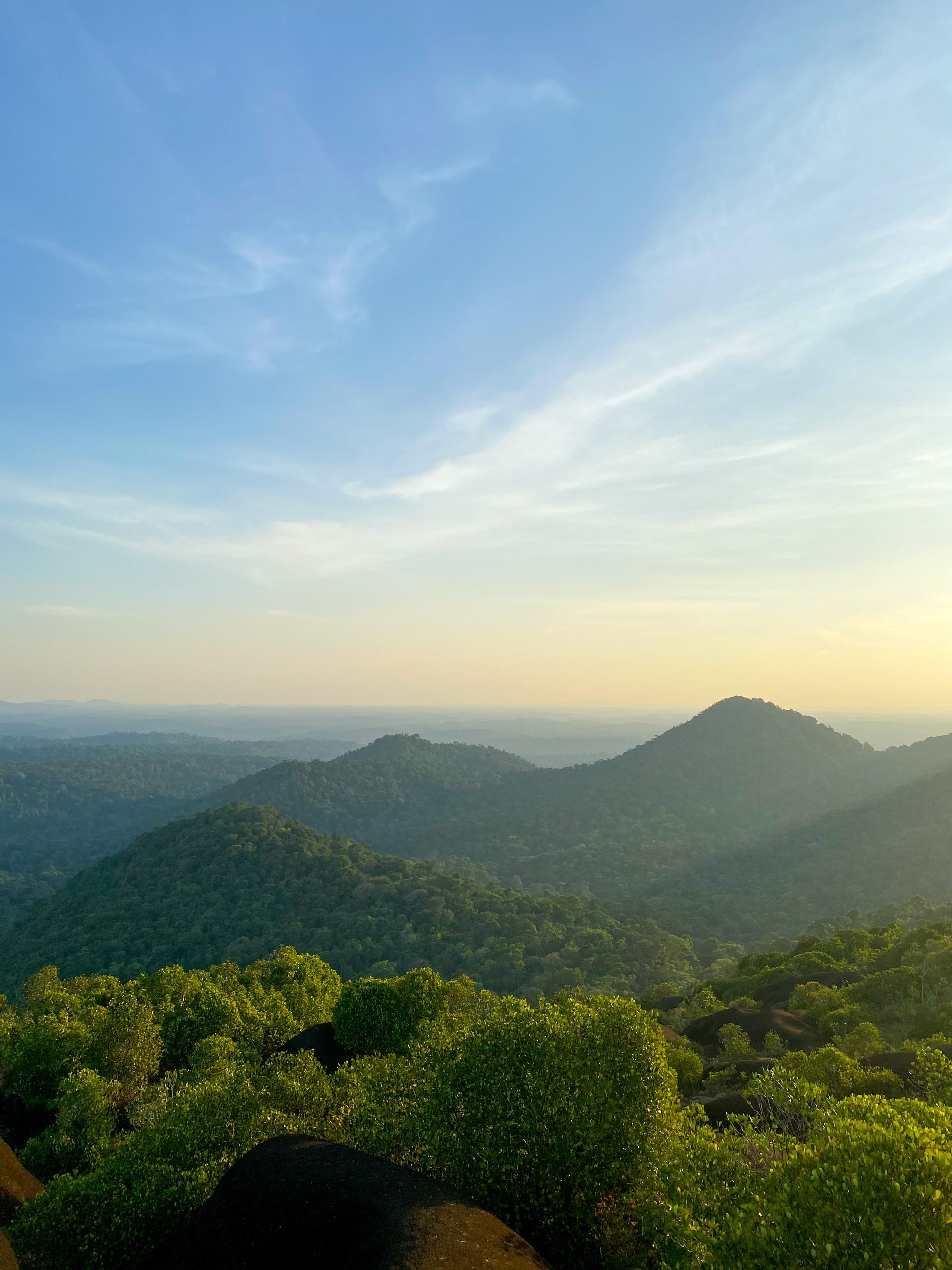
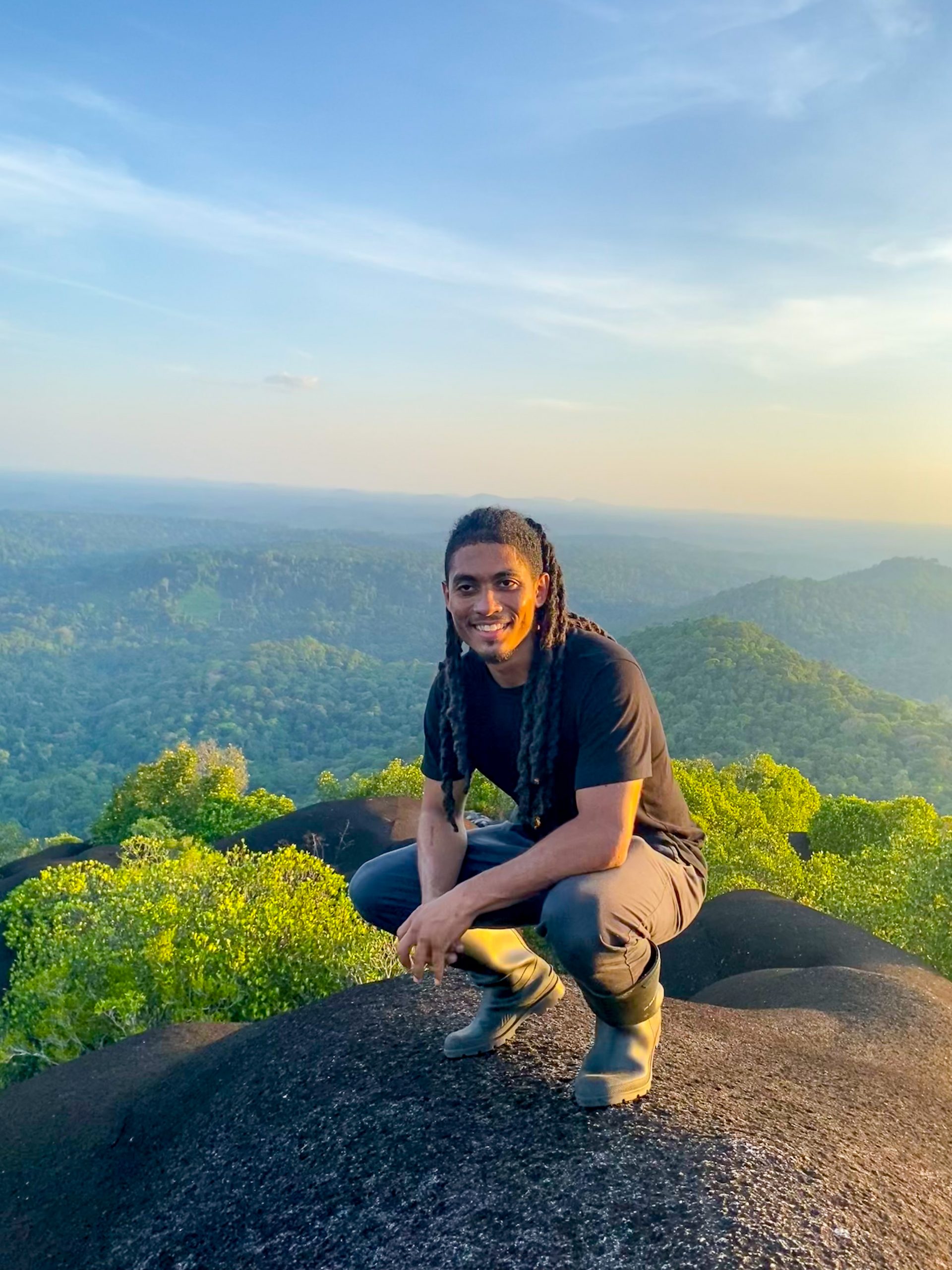
Watching the sun set over such a vast area, experiencing the sounds and the noises of the animals within the forest and atop the canopy, and looking at the stars after the sun set emphasised just how small we are as a race and highlighted how large an impact we are having across the globe. That was the first time experiencing that for everyone on our team and we were all moved by the scene we were seeing and were in awe at just how cool it was.
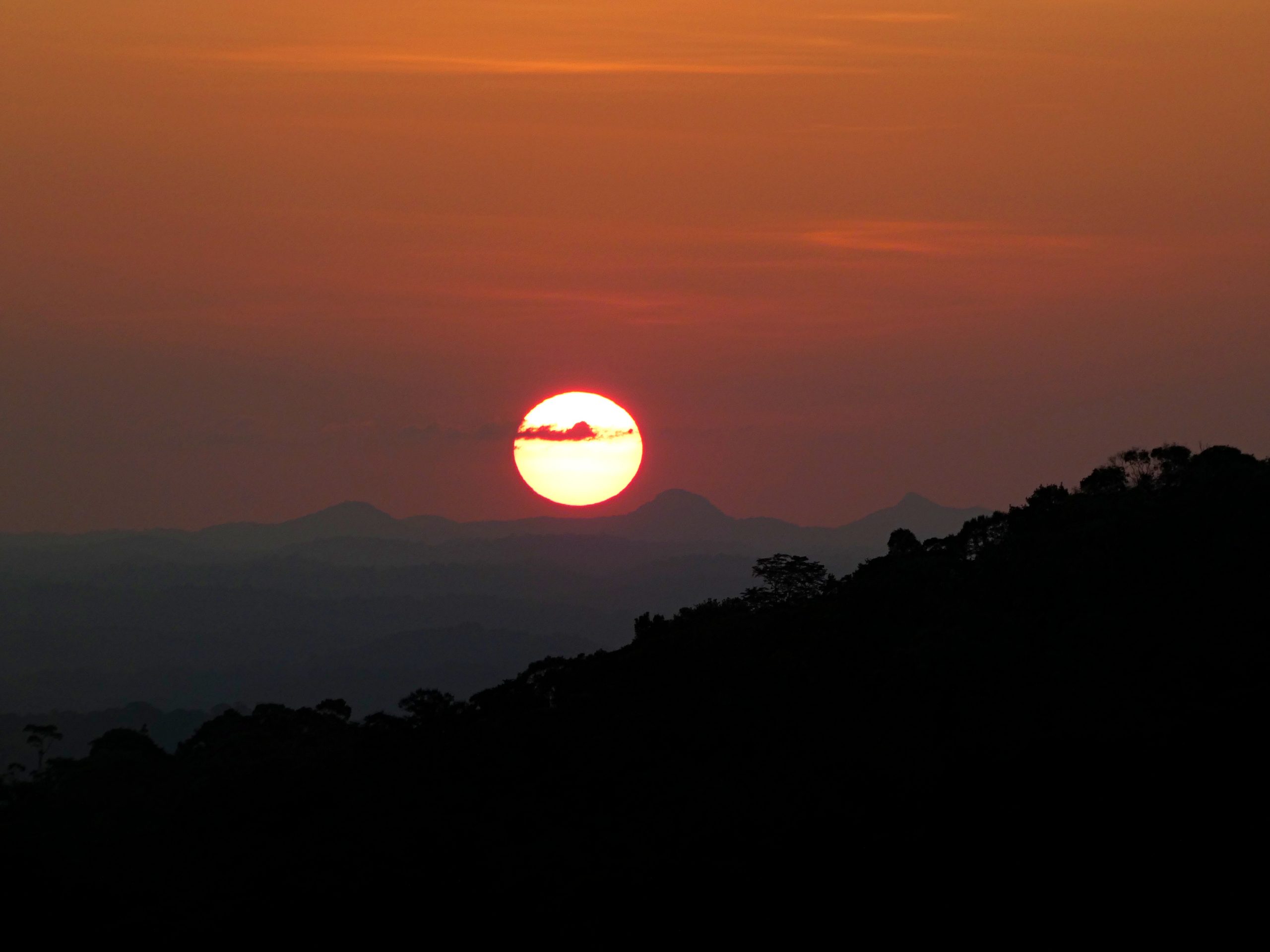
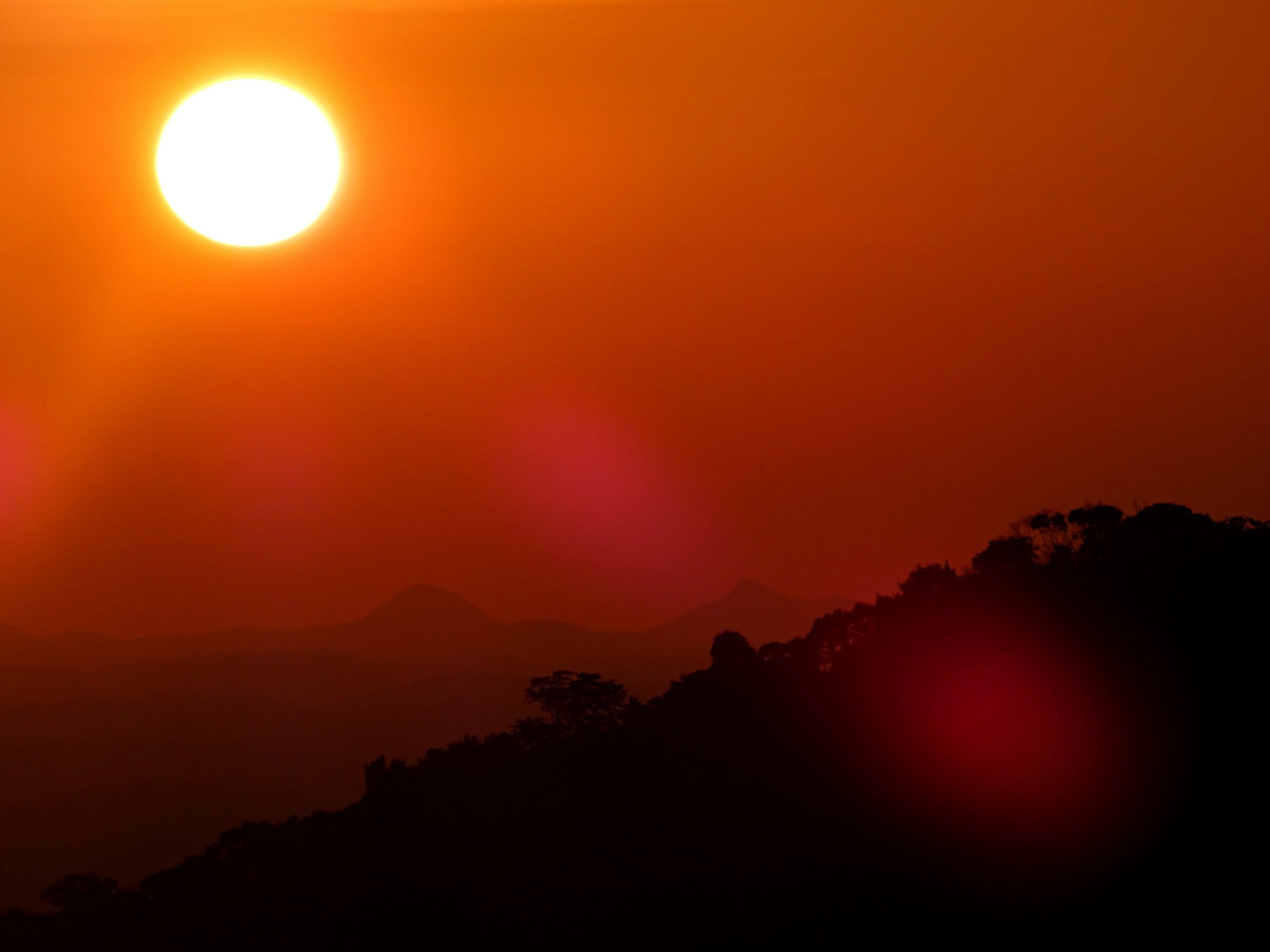
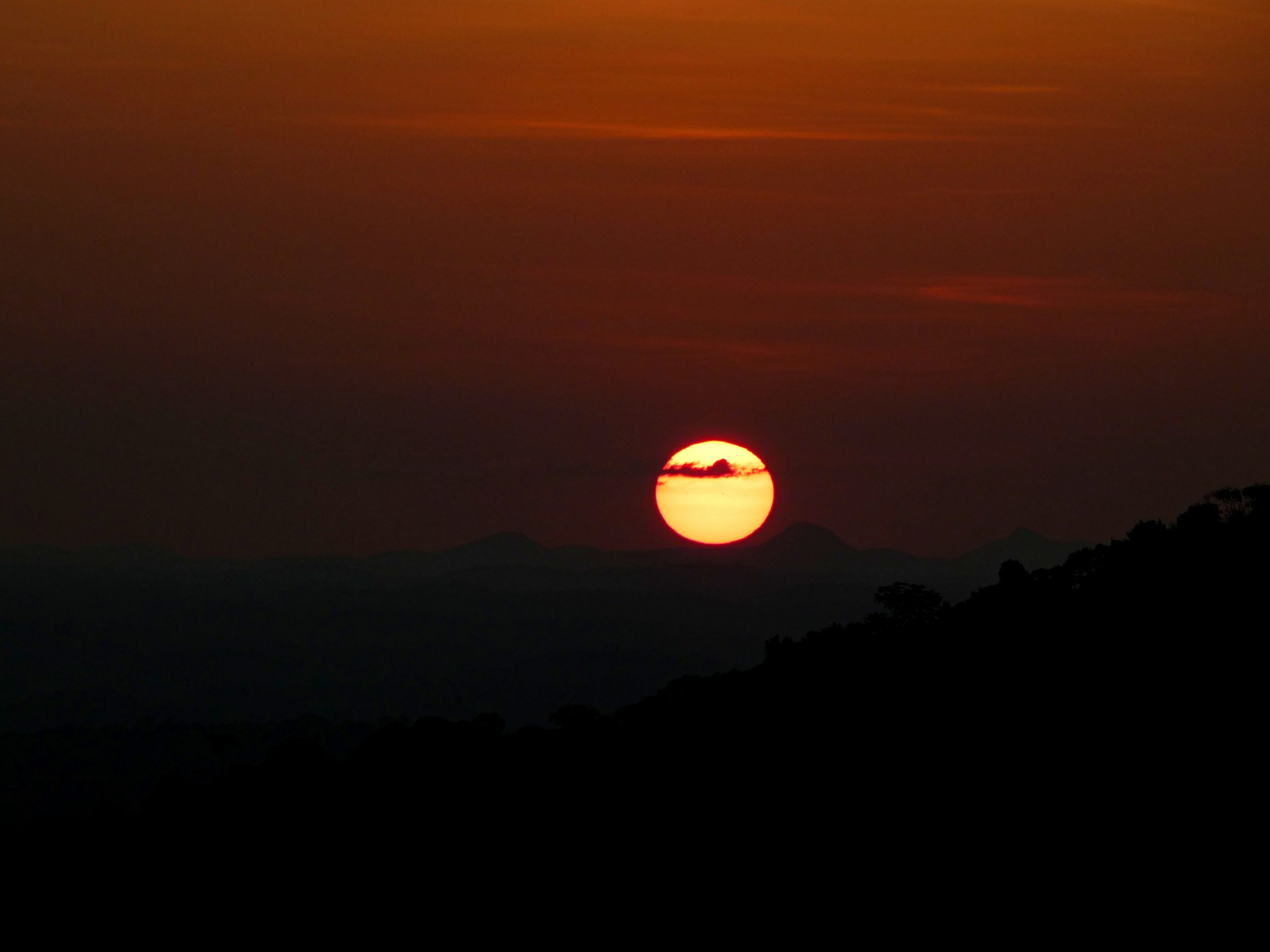
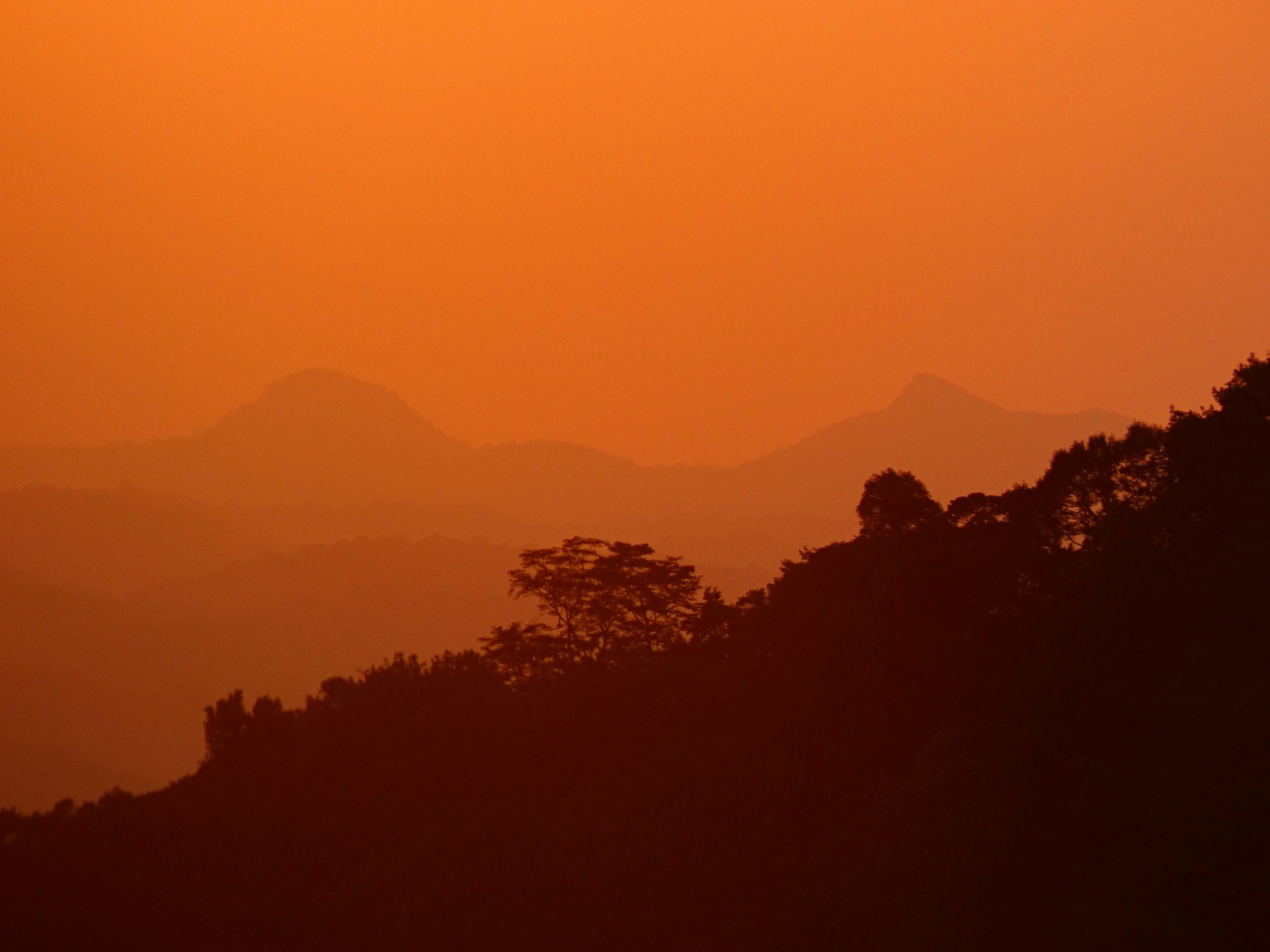
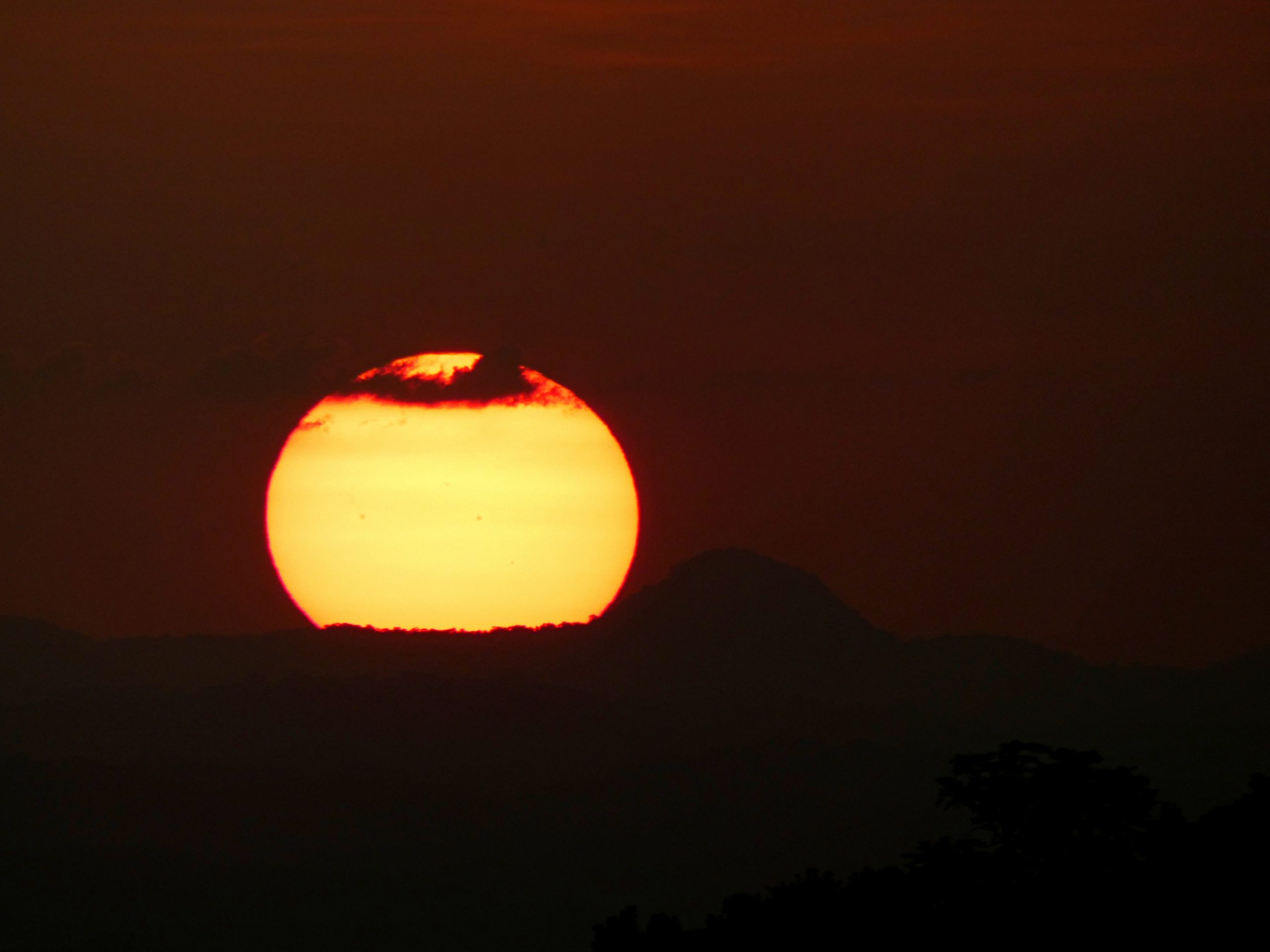
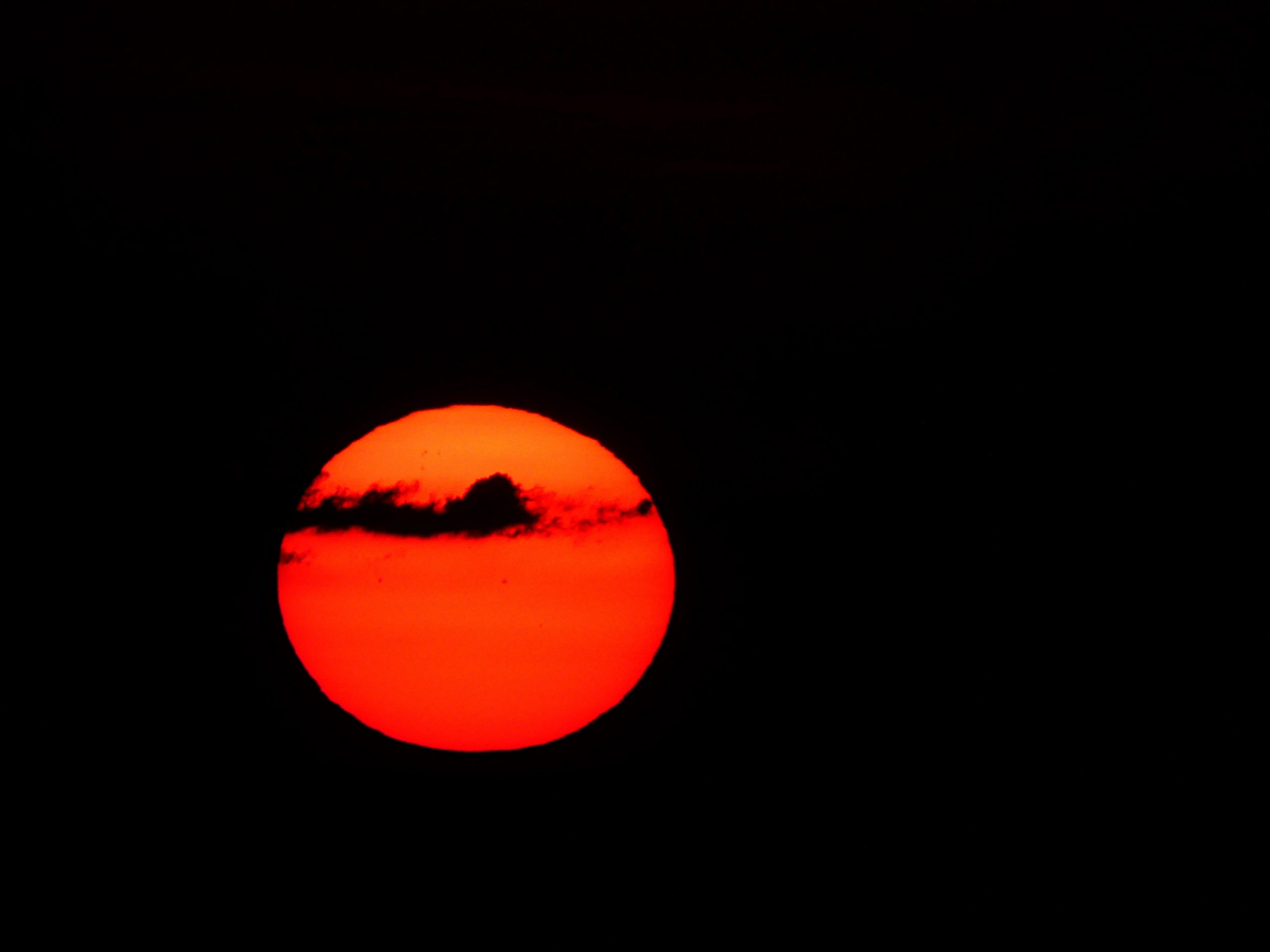
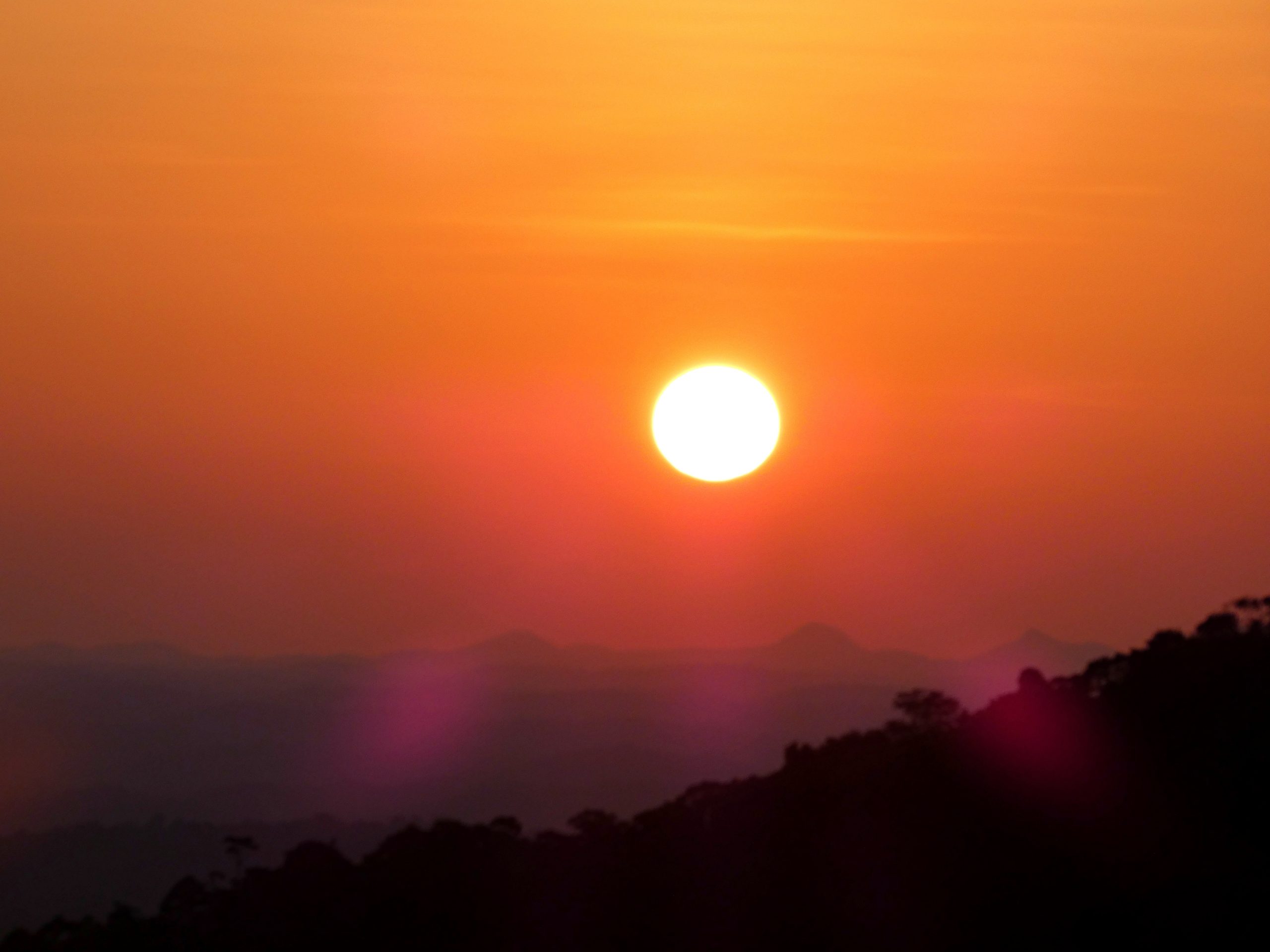
The remoteness and novelty of the Inselberg camp made it easily one of the most amazing experiences I’ve had. From taking a helicopter to get to the site, conducting research, exploring the forest and the inselberg, and seeing the wildlife, this was truly a unique experience and not one that can be easily replicated or topped.
Final thoughts
French Guiana is an amazing place. Complicated, diverse, dense with culture, history, and natural landscapes, French Guiana has a lot to offer. With European influences and South American climate and landscapes, French Guiana provides a unique opportunity for travellers and researchers alike. Having spent the better part of a month there, in both the cities and the jungle, I have a great deal of appreciation for the country and its uniqueness and was able to see lots of amazing things.
The star of the show, however, was definitely the Amazon. Before now it had simply been something you learn about in class or hear about online. It’s importance in the fight against climate change, indigenous communities and first peoples still living there, the amazing and diverse flora and fauna, the impact of deforestation and logging…these, and many others, are things I have been hearing and reading about for as long as I can remember, especially doing geography and science at school. And it didn’t disappoint. It was everything I expected and more, and I think the unique way in which I was able to experience it really played a part.
While many people are able to go to the Amazon on vacation or through guided tours, I was able to go as part of a research trip and experience aspects of it that many do not have the access to. Remote research stations and areas not open to the public was where we spent most of our time and were able to see many amazing things as a result. Being given the opportunity to conduct research in the Amazon rainforest is a privilege that is not lost on me and is an experience I will cherish and look back on with fondness.
I don’t know when I will be doing tropical fieldwork again but it’s something I would definitely do again and am looking forward to. Whether in French Guiana or another country, there is definitely a lot more to see and explore!





